PEPÉ LE PET
Skunks possess many desirable traits, yet their tendency to kick up a stink comes with a bad reputation. So, do skunks make good pets?
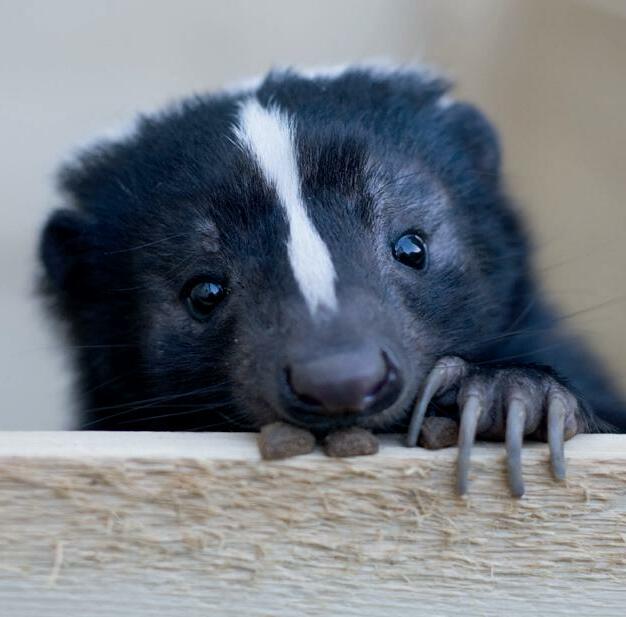
WANT TO WORK WITH REPTILES?
We have compiled some advice for anyone, at any age, seeking a career with reptiles and amphibians.

some genera of jumping spider also have very complex courtship habits.
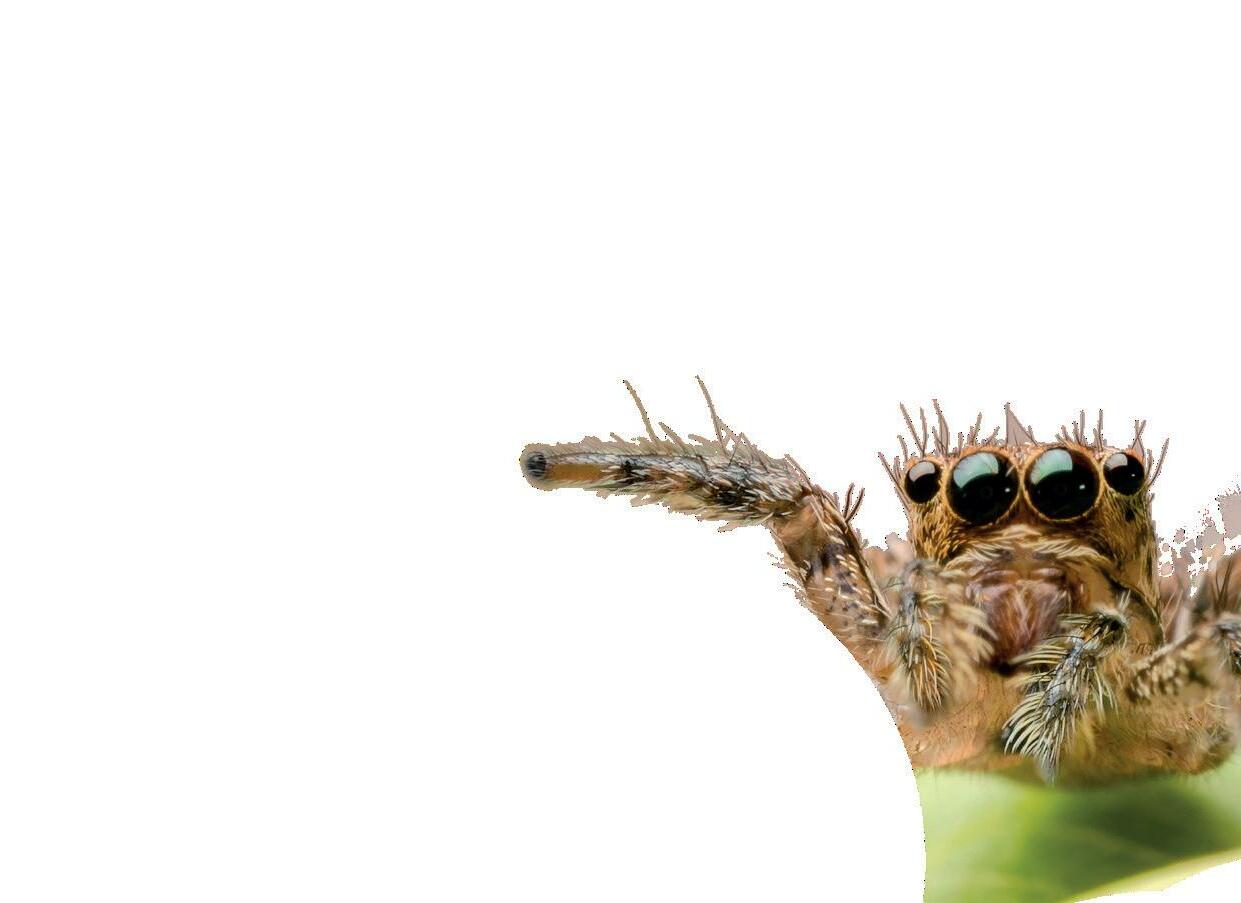
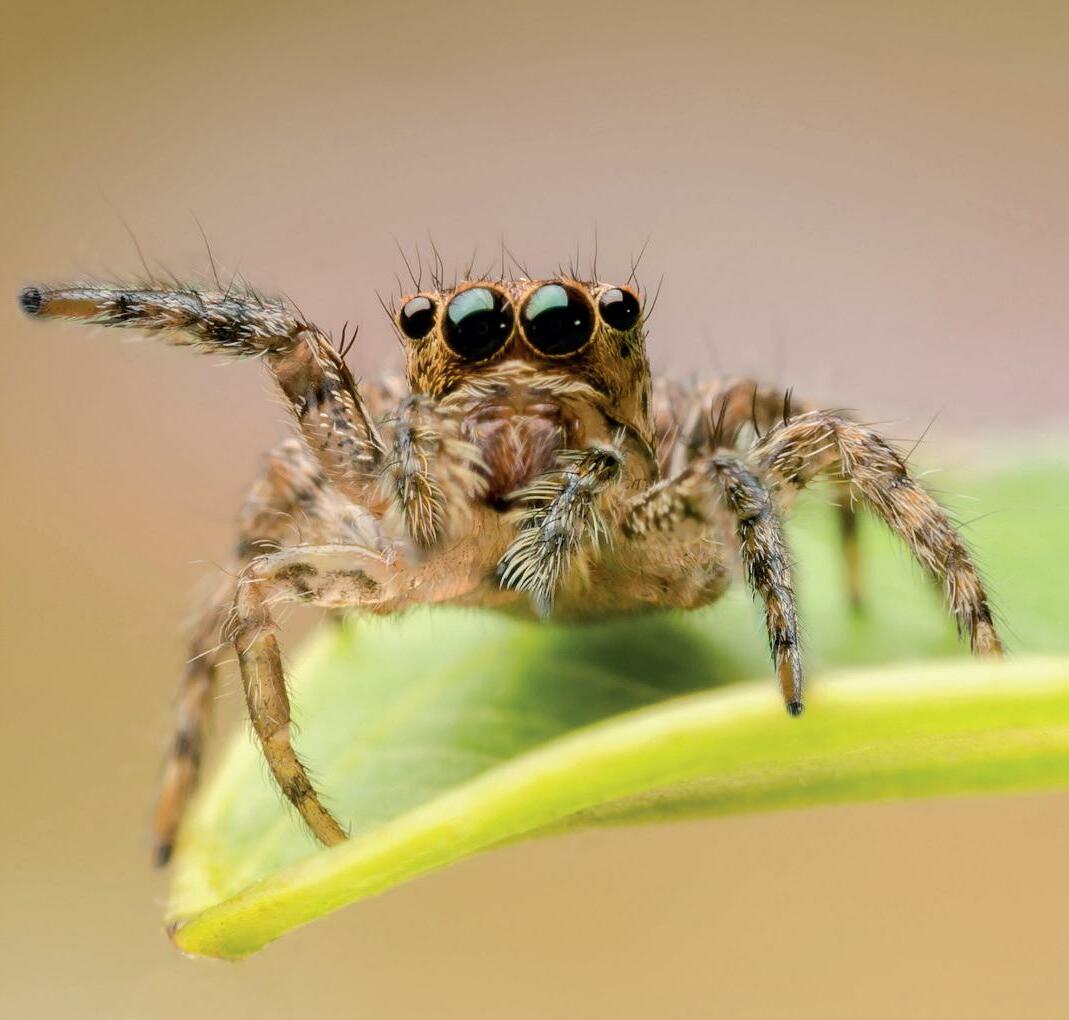
NEWS • CALCI-WORMS FOR HUMANS • KEEPER BASICS - SUPPLEMENTS • SNAPPING TURTLE www.exoticskeeper.com • january 2022 • £3.99 OUT OF THE DARK, INTO THE LIGHT Providing UV for Zone 1 animals
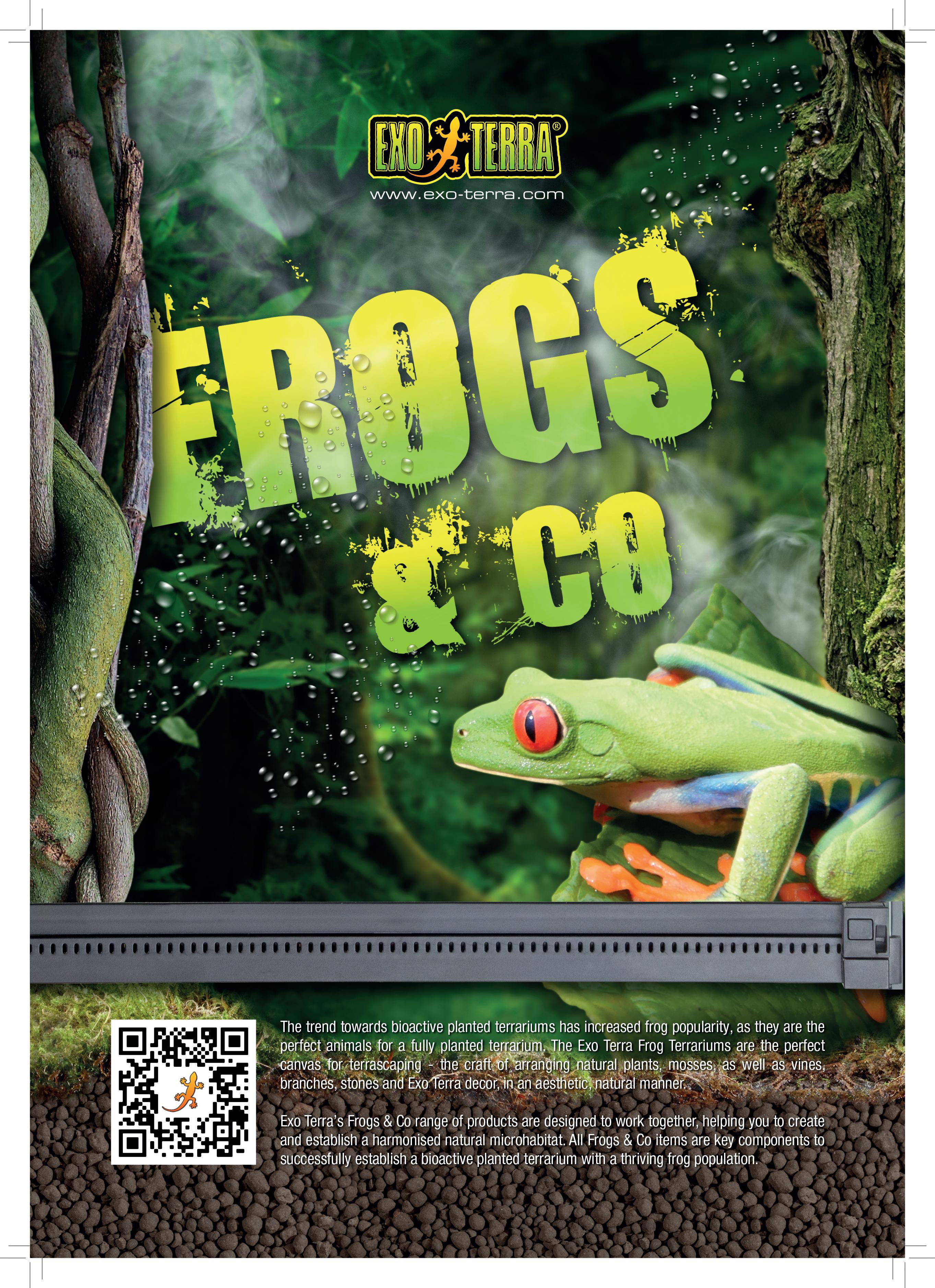
CONTACT US
EDITORIAL ENQUIRIES hello@exoticskeeper.com
SYNDICATION & PERMISSIONS scott@exoticskeeper.com
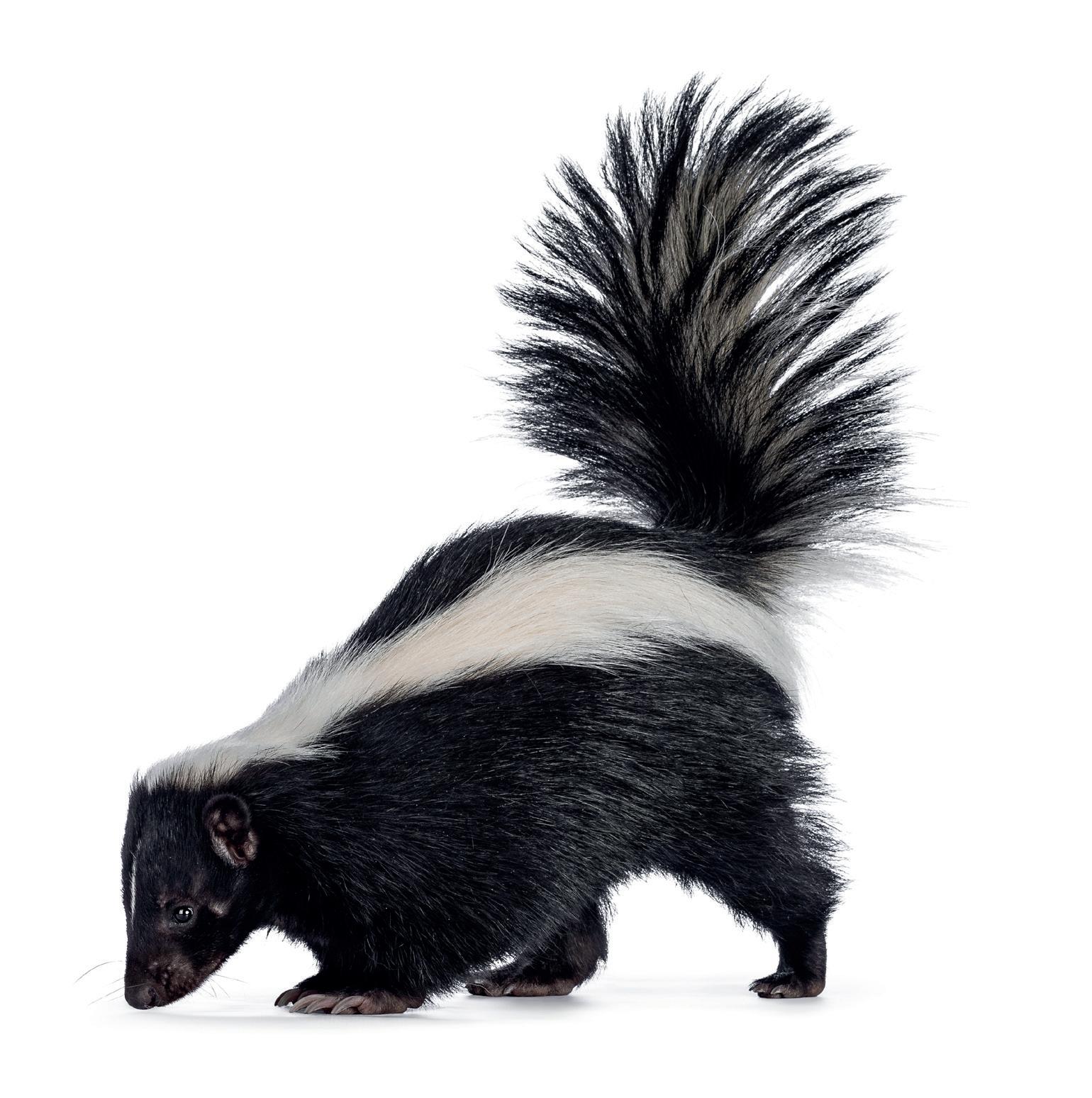
ADVERTISING advertising@exoticskeeper.com
About us
MAGAZINE PUBLISHED BY Peregrine Livefoods Ltd

Rolls Farm Barns Hastingwood Road Essex CM5 0EN
Print ISSN: 2634-4685 Digital ISSN: 2634-4688
EDITORIAL: Thomas Marriott Aimee Jones

Happy New Year to all our readers! At the time of writing, the British government are putting together a plan to tackle the Omicron variant, meaning this Christmas could have gone one of two ways. Regardless of the decision they make/made, I hope that everyone enjoyed the festive period as best they could.
As we welcome in a new year, we look at new beginnings in the world of exotics keeping. Personally, I found developing a career in herpetology to be an extremely daunting task when I was growing up. In actual fact, there’s loads of routes into working with reptiles and amphibians, so we’ve comprised a feature full of advice on turning a hobby into a career – be sure to check out the accompanying video of Shuttleworth College on our social media too!
We are currently in the process of putting together a calendar of UK shows and meet ups and hope to see many of you throughout 2022. If you have a group/society/show scheduled in this year, please let us know so we can spread the word.
Thank you,
Subscriptions
Follow us

Every effort is made to ensure the material published in EK Magazine is reliable and accurate. However, the publisher can accept no responsibility for the claims made by advertisers, manufacturers or contributors. Readers are advised to check any claims themselves before acting on this advice. Copyright belongs to the publishers and no part of the magazine can be reproduced without written permission.
Along the line of new beginnings, we have also reduced the font size, meaning even more content is crammed into each issue! Our recurring features are much more practical, giving new hobbyists a better start and hopefully meeting our goal of improving exotic animal welfare. Front
DESIGN: Scott Giarnese Amy Mather
(
(
)
cover: Green tree python
Morelia viridis) Right: Striped skunk
Mephitis mephitis
Thomas Marriott Features Editor

AVAILABLE NOW Pinkies 1g+ | Pinkies 1g+ | Pinkies 1g+ | Large Pinkies 2g+ | 10 Pack Large Pinkies 2g+ | Large Pinkies 2g+ Fuzzies 4g+ | Fuzzies 4g+ | Fuzzies 4g+ | Hoppers 6g+ | Small 10g+ | Small/Medium 15g+ | Medium 19g+ Medium/Large 23g+ | Large 26g+ | Extra Large 30g+ Ex-Breeder 35g+ | Ex-Breeder 40g+ Rat Pups 4g+ | Fuzzies 12g+ | Hoppers Small 20g+ | Weaner Small 30g+ | Weaner Medium 50g+ Weaner Large 70g+ | Small 100g+ | Small/Medium 130g+ | Medium 160g+ | Medium/Large 200g+ | Large 250g+ Extra Large 300g+ | Jumbo 350g+ 5 pack | Ex-Breeder 400g+ | Ex-Breeder 450g | Ex-Breeder 500g
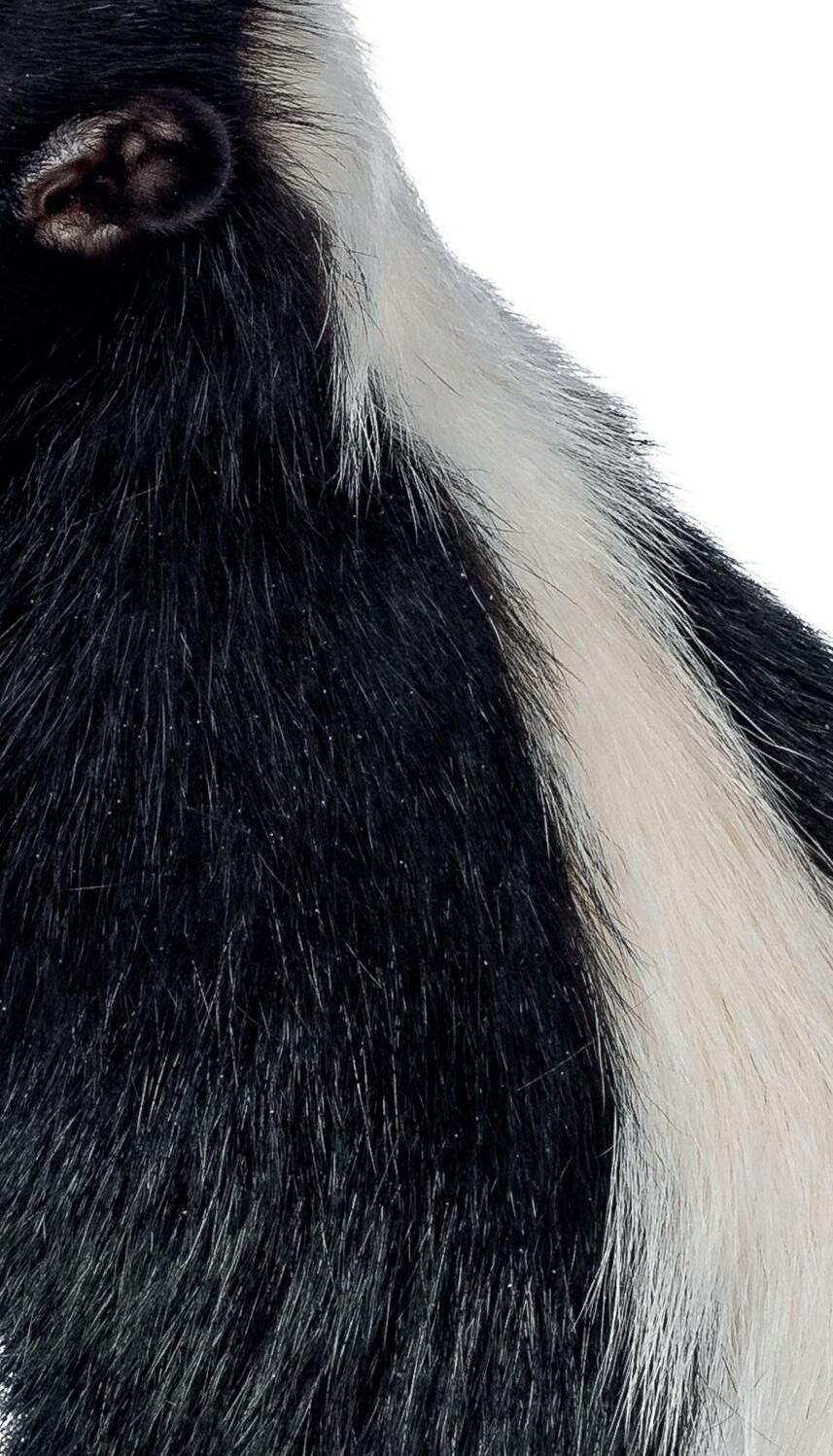
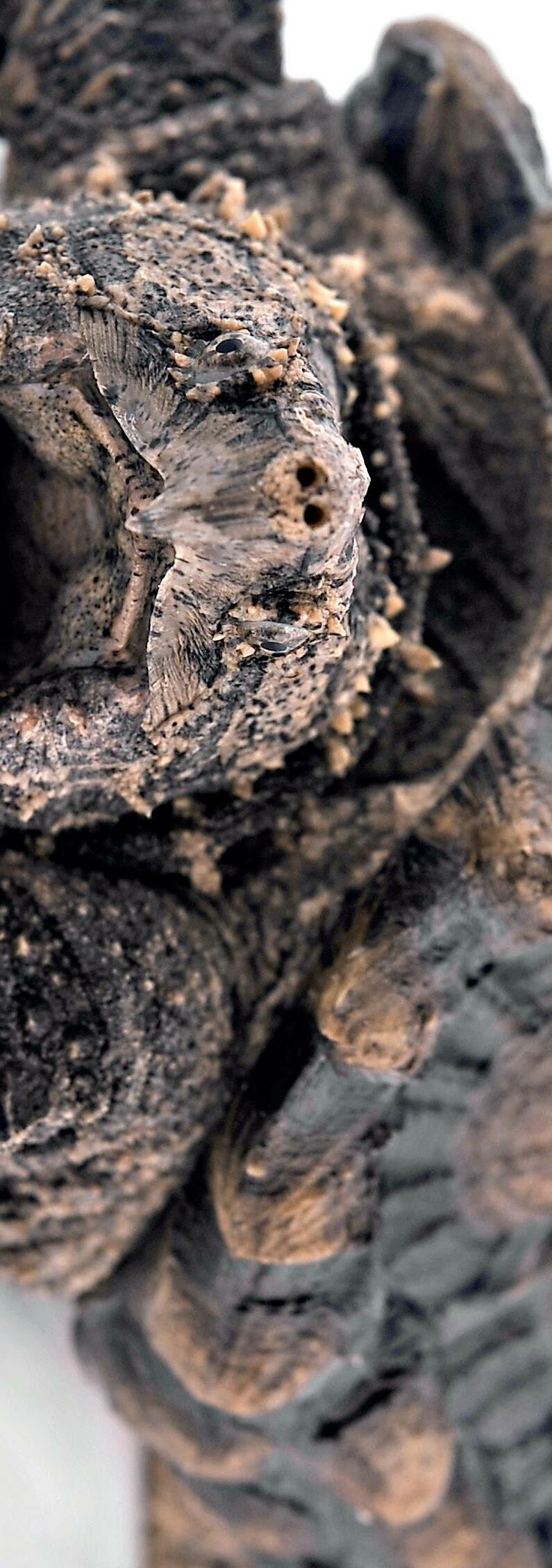





02 06 10 02 EXOTICS NEWS The latest from the world of exotic pet keeping. 06 DATING ON THE WEB It’s tough love for jumping spiders. 10 SPECIES SPOTLIGHT Focus on the wonderful world of exotic pets. This month it’s the alligator snapping turtle (Mackrochelys temminckii). 11 SO, YOU WANT TO WORK WITH REPTILES? Advice in turning a hobby into a career. 20 PEPÉ LE PET Do skunks make good pets? 28 OUT OF THE DARK, INTO THE LIGHT Providing UV for Zone 1 animals. 37 KEEPER BASICS: The EK guide to food supplementation. 45 FASCINATING FACTS Did you know...? 46 ENRICHMENT IDEAS Monthly tips on how the enrich the life of you pet. 20 28 37
EXOTICS NEWS
The latest from the world of exotic animals
outside enclosure as part of the zoos continued development plans.
Monkey Record. At the Living Rainforest at Hampstead Norreys in Hampshire, female Goeldi`s monkey “Sooty” has sadly died at the remarkable record age of 28.5 years. Making her the oldest in the UK and the second oldest ever recorded in the International Studbook. She was born at Shaldon Wildlife Trust in 1993 and arrived in 1997. She produced nine sons with partner “Meeko” in the collection, five of which went on to other collections whilst four remained in the group.
Primate Eco-Dome
A First for Yorkshire Wildlife Park
A Venezuelan red howler monkey (Alouatta seniculus) has been born to female “Tila”, sired by “Geronimo”. The infant has been named “”Pablo” and the park believe this may be a UK first breeding of this race of red howler. (The Bolivian red howler was first bred at Twycross Zoo in 1989). The park hold 1.2 adults which are the only examples of their kind in the UK, the older female “Namid” has previously bred before, but outside the UK. There are currently six European zoos which hold these primates.
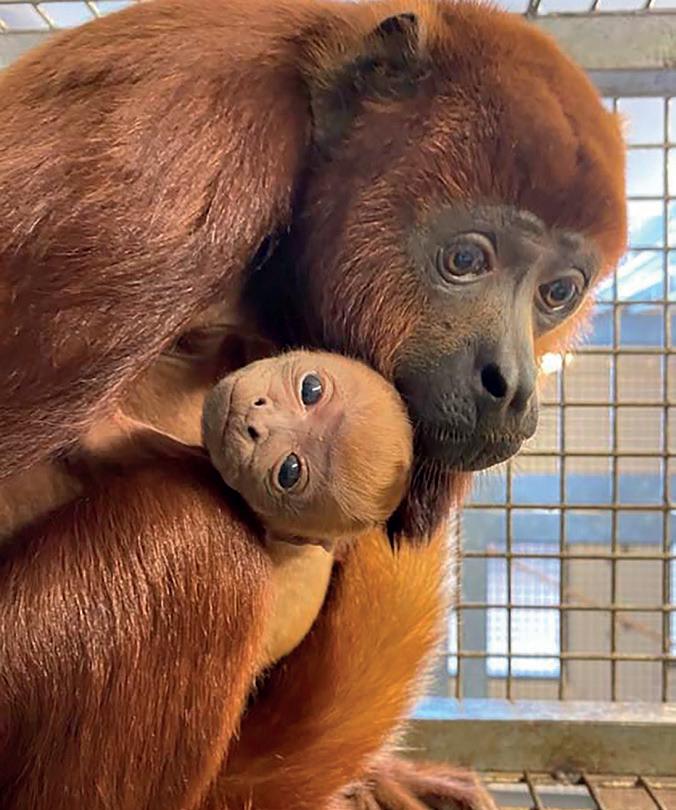
New Ape Arrival
As part of the EEP, 33 year-old male Bornean orang utan “Djimat” has arrived from Aalborg Zoo in Denmark, after a 30 – hour journey through Germany, the Netherlands, Belgium and France courtesy of Ventura Wildlife Services. This is the first great ape import since Brexit. Djimat will join females “Jazz” (29) and “Sprout” (10). The zoo also still hold 43 year-old male “Benji” although he has never bred. Currently work is on-going on their new outside enclosure which should be complete by the spring of 2022. At which time work will begin in 2024 on their former
The WildHeart Animal Sanctuary (Formerly the Isle of Wight Zoo) announced its crowd-funding appeal on the 1st October to help create two new sustainably built walk-through ecodomes to house “rescued primates”, “marrying contemporary design and traditional materials with cutting edge technologies in its construction”. Their design will be the first of its kind in Europe and work has just begun demolishing the old lemur enclosures that will make way for the new Primate Rescue Centre, so construction can begin in time for our grand opening in the Spring of 2022.
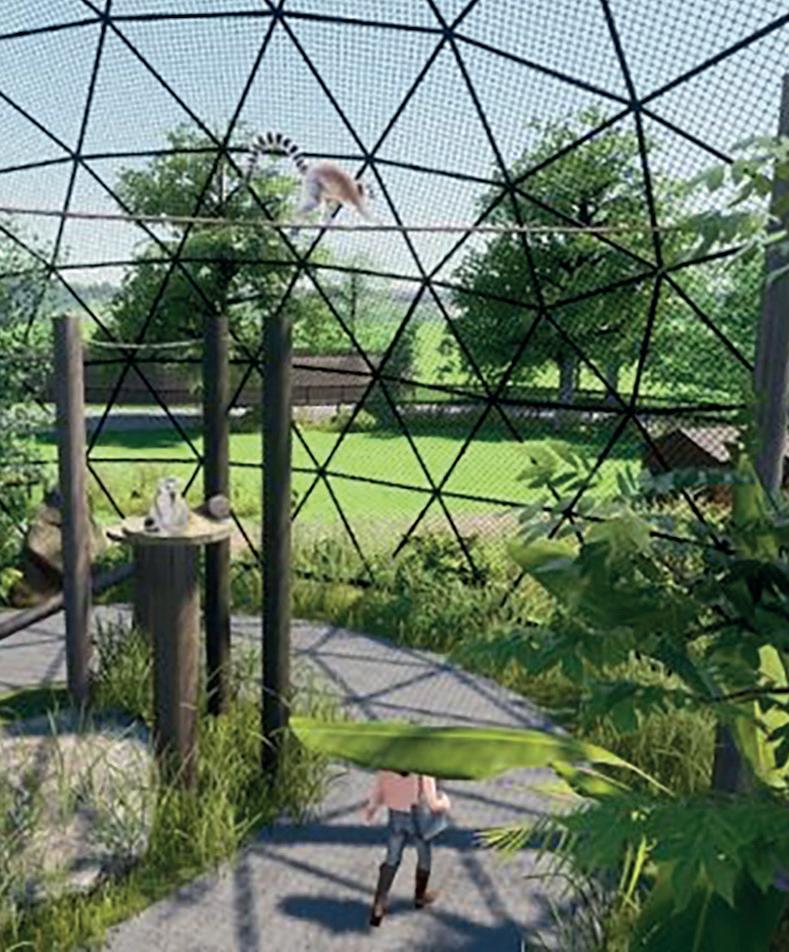
Trio of Turtles Hatch
Keepers at ZSL London Zoo are celebrating the hatching of three Critically Endangered big-headed turtles, whose parents were given a new home at the Reptile House after being rescued from the illegal wildlife trade.
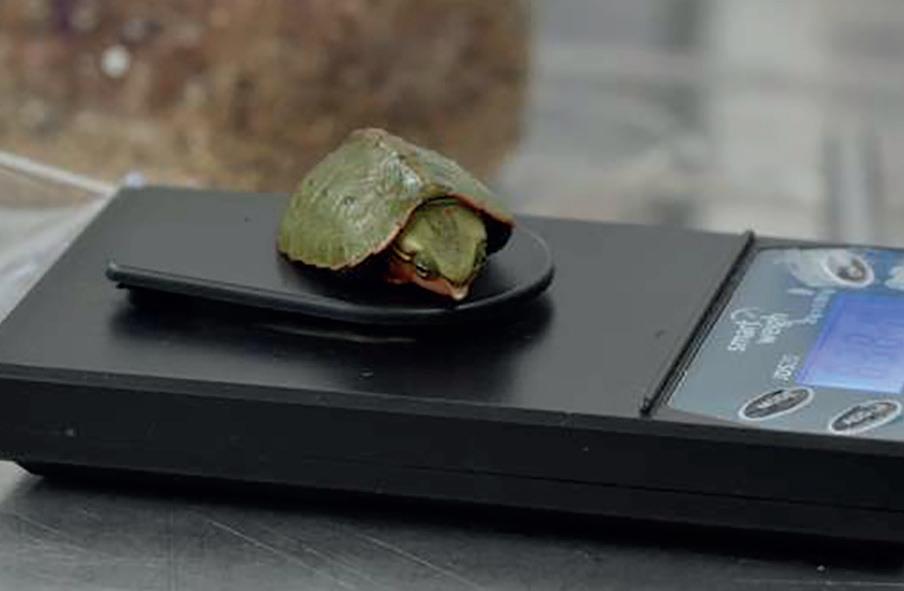
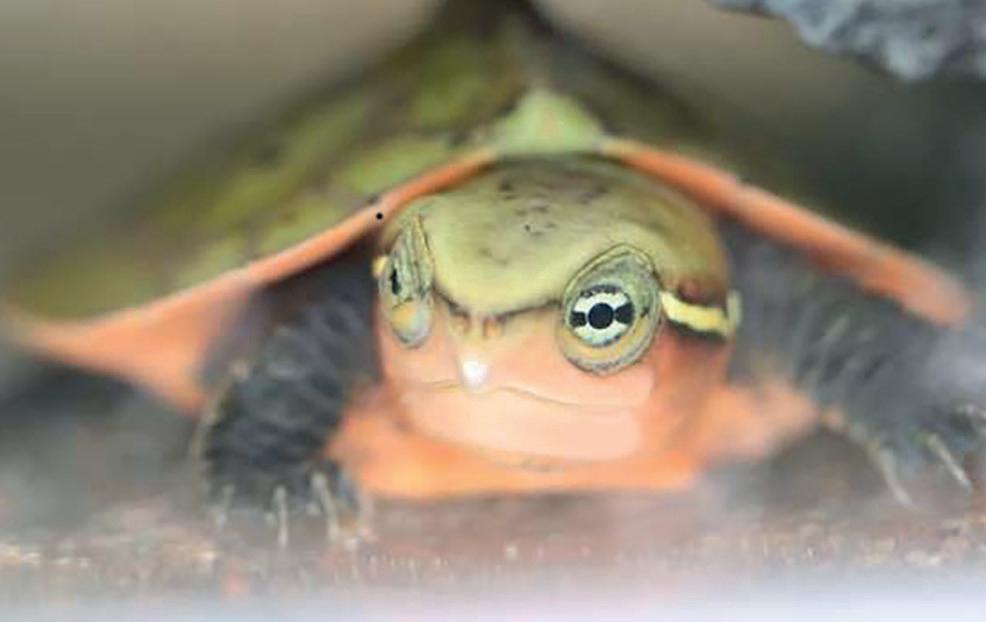
At the end of 2018 four big-headed turtles (Platysternon megacephalum) arrived after being rescued from smugglers trying to import them into Canada - labelled “as toys”. Since then the 2.2 turtles, which are housed separately, have been slowly introduced to each other, this resulted in one pair laying eggs which hatched recently.
Hailing from the upper mountainous regions of Central China and mainland Southeast Asia, big-headed turtles are threatened by hunting for their meat and the international pet trade and are classified as Critically Endangered on the IUCN’s Red List of threatened species. They are ranked No.19 on ZSL’s EDGE of Existence reptile list, which puts unique and threatened species at the forefront of conservation attention - and are part of a collaborative conservation initiative that reintroduces rescued wild big-headed turtles back into the wild.
2 JANUARY 2022 Exotics News
© ZSL
© WildHeart Animal Sanctuary
© YWP
© ZSL
New Mountain Chicken Coordinator
Mr. Luke Brannon is the new coordinator for the Mountain Chicken Recovery Programme in Monserrat. He was previously contracted to assist with the mountain chicken population in Dominica for a period of six months working with the Zoological Society of London. The skills learnt in Dominica will prove useful on Montserrat. Coincidentally, Mr. Brannon has been working with the team on Montserrat for approximately six months where he has deeply rooted himself in all aspects of Mountain Chicken Husbandry.
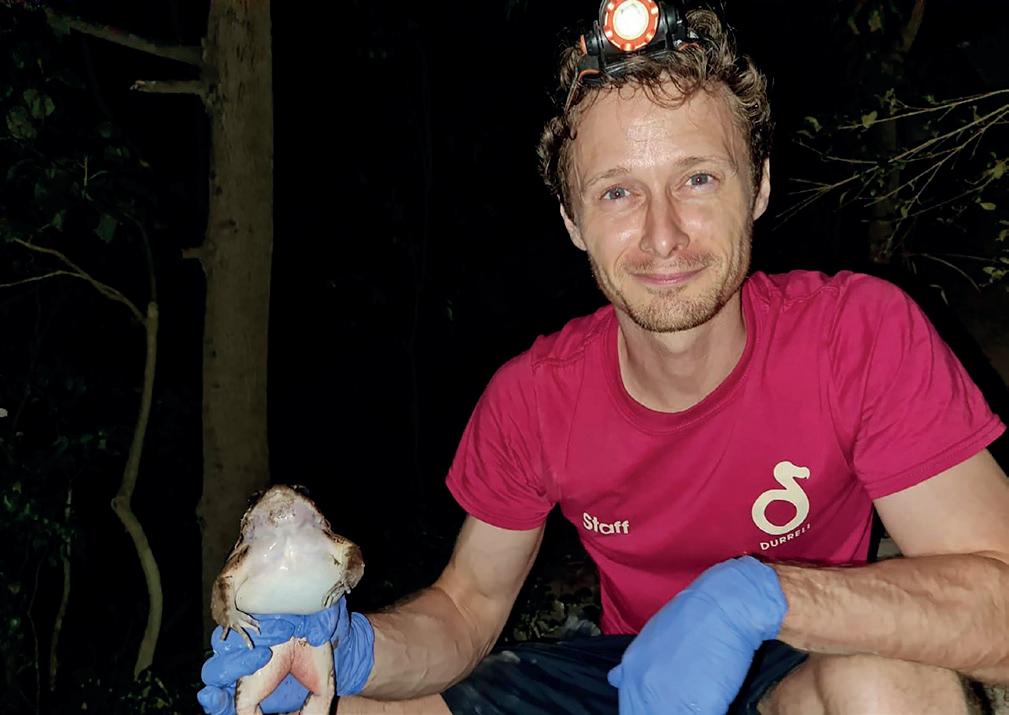
Only One Northern White Rhino Left in the Programme
The scientific team “Biorescue” is a consortium made up of scientists from the Leibniz Institute for Zoo and Wildlife Research (Leibniz-IZW) in Germany; the Safari Park Dvůr Králové in the Czech Republic; the Kenya Wildlife Service; and the Ol Pejeta Conservancy in Kenya. The project leader is world renowned artificial insemination specialist Mr Thomas Hildebrandt.
The two remaining female Northern white rhinos were moved from Dvur Kralove Zoo to the Ol Pejeta Conservancy in 2009. Here they are guarded 24 hours a day by armed guards.
In recent years the team have been working with the last two remaining Northern white rhinos (Ceratotherium simum cottoni) - females “Najin” and her daughter “Fatu”, as donors of egg cells, in a desperate bid to save the world`s most endangered mammal from extinction. However, recently the difficult decision has been taken to drop the older female “Najin” (aged 32) from the breeding programme due to “ethical considerations”. Contributory factors in the decision included her advancing age, the condition of her remaining eggs, signs of illness and the risks involved with repeated anesthesia in an older large mammal.
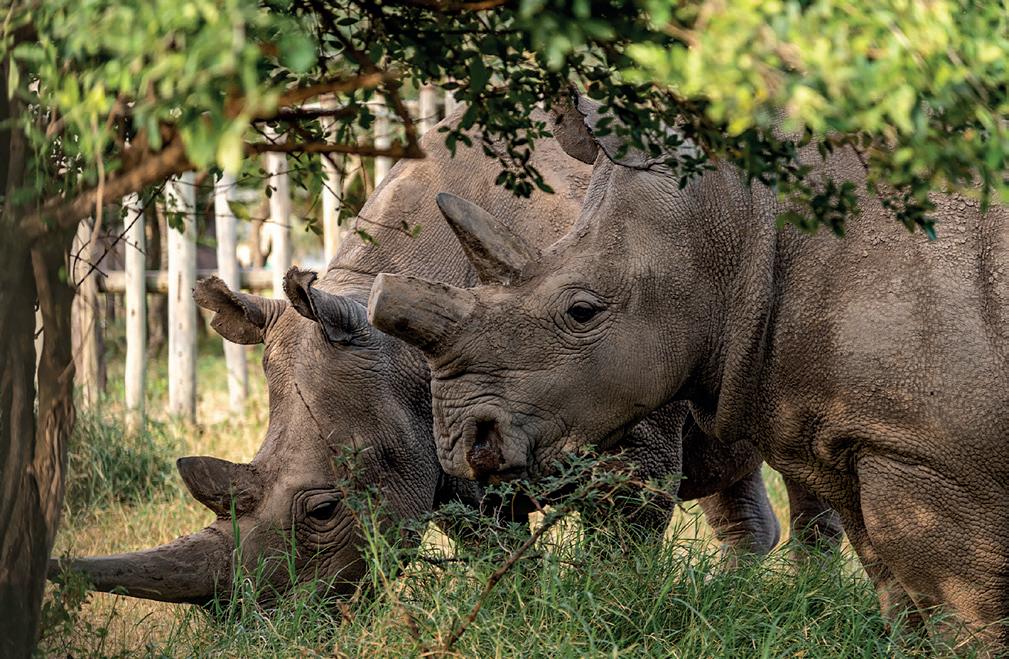
There are no known living males and neither of the two remaining northern white rhinos can carry a calf to fullterm. Therefore scientists had been harvesting eggs every three to four months from the two animals in order to fertilize them with frozen sperm from the deceased males,
and then implant these eggs into surrogate Southern white rhinos (Ceratotherium simum simum). The eggs were airlifted to the Avantea lab in Cremona, Italy, where they are processed and stored. But In the most recent cycle, researchers decided not to collect eggs from Najin, the elder of the two rhinos, due to her age and the condition of her remaining eggs.
One embryo was created using sperm from male “Angalifu” (which was surprising considering he had a low sperm count) and all the others were created from male “Suni” using eggs from female Fatu. “So far we have 12 pure northern white rhino embryos,” said David Ndeereh, the acting deputy director for research at the Wildlife Research and Training Institute. He went on to say “we are very optimistic that the project will succeed.” The team hopes to transfer a northern white rhino embryo into a female southern white rhino by the end of this year, with the hope of being able to deliver its first northern white rhino calf in three years, with a wider population in the next two decades.
Researchers and stakeholders are assessing whether it would be possible to employ similar methods to preserve genetic diversity in critically endangered Asian rhino species, weighing the risks of extracting eggs against the need for a backup plan. (Sources; www.news.mongabey. com & www.swissinfo.ch).
Leading Zoo Conservationist Passes
Bill (William) G. Conway has passed away aged 91. He was born in 1929 in St. Louis, and it was here that he started his zoo career at St. Louis Zoo. He moved to New York`s Bronx Zoo in 1956 where he became Curator of Ornithology between 1956-1966, he was promoted to Associate Director from 1960 to 1961, and then to General Director from 1962 to 1999, he was also President of New York Zoological Society (1992-1999). He was one of the most influential zoo directors of the 20th century - largely responsible for the redevelopment of the Bronx Zoo New York and the acquisition of Central Park Zoo. He was the first president of the Wildlife Conservation Society (WCS, after it changed from the New York Zoological Society). He had a huge influence on conservation breeding programmes in zoos, and was a strong supporter of the role zoos have in education, as well as in maintaining standards in AZA zoos.
3 JANUARY 2022 Exotics News
Najin and Fatu living at the Ol Pejeta Conservancy in Kenya ©BioRescue
Rare Porpoise Protection Policy Change
The Mexican Government have officially abandoned its zero tolerance policy of maintaining a “fishing-free zone” which had been protecting the last known examples of the rare Vaquita porpoise. The porpoise is Critically Endangered and is the world`s rarest marine mammal, and at the last count there were only ten animals left in the upper Gulf of California. Replacing this policy with a new, more relaxed, policy which allows up to 60 fishing boats to use the area. If more than 60 boats are seen in the area on multiple occasions a sliding scale of punishments are going to be put in place instead. Formally known as the vaquita “reserve,” that zone starts around the Colorado river delta and extends south past the fishing town of San Felipe and near Puerto Peñasco. Mexico’s Environment Department had previously said the drop in the number of vaquitas and the area where they have been seen in recent years justified reducing the protection zone, which in theory once covered most of the upper Gulf. Meanwhile environmental experts say the move essentially abandons the world’s most endangered marine mammal to the gill nets that trap and drown them. The nets are set for totoaba, a fish whose swim bladder is a delicacy in China, and sells for thousands of dollars per kilogram.
Rare Native Fly Released
Following a record-breaking breeding season for the extremely rare native pine hoverfly at the Highland Wildlife Park near Aviemore, over 3,000 hoverfly larvae have been released in three carefully chosen forest habitats in the Cairngorms National Park. The first of the three pine hoverfly releases took place on Wednesday 20th October. The Rare Invertebrates in the Cairngorms project is a partnership between the RSPB, Cairngorms National Park Authority, Buglife Scotland, Butterfly Conservation Scotland, and NatureScot.

Andy Ford, Head of Conservation at the Cairngorms National Park Authority, said, “The Cairngorms National
Park is home to one quarter of the UK’s rare and endangered species, including the pine hoverfly, and it is great to see a project based in the Cairngorms leading the way in protecting species from extinction in the wild”. “This project is a key part of the fiveyear Cairngorms Nature Action Plan, which brings together a wider variety of people and organisations to safeguard and enhance nature in the National Park.” It is hoped the releases mark a turning point for this important pollinator which has not been seen in its adult form in the wild in Britain for over eight years.
Dr Helen Taylor, RZSS conservation programme manager, said, “This is a very exciting day for pine hoverfly conservation in Britain. Following habitat loss over the past century, our pine hoverflies are on the brink of extinction, with the majority of the known native population being cared for by our dedicated team at Highland Wildlife Park”. “Like many other insects, pine hoverflies play an important role in maintaining healthy ecosystems, but are sadly often overlooked until it is too late”. “It is absolutely incredible to be in a position to release over 3,000 pine hoverfly larvae into the wild this year after just 25 larvae were brought into our conservation breeding programme in 2019. (Source; RZSS).
Collated and written by Paul Irven.
A group that is dedicated to the understanding, discussion and awareness of lighting (UV, lighting and heating) for reptiles and amphibians in captivity. www.facebook.com/groups/ReptileLighting
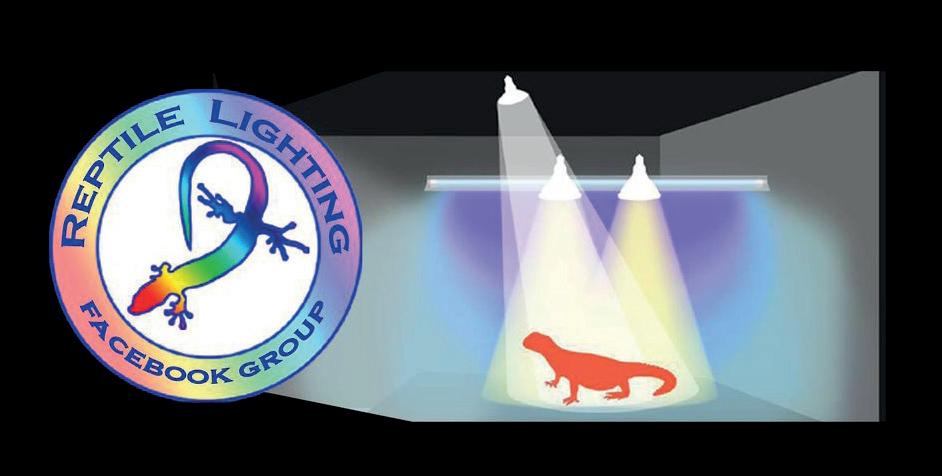
4 JANUARY 2022
Each month we highlight a favourite website or social media page
THE
THIS MONTH IT’S:
REPTILE LIGHTING FACEBOOK GROUP
THE WEB Websites | Social media | Published research Exotics News
ON
© RZSS
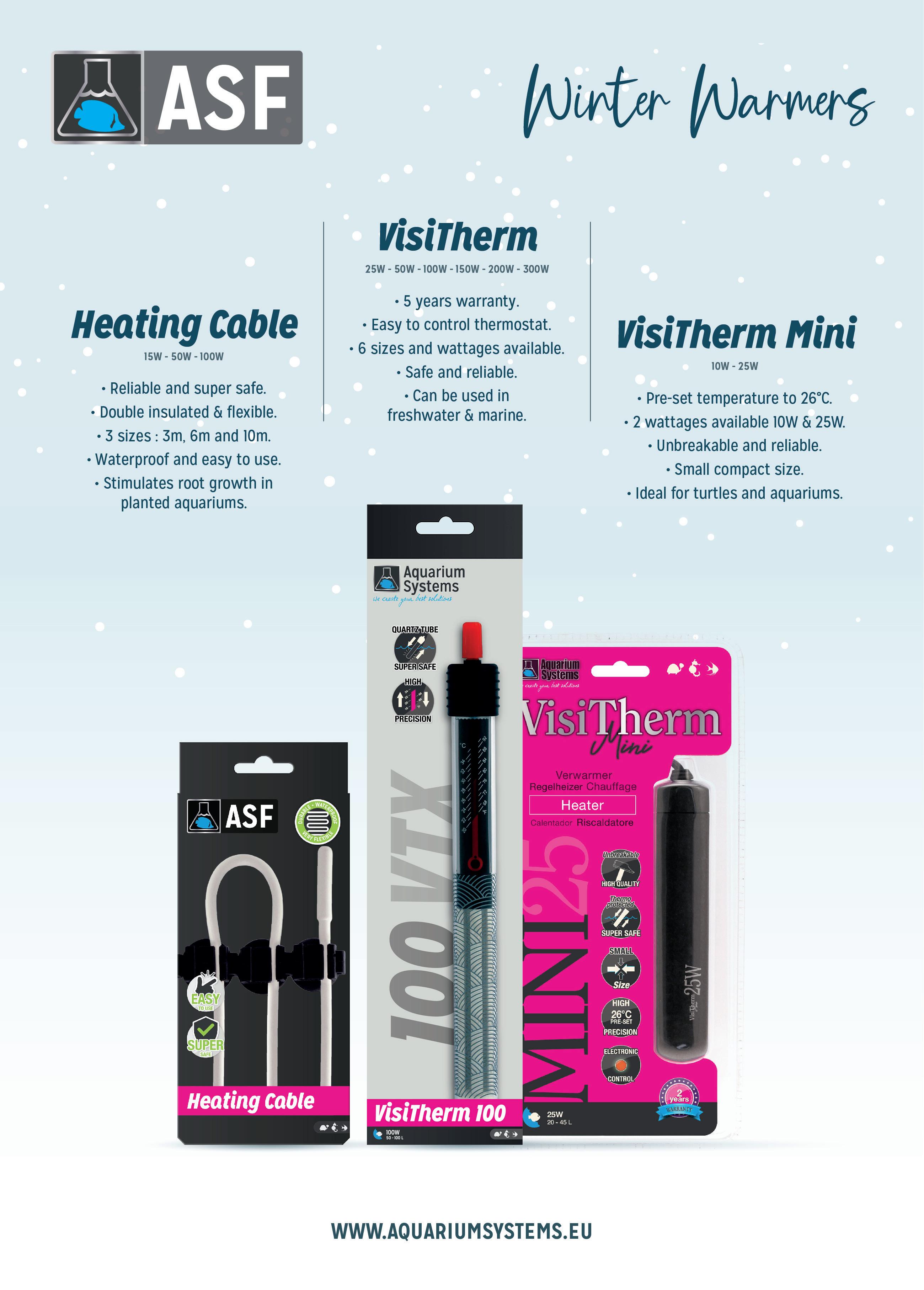
DATING ON THE WEB
It’s tough love for jumping spiders.
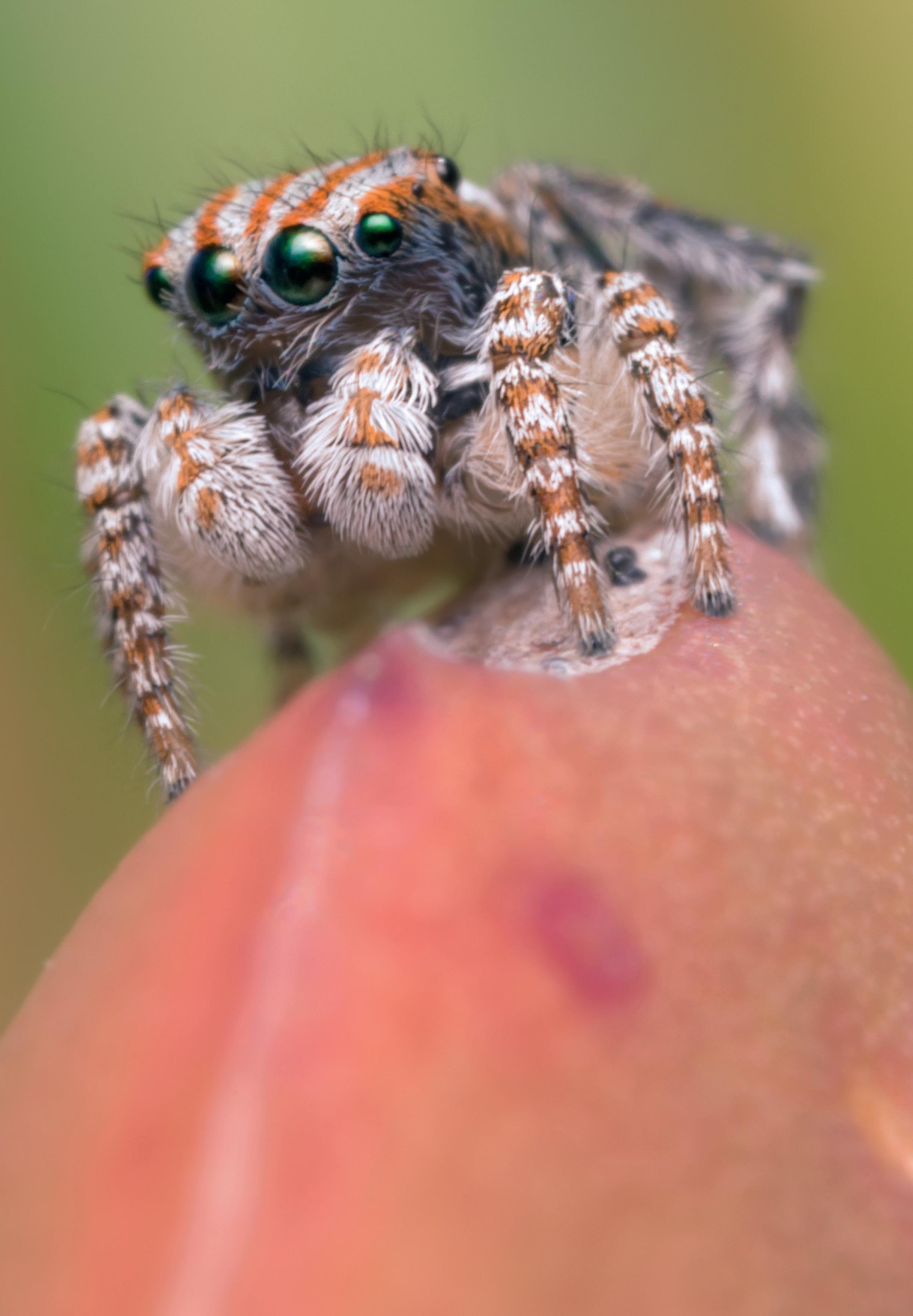 Peacock jumping spider (Maratus tasmanicus)
Peacock jumping spider (Maratus tasmanicus)
Jumping spiders are easily some of the most charismatic spiders on the planet. Comprised of over 6000 species from the Salticidae family, they make up a whopping 13% of all known spider species. They are found across almost the entire planet and are broken into around 350 genera. They are most easily distinguished by their eye formations, comprised of four pairs, with the anterior median (middle) being much larger than the others. Many possess forward-facing eyes which have influenced Hollywood’s most famous anthropomorphic spiders, usually as terrifying creatures. However, many invert-enthusiasts can find these huge eyes appealing and even cute.
As well as incredible vision that allows them to see almost the entirety of their surroundings and the superhero ability to jump many times their body length, some genera of jumping spider also have very complex courtship habits.
Risky business
Most male jumping spiders possess colourful or iridescent hairs to attract a mate, but none are more famous than the peacock spider (Maratus spp.). This group of tiny Australian spiders are some of the most beautiful arachnids on the planet and millions of years of evolution have given them bold characters to match. Peacock spiders will dance, drum and vibrate in elaborate courtship displays to draw the attention of a mate.
The vibrant colouration or iridescent patterns is likely to stun a female, who despite her exceptional vision, sees mostly in black and white. At this point, the male will begin his dance routine to woo her. Although this may at first appear to be romantic, ongoing research suggests that most species of jumping spiders will dance with 100% of the females they encounter, even if they are an entirely
different species. While this may seem like an excessively flamboyant routine to enact time and time again, if the male spider makes a wrong move or picks the wrong partner, there is a high probability he will be eaten on the spot. In fact, in areas where there is a high density of jumping spiders, it’s very probable that males make up a good percentage of female diets.
Research on another species of Australian jumping spider, Servaea incana, by Vivian Medez at Macquarie University found that females would express sexual inhabitation immediately after their first mating. Like many species, especially other invertebrates, jumping spiders can store sperm for their entire life. Further sexual encounters can also dilute their sperm storage, meaning females will actively fend off any male attempting to mate with her after her first partner. The study saw 89 female spiders paired with a different male for the first 10 days of their adult lives, then subsequently paired with more males for the rest of their lives. Most females only mated once and some mated twice, but very few continued to mate beyond this, suggesting female jumping spiders can store male sperm for the entirety of their short (on average, 10 month) life.
7 JANUARY 2022 Dating on the Web
Dating on the Web
Tricks of the trade
Further research into the Habronattus genus is beginning to unearth even more interesting dynamics into the way jumping spiders mate. This genus, along with many others in the Salticidae family, uses percussion to attract a mate. Complex vibrations and drumming are used in conjunction with elaborate dances and bright colouration. In fact, the vibratory songs are so complex, they are comprised
of 20 different motifs that change as courtship progresses. Most species of Habronattus are found in North America and are often referred to as ‘paradise spiders’.
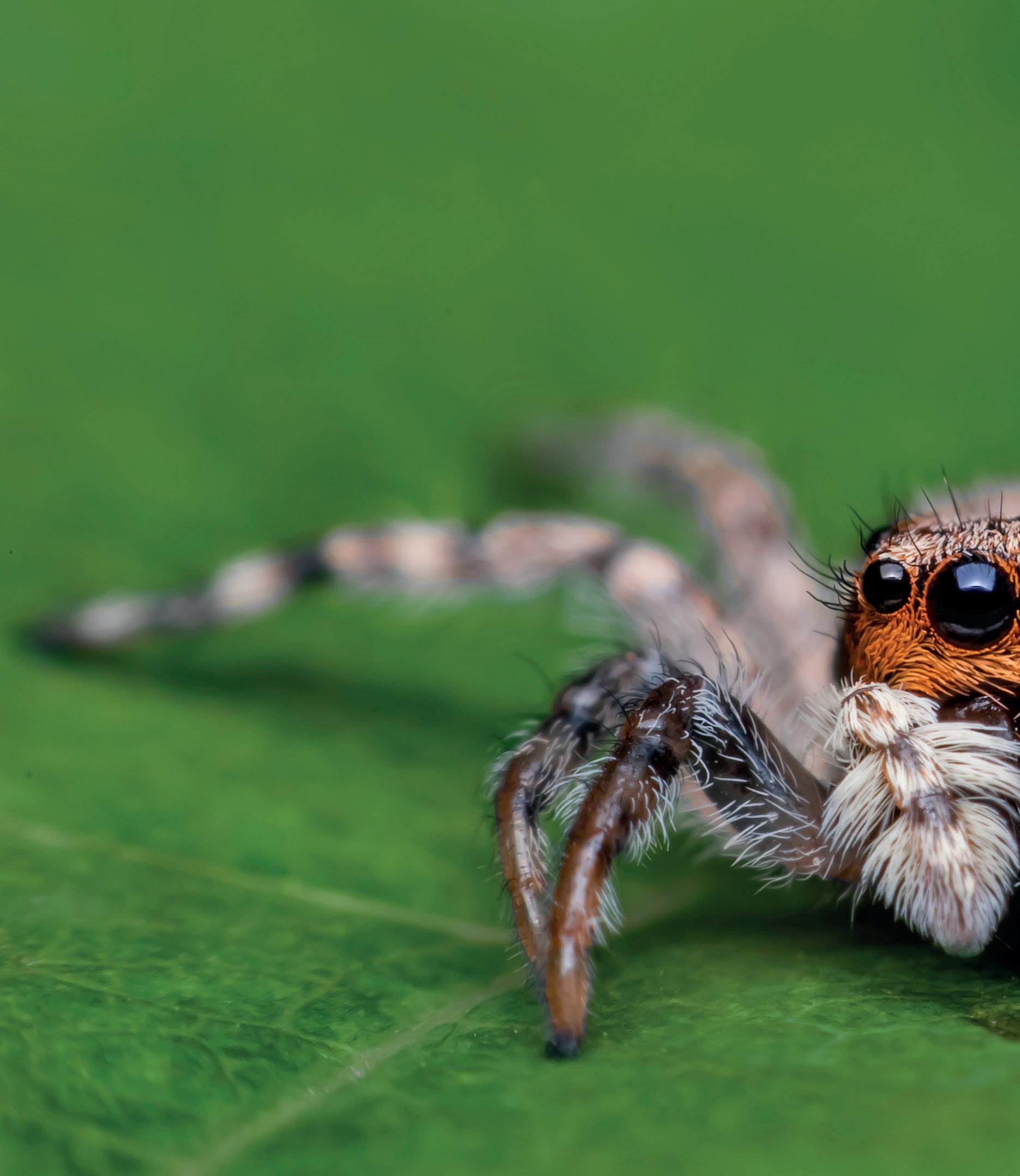
The Jotus genus of jumping spider employs the use of accessories to attract a partner. Equipped with paddleshaped limbs, the males will hide on the overside of a leaf, waving each paddle in the view of a female. As the dance
progresses, they will wave both paddles to hold her attention and display his intentions, before springing from the underside of the leaf or branch, ready to mate. There have been several species of Jotus officially identified recently. Most prominently, a black and white spider named after Karl Lagerfield, the famous fashion designer, called Jotus karllagerfieldi. With such an abundance of species, scientists are still discovering new invertebrates every week. This
8 JANUARY 2022
means that many invertebrates are named after contemporary icons as well as 18th Century naturalists.
Jumping spiders in captivity
The complexity and appealing nature of the jumping spider is changing attitudes of arachnophobes across the world. Now a reasonably common

pet, jumping spiders have established themselves not just in bug-keeping but as very popular invertebrates that require very simple care.
Phiddipus regius, or the regal jumping spider is by far the most popular species in captivity, but there is a whole spectrum of regularly captivebred jumping spiders in the UK. They require well-ventilated enclosures and should always be provided bright light
Dating on the Web
during daylight hours. They are diurnal and thus thrive in sunlight. Keepers should be careful this sun (or artificial light) does not warm the enclosure too much. This is arguably the most misunderstood aspect of their care, as they are easily housed, maintained, and fed using products available on the market. Despite this, keepers should always do thorough research, from multiple sources before purchasing an animal regardless of their size.
9 JANUARY 2022
SPECIES SPOTLIGHT
The wonderful world of exotic animals
Alligator snapping turtle (Mackrochelys temminckii)
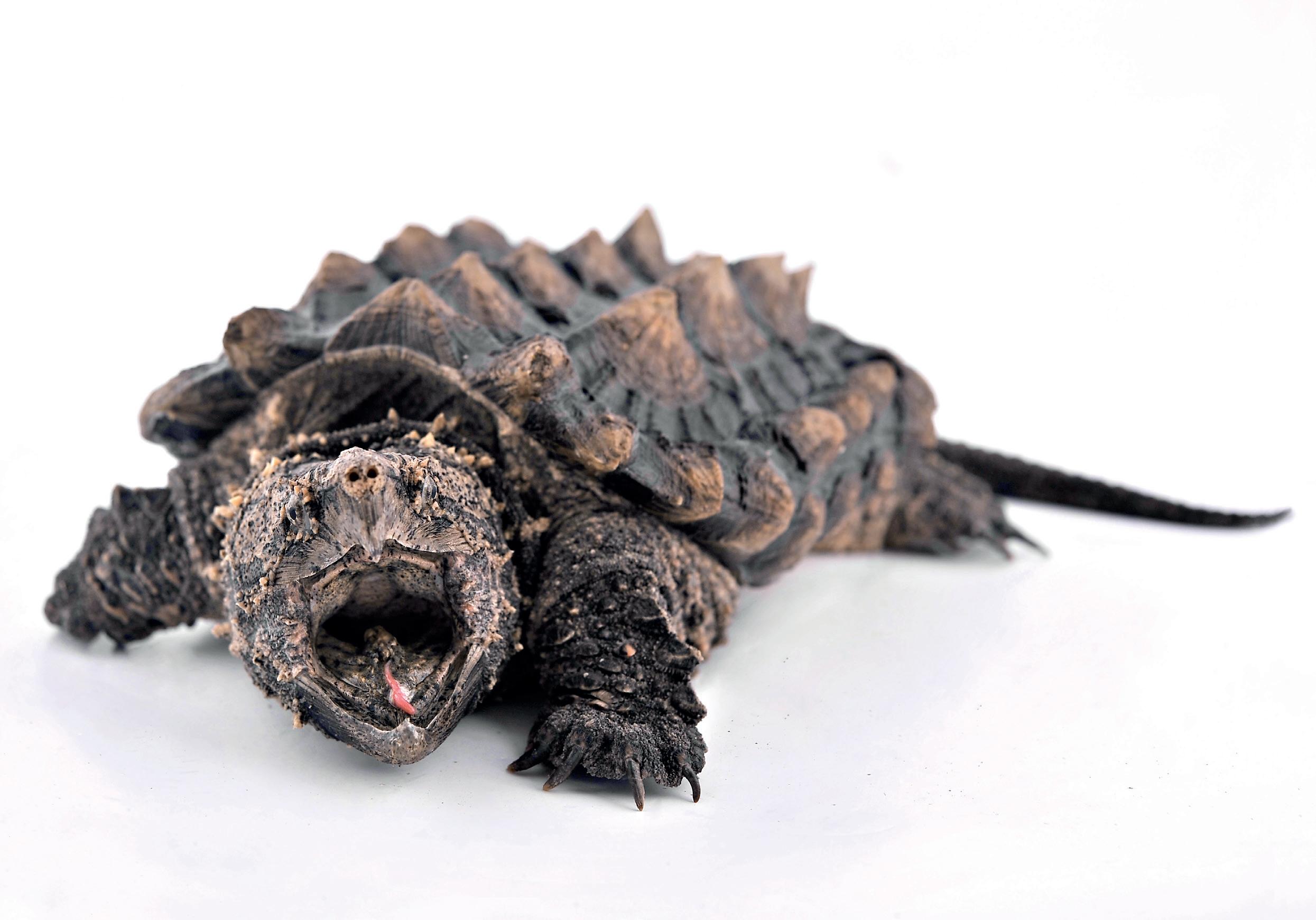
The alligator snapping turtle is the largest freshwater turtle in the world. With a carapace reaching over a meter in length, these goliaths are some of the most impressive Chelonia on the planet. They are occasionally farmed in captivity in the US and imported to the UK. However, in the wild, populations of this species are slowly dwindling, and they are now considered vulnerable by the IUCN.
Sharing both a name and a range with Alligator mississipiensis, this turtle inhabits most of the Southeast United States, except tropical Florida. They are almost exclusively aquatic and will spend up to 50 minutes submerged in water, waiting to ambush aquatic prey. Like ominous angler fish, or various vipers, the alligator snapping turtle uses its tongue as a lure to bring unsuspecting fish within striking distance. These turtles can spend so long stationary, in ambush position, that a thick layer of algae often covers their entire carapace making them almost invisible to fish.
Although legend states a record alligator snapping turtle of 182kg was discovered in Kansas in 1937, the heaviest officially recorded animal weighed in at 107kg and was kept at Brooklyn Zoo. This enormous size is very
different to their distant cousins, the common snapping turtle (Chelydra serpentina). In fact, C. serpentina is much smaller, much more active and does not hunt using a lure.
Naturally, housing alligator snapping turtles in captivity requires an enormous enclosure. While they are reasonably inactive (prompting lots of people to keep them in plastic tubs in the 90s), they will require a large volume of water. The biggest challenge here is keeping that water clean, as alligator snapping turtles will feed on fish, beef, pork, frogs, clams, crayfish, plants and even other turtles. Moving the alligator snapping turtle from its enclosure is also risky business, with a sharp beak and 208 newtons of bite force, the alligator snapping turtle could easily take a finger or break a bone.
In terms of captive care, the alligator snapping turtle is much more stationary and generally less interactive than common snapping turtles. They are also slightly less aggressive and will instead keep their mouth wide open, waiting for an opportunity to bite once as opposed to the common snapper, which will often launch a barrage of bites. Serious consideration needs to be taken, as to whether this animal is suitable for any captive keeper and misidentification from the novice turtle keeper will surely lead to problems down the line.
Species Spotlight
JANUARY 2022

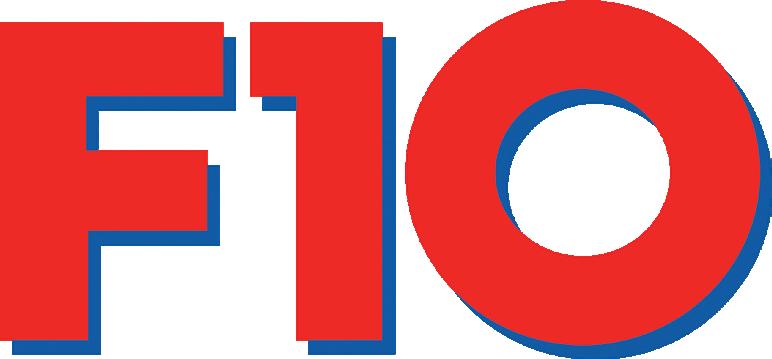
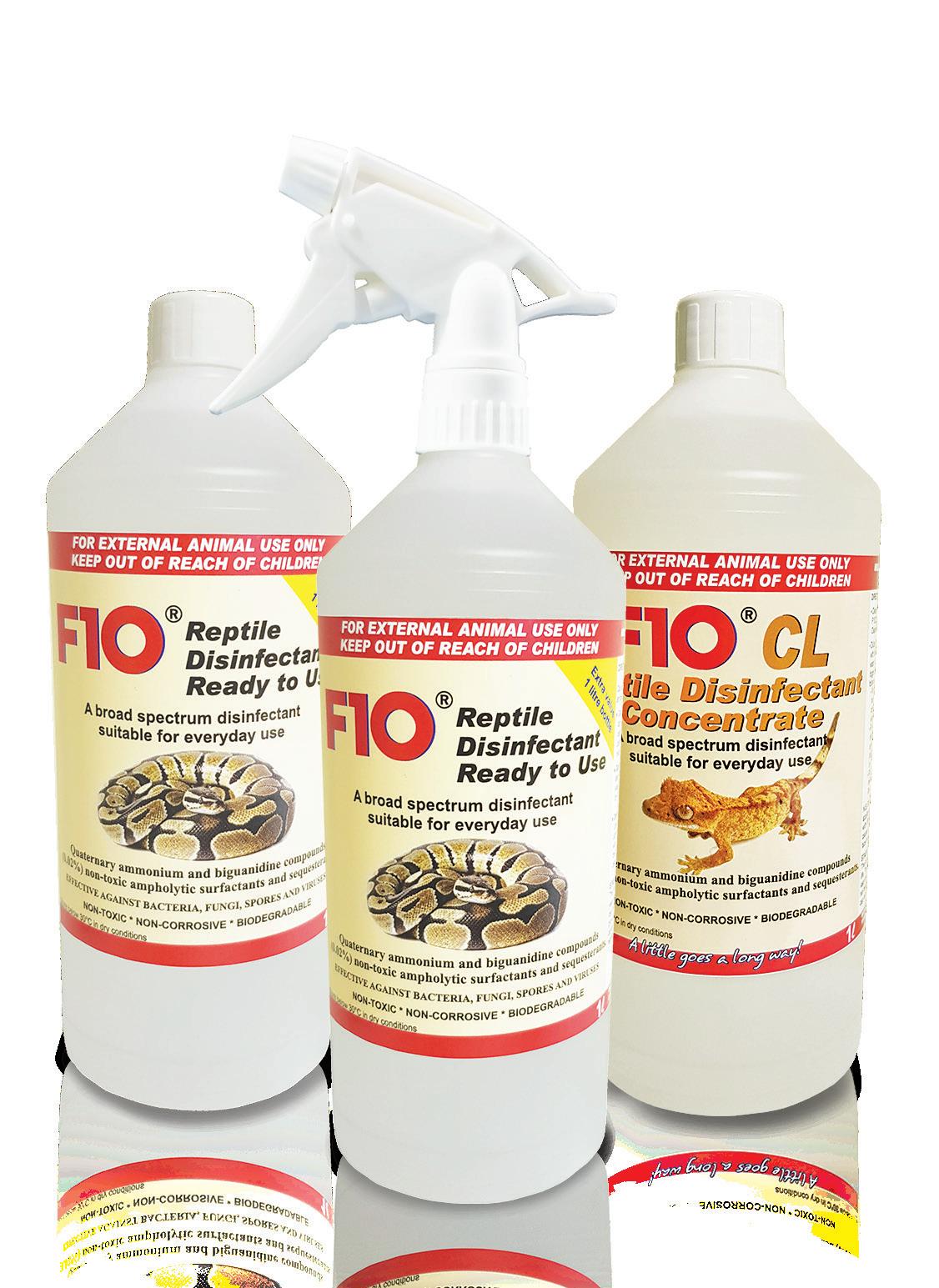
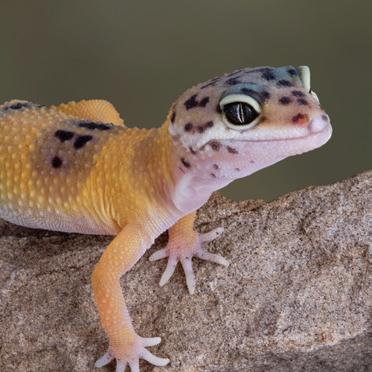
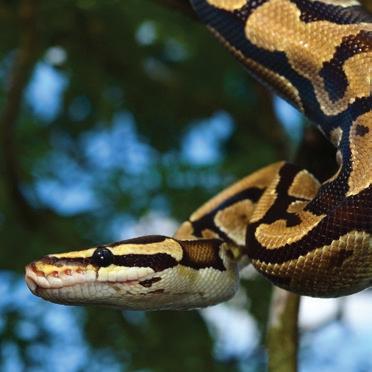





















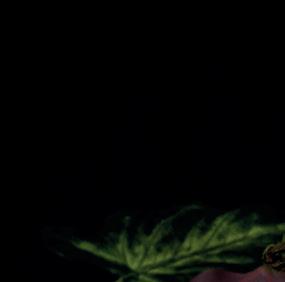

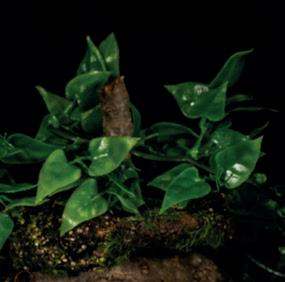





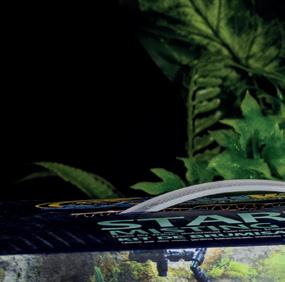
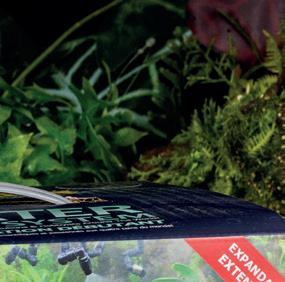
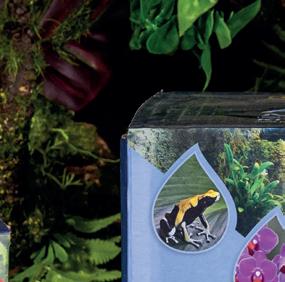
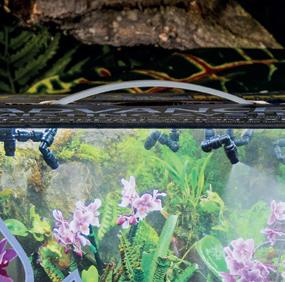
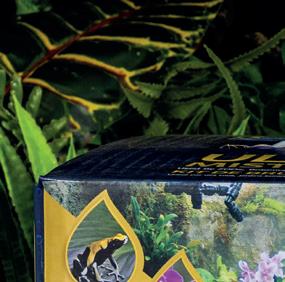
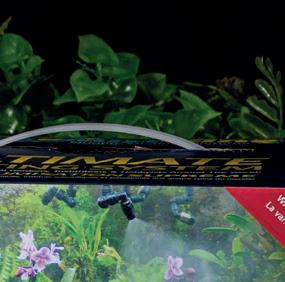

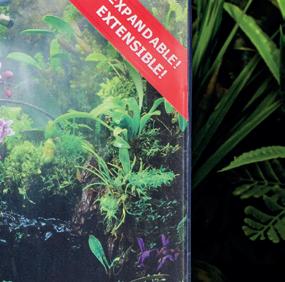
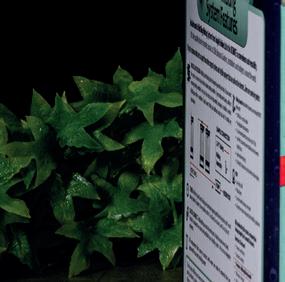
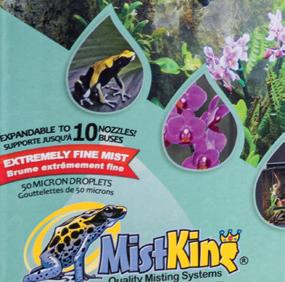
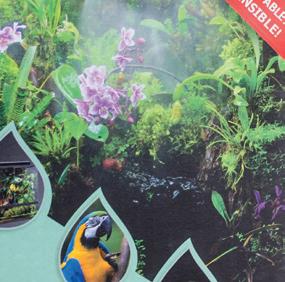
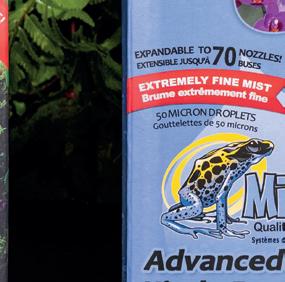
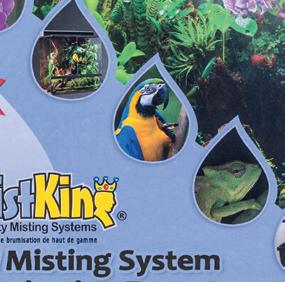
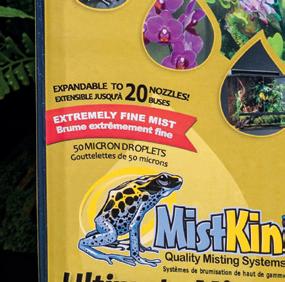
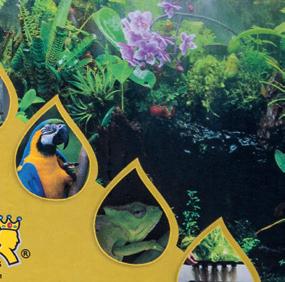

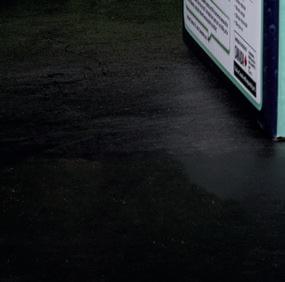
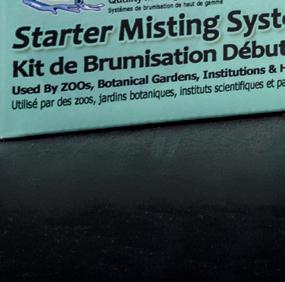
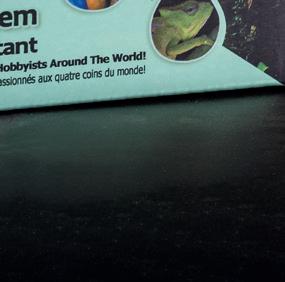
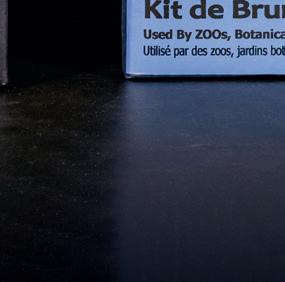
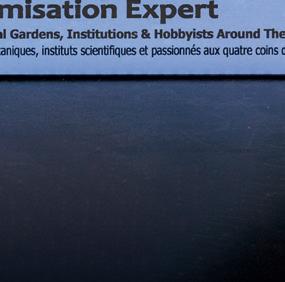
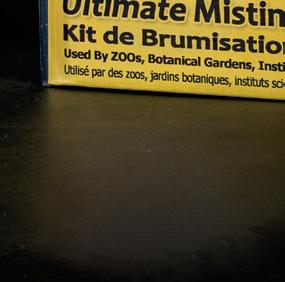
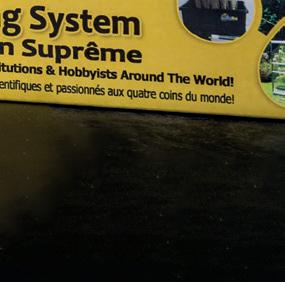






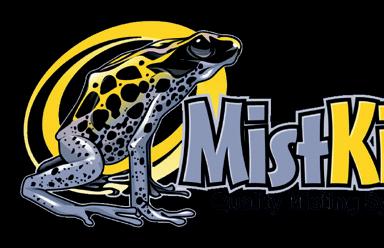

SO, YOU WANT TO WORK WITH REPTILES?
Advice on turning a hobby into a career.

12
 Central bearded dragon (Pogona vitticeps)
Central bearded dragon (Pogona vitticeps)
All over the world, there are reptile enthusiasts dedicating their time, efforts, and careers towards improving the welfare standards of exotic animals in captivity. In a science-led field, routes into herpetoculture can appear limited, especially for those with different skill sets. Exotics Keeper Magazine has compiled some advice for anyone, at any age, seeking a career with reptiles and amphibians.
The college students
Education around animal welfare in the UK is improving drastically and almost entirely behind closed doors. Inspectors for exotic animal shops are better trained than they have ever been, but most importantly students, volunteers and staff in pet shops and zoos across the country are better equipped for the job. With colleges and universities maintaining more diverse species of animals, teaching progressive husbandry techniques and cuttingedge nutritional advice, there is a generation of keepers that can now enter the industry with immense knowledge.
Shuttleworth College in Bedfordshire is a prime example of this. Their ‘Zoological Education Centre’ maintains 265 species of animals ranging from tiny dart frogs to ring-tailed lemurs and just about everything in between. Students can manage, research and breed critically endangered species (such as Fijian crested iguanas and rhinoceros iguanas) as well as develop an understanding of the relationship between herpetoculture and horticulture within a huge South American rainforest biome.
Carl Groombridge is the Curator of the £4 million Zoological Education Centre. He told us: “Every single species has a job description. The description is to meet the ecological, nutritional, behavioural, and captive management criteria to be of value here. We don’t want repetition. We have a variety of geckos but each one has different husbandry, is maintained differently and usually has a conservational interest too.”
“Herpetology is a fantastic opportunity for people interested in these unusual prehistoric creatures. Education is really important because it gives you a grounding to develop further with research and a true understanding of the need to maintain the skills and apparatus involved. This area is changing all the time!”
“We work very closely with zoos, UK and international universities, and guest speakers. As well as supporting the industry. This is because most herpetology in the UK is very much from a captive stance. It’s more of a
14 JANUARY 2022
So, you want to work with reptiles?
herpetoculture vision and there are lots of species being managed extremely well. It does take people overseas and into zoology, but the opportunity in the UK has grown tremendously over the past 15/20 years where it’s very much now about the welfare of the species and how to maintain natural enclosures and how that suits a particular species. By managing a slice of the amazon rainforest or Arizona desert, you can really study the animals and keep them to the best standard.”
“There is no age limit to when you can start this! We’ve had learners in their late 50s that want to try a career change because they’re fascinated with animals. If you’re prepared to take on physical work and deep commitment within that study, the opportunity is certainly there!”
Although courses and university degrees specifically in herpetology are quite limited in the UK, there are many other routes that will take someone directly into working with reptiles and amphibians. Zoology, Animal Sciences,
International Wildlife Biology, Ecology and Conservation and many other subjects are widely taught in the UK and can be utilised to pursue a career in working with reptiles and amphibians.
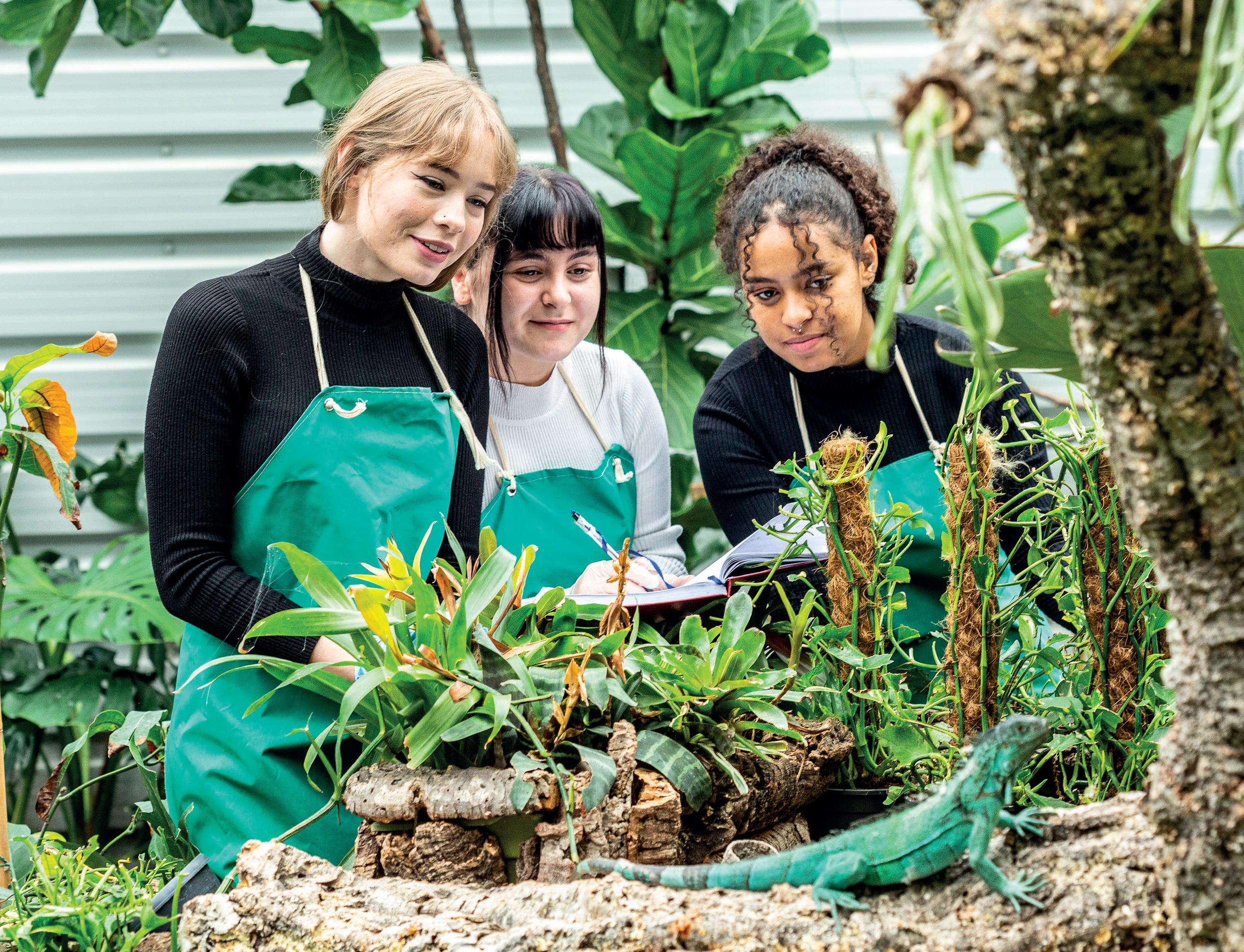
For those that are dedicated to studying the cold-blooded, Bangor University in North Wales is the place to go. Bangor offers both Bachelor of Science and master’s degrees in ‘Zoology with Herpetology’ that is not available elsewhere in the country. However, just like the college courses, a broader course in zoology is likely to cover many aspects of herpetology and will almost certainly be taught by leading herpetologists.
The Re-wilders
With young people generally becoming more and more concerned with the environment, passionate individuals are feeling empowered to make a change. The crosssection here, between dedicated herpetoculturists and
15 JANUARY 2022
So, you want to work with reptiles?
concerned activists, is the re-wilding movement. This is the practice of breeding genetically viable animals for reintroduction to a wild landscape and none have received quite the amount of media attention as Harvey Tweats and Tom Whitehurst of Celtic Reptile and Amphibian.
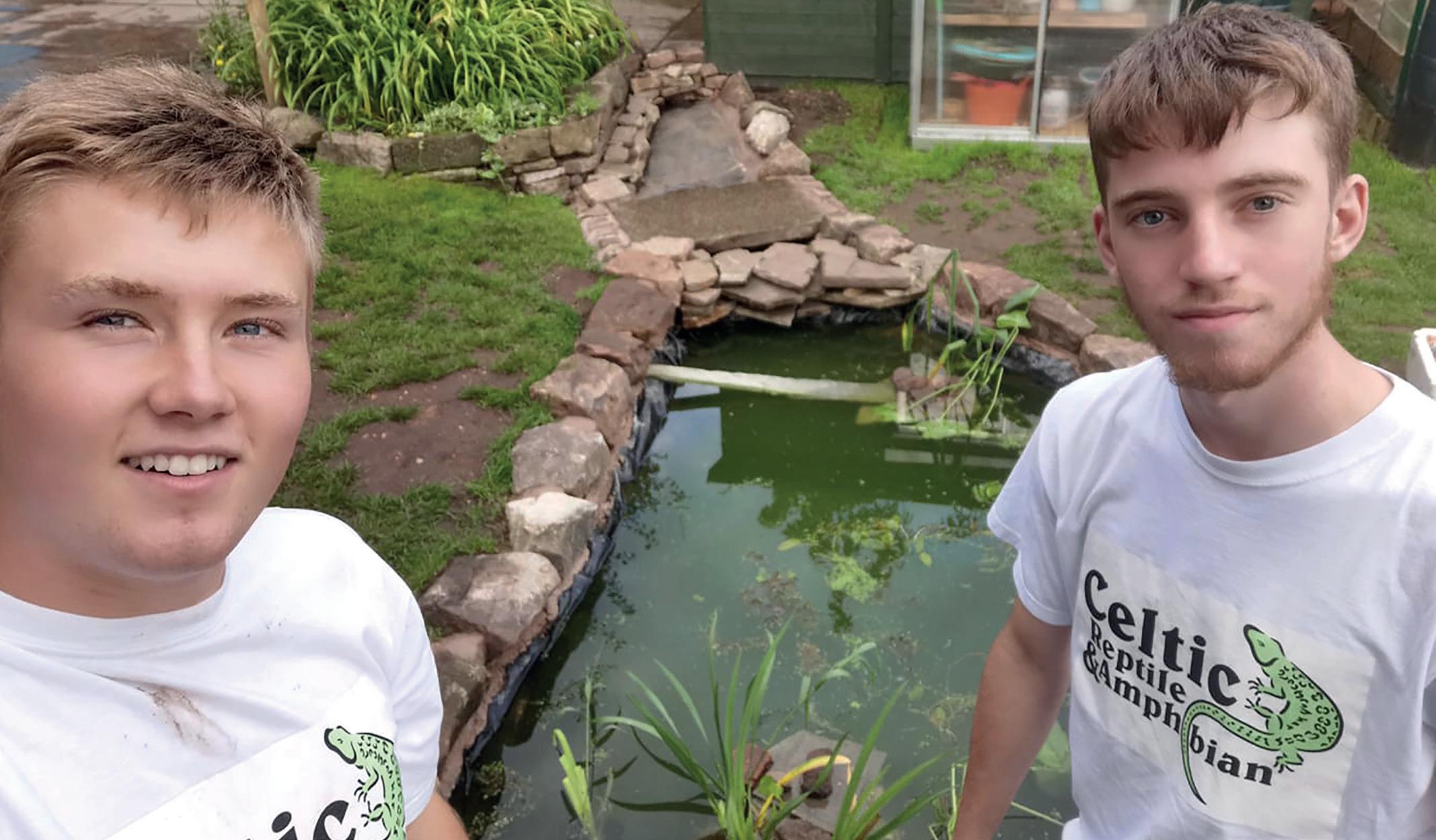
Harvey told us: There are lots of skills that we are developing that are integral to the conservation and preservation of our native species. We’re constantly met with horrendous wildlife declines. We’re young and rewilding goes against orthodox conservation methods, so I think the media likes that. It’s speaking to an unmet audience. On a personal level though, it’s really opened my eyes up. It’s also taught loads of transferrable mediabased skills such as developing social media, being in front of a camera, being behind a camera, and lots of other professional things we can take forward, it’s been amazing.”
Tom added: “doing something you love every day and knowing it’s going towards something that’s very important is such a highlight of this project. It’s something we need and to be able to work with animals every day and treat it as a career rather than a hobby is incredible. If you’ve got the time, expertise and money you can absolutely do it.”
Rewilding is a controversial subject and under no circumstance should anyone breed animals to simply release without prior approval from governing bodies. This can sometimes take several years. Although Celtic Reptile and Amphibian are leading the charge in this area, it will be some years before an animal is released into an approved site. However, by developing successful breeding methods, recording captive research, sourcing, and producing genetically viable animals and laying the foundations for a healthy population today, it is sure to
have a strong impact tomorrow.
Harvey concluded: “The thing about reintroduction is it’s very complicated because there’s a lot of different factors to consider. One of the main things we’re aiming for is to streamline the reintroduction process so we can reintroduce a good number of species, but with the very best science and knowledge behind it.”
There are also various conservation charities that are continuously looking for volunteers to help in a wide variety of projects. Amphibian and Reptile Conservation Trust, The Woodland Trust, Forestry England, and various other organisations are directly linked to protecting the UK’s reptile and amphibian species. Although it is not always financially viable to spend time volunteering, it can be massively beneficial in the future. For young people who have completed their schooling and looking to travel abroad, approaching the local universities in that region to see if any PhD students require assistance with field research is also a good idea. Some ‘volunteering holidays’ can be underwhelming, expensive and exploitative. Joining a student writing their thesis on a particularly interesting species not only gives you flexibility in your travel plans but helps develop a network of researchers who might help support your career later.
Field work and monitoring programmes may be extremely insightful, but for those who cannot commit to a weekday schedule, there are even more opportunities to fundraise. Usually more flexible than fieldwork, fundraising allows for participants to meet vital members of charities and NGOs to ensure that should a career opportunity arise, they have the correct contacts and know-how to succeed in an interview.
16 JANUARY 2022
So, you want to work with reptiles?
Harvey (left) and Tom
Content creation
Vlogging and podcasting is an increasingly popular method of not only educating, but also building communities reminiscent of the early forums in the 1990s. Established figureheads can help direct the narrative whilst every participant can support, contest or even just acknowledge the information presented. These are vibrant and dynamic areas filled with real-world experience.
One of the most celebrated YouTube vloggers in the UK is Joseph Brabin. His channel JTB Reptiles has around 8,000 followers and deliberately focuses on best practice, often citing the phrase “following natures example”.
“You can’t underestimate the passive effects that videos can have on people” warned Joseph. As more and more people come to see YouTubers as figures they can look up to, I think that YouTube’s influence on the industry will continue to rise.”
One major downfall to vlogging is the sensationalism that it provokes. There are countless vloggers on YouTube that do not promote the best practice and in fact, have a negative impact on animal welfare. However, for those keepers that are confident that they are right at the forefront of improving welfare standards, starting a channel can be a great route in.
Joseph continued: “With regards to my own videos, peerreview is something that I’ve become involved with. Two Facebook groups, Advancing Herpetological Husbandry and Reptile Lighting (which are run, I should think, by some of the Rolls-Royce in herp keeping) are now offering a (free) peer-review service to anyone making videos about herps. Not many people have submitted videos yet, but I can confirm that it is well worth it: the review team points out mistakes or make suggestions which, when implemented,
give the video a whole new flavour and appeal. Nowadays, any serious informative video I make gets submitted for peer-review before being released to the public.”
In this way, Joseph ensures that all his educational material is cutting edge. Peer-reviewing is an excellent way to be assured that your impact is positive. For those willing to take the extra steps in their vlogging, this can be a great way to establish yourself as a knowledgeable herpetoculture expert.
Documenting your experiences does not require technical know-how or brilliant editing skills. It can sometimes be as simple as writing down your own observations and interactions. Keeping a blog of something you are interested in will inevitably build a portfolio for you to present when the right opportunity comes along.
If you are travelling to far away locations, write it down. If you have seen your animals behaving in interesting or unusual ways, write it down. If you have visited a lecture, webinar, zoo, or national park, write it down. In fact, just about any experience that you have with reptiles or amphibians can be documented and produced into a career further down the line. This absolutely will not happen overnight but should the opportunity to write for a magazine or a journal appear, you will absolutely need something to show for it.
Without delving too deep into an egocentric rabbit hole, immersing yourself in herpetoculture and conservation can sometimes be the catalyst to making a career that’s animal-focused even if your professional qualifications are in journalism.
For anyone seeking further advice in this field, feel free to email thomas@exoticskeeper.com with any questions.

17 JANUARY 2022
So, you want to work with reptiles?
TOP TIPS
How to prepare for a career with reptiles.
Record everything: Even a notebook next to your animal’s enclosure will give you data you can later turn into something special. Whether it’s a published paper or a social media post, that data is crucial to reinforcing your voice in the hobby.
Gain some insight into AAL regulations: These are available online and are fundamental to working with animals in a professional setting.
Utilise your own strengths: Identify a particular skillset, then turn it towards your passion. You should be having fun while you build your experience.
Explore the options and consider indirect routes: Experience isn’t easy to come by, but some professional experience is better than none.
Plan ahead by developing and demonstrating skills: Get on board with a project that demands you to use essential skills, even if it is not reptile focused. DIY, media, horticulture and business projects can seriously reinforce a CV.
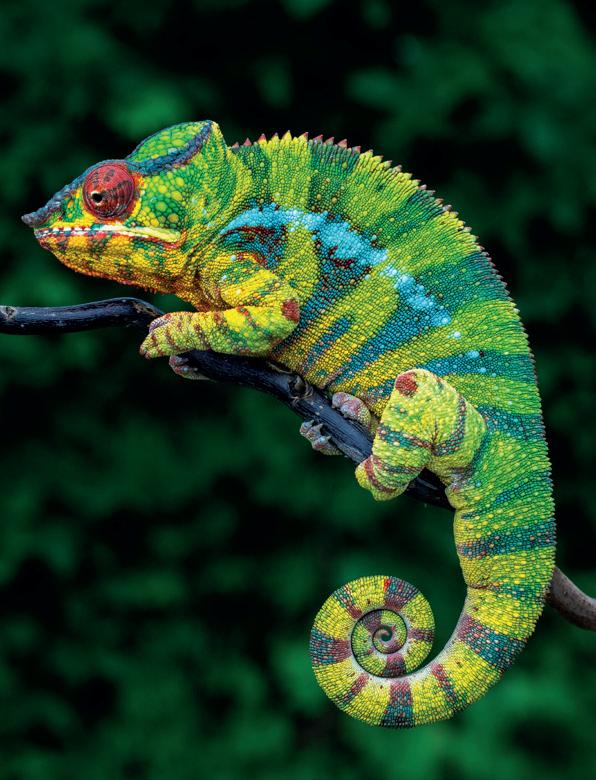
So, you want to work with reptiles?
In the industry
There are career choices and job opportunities that may provide a route into herpetoculture, whilst developing crucial skills and internal knowledge. Although we refer to herpetoculture as a ‘hobby’, we know that a wider industry supports this. Peregrine Livefoods is the largest wholesaler of specialist reptile supplies in the UK and one of the largest in Europe. Not only does this company provide innovative products to better welfare, but they also breed animals and feeder insects for hundreds of shops across the country, making them an excellent growth opportunity for anyone interested in reptiles and amphibians.


“If someone already has that interest in herpetoculture, they have the potential to have much more exposure to the industry within our business” explained Jo Daniel, Head of People at Peregrine Livefoods. “Additional insight into the industry has allowed people to develop their own skills and that’s not just from the animal team.”
Jo continued: “We really want someone with that passion and drive to learn. For example, with our insects team, we’re not necessarily looking for a degree in entomology, but we are looking for a strong willingness to learn.
the experience is so condensed and intrinsically niche that the insect training is done in-house.”
“Within the animal team we do usually look for someone who has a zoology degree or equivalent animal management or live sciences qualifications, but that doesn’t mean we won’t support existing employees to get these official qualifications. We’ve had several members of staff who have been so passionate and driven and want to work with animals, that we’ve found opportunities for internal transfers to allow this. A lot of our staff are passionate about animals so if we can support that career by providing some experience or assisting with a college application and providing new opportunities whilst still satisfying all our business needs, we will always try to support that.”
For anyone seeking a career in herpetoculture, familiarising yourself with AAL regulations is a great place to start. Simply reading through legislation and keeping up to date with current welfare standards is crucial. Although much of this will be wellknown to the avid reptile keeper and may seem tedious, this will better equip you for an interview in the future and demonstrates discipline and focused learning beyond your hobby.
Title 18 JANUARY 2022
18
Shopkeepers and business owners
Another route into working with reptiles and amphibians as a career choice is to start a business. Although arguably more demanding and riskier than other routes, for the right people, starting a business can be enjoyable and profitable and requires no official qualifications. Those dedicated to certain fields within herpetoculture might find that product development suits them. Others who are more customer-facing may want to open a pet shop. The opportunities are endless and with the right motivations, running a business that goes above and beyond to benefit its animals can be a real force for good.
Craig Thornton established The Reptile Hotel in Newcastle at just 16 years old. He told Exotics Keeper Magazine: “I kept a lot of reptiles at home. I started with a bearded dragon but soon found a bit of a niche breeding fat tail geckos. I was going down to a local pet shop that just dabbled in reptiles, and I knew that it could be done better. I was fortunate enough to have the finances at the time to set up the shop, which is usually the first major hurdle. But then, finding your customers is also a huge challenge. It’s a competitive world out there and you need to be doing something different to get that market.”
“If you are truly passionate about reptiles it can make an excellent lifestyle business but be prepared to give up a lot of your time for it. You have to be there 7 days a week because animals won’t look after themselves. If you’re passionate about business and only care about the money, just don’t do it. If you’re super passionate about reptiles, just be prepared to put in a lot of work and enlist on some
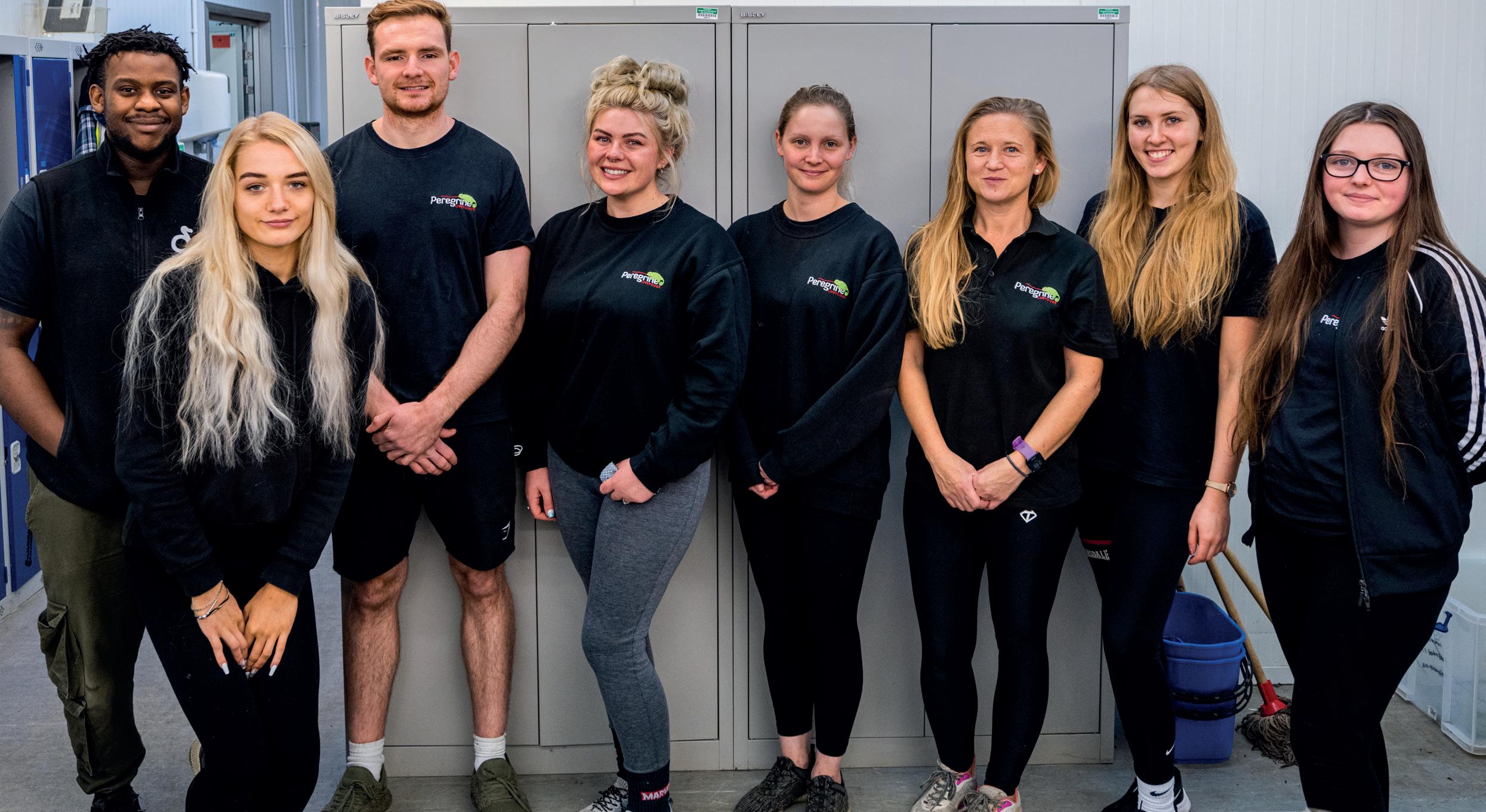
business courses and get that training as soon as possible.”
“The best advice I could give is if you are looking to open a reptile shop, do it where there isn’t established competition. There are places in the country where this would work. On the flipside, if you do open somewhere where there is competition, be the better shop. Don’t fight on price, provide the better service.”
Product development is also fundamental to the husbandry of all animals. Starting a business around an innovative product idea might seem like a huge leap for a novice, but the herpetoculture hobby is full of supportive and passionate individuals. Attending regular shows, meet-ups and events will help you identify the best people to approach for advice and might even make that dream become a reality.
What works for you
There are countless ways to develop a career that compliments personal strengths, whilst focusing on individual passions. Many people who work with exotic animals, whether directly or indirectly, will often reflect on their niche career as a fortunate blessing. Of course, not every day in the office is perfect and the financial benefits of working with animals are generally very slim. However, sticking true to a passion and utilising your own abilities and taking every opportunity to move toward an animal-fuelled career should pay off. Turning a hobby into a career does not happen overnight, but spending time to formalise, document and develop your interests is the first step into a career in herpetoculture.
19 JANUARY 2022
So, you want to work with reptiles?
The Peregrine Livefoods animal team
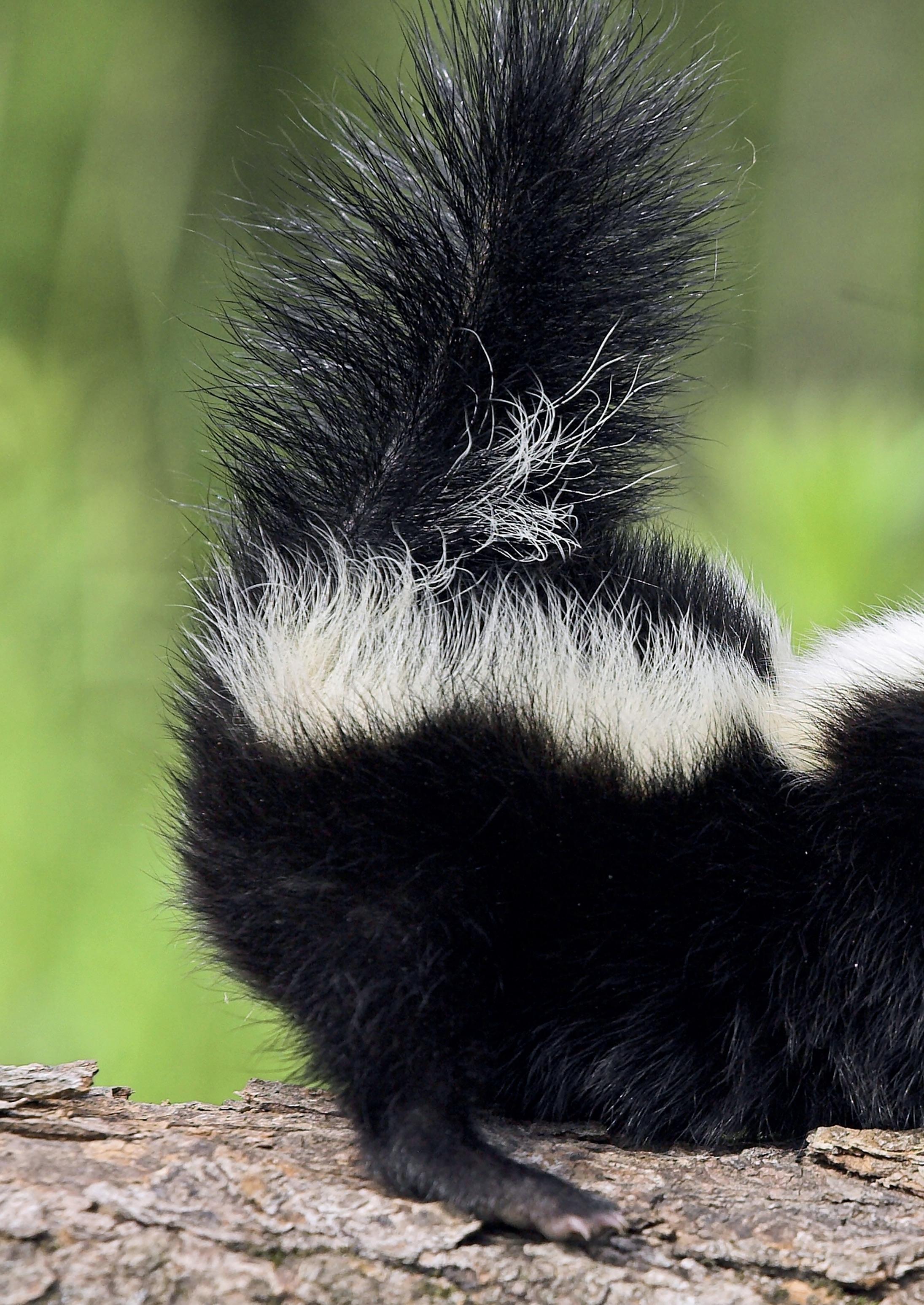

PET Do skunks make good pets? Striped skunk (Mephitis mephitis)
PEPÉ LE
We often use the term ‘exotic’ as an opposite to ‘domestic’ but when a species exhibits similar behaviours to our much-loved cats and dogs, the lines between the two begin to blur. Skunks possess many of the desirable traits we seek in a companion animal and yet, their tendency to kick up a stink has solidified their position as underdogs in the pet competition. However, those that do keep skunks, often do so passionately. So, do skunks make good pets?
Stars and stripes
The striped skunk (Mephitis mephitis) is a common species from temperate North America. Their wide distribution covers almost the entirety of the USA as well as northern Mexico and most of Canada. Previously classified within the Mustelid family (comprised of ferrets, otters, badgers, wolverines and more), the ‘skunks’ of North America and the ‘stink badgers’ of Southeast Asia have now been given their own family; Mephitidae.
The striped skunk is an omnivorous animal, eating a wide range of insects, amphibians, carrion, and berries. They are highly adaptable and intelligent animals that can thrive in built-up areas. Skunks will opportunistically scavenge on human food. Their bold personalities and potential to carry diseases such as rabies has made them the focus of many eradication initiatives, dividing opinions of US citizens who love or loathe these inquisitive animals. Skunks have also been at the heart of the fur trade in America, since native Americans and early settlers would hunt them, fuelling negative public opinion in the US.
They are primarily nocturnal, choosing to sleep in the
burrows of other animals during the day and although they do not typically hibernate, they are generally much less active in the winter. Skunks are solitary creatures, spending much of their life in a ‘home’ range, but males will often travel great distances during breeding season.
Skunks in captivity
Skunks have been kept in captivity for decades. As intelligent mammals that often express genuine affection towards their keepers, our perception of these exotic animals in the UK differs greatly to those in the US.
Julian Clare, Store Manager at Wrigglies Exotic Pets in Leighton Buzzard has been working with and breeding striped skunks for 14 years. He told Exotics Keeper Magazine: “The main reason we’re keeping them here in the UK is because they were farmed for their fur. They were an easier animal to handle and manage than minks and they obviously had a larger pelt size too. It was only when the demand for fur waned off, people realised that they actually made a great pet.”
22 JANUARY 2022 Pepé le Pet
“I encountered my first pet skunk around 20 years ago. They can be a lot of work, but they can be a brilliant pet for people who want to commit their time. I wouldn’t say their care is straightforward, but I wouldn’t say it was difficult either. Taking their personalities into consideration, all my animals have been absolutely wonderful. But, how much of a ‘pet’ you get out of a skunk can vary massively.”
Skunk personalities
In much the same way that domestic dogs and cats have wildly different personalities and characteristics, skunks are equally as diverse in their mannerisms. Ensuring that a skunk has come from a reputable breeder that has socialised the animal well, provides the best chance of supplying a manageable and friendly
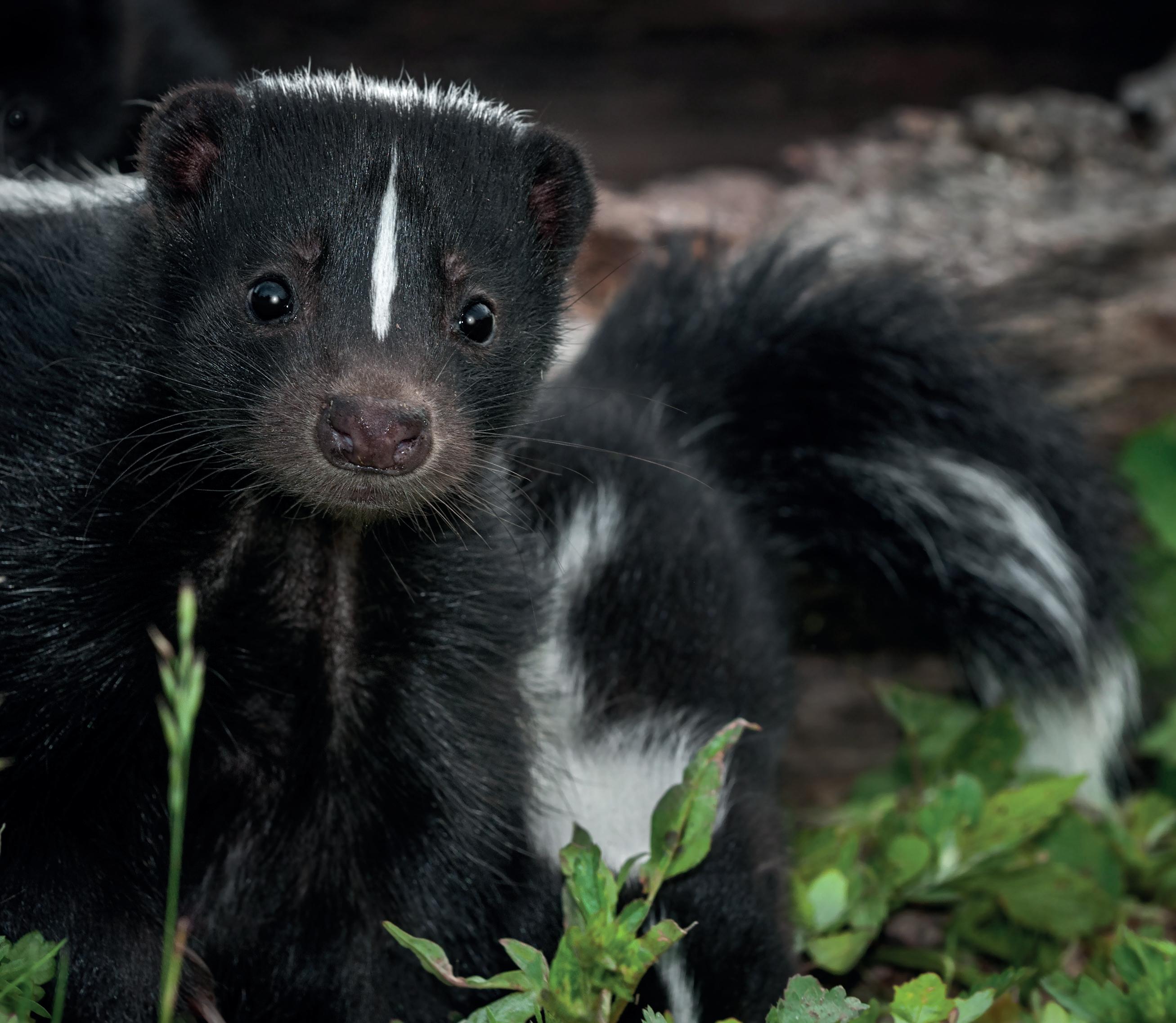
animal. Although, this is not certain. In the same way we should have no preconceived ideas of puppy or kitten personalities, skunks should be given the same patience and respect.
Julian continued: “No two skunks are the same and that is by quite some measure. When I’ve had 9 skunks at a time, some would be such passive, lovely animals. Others would be complete ‘idiots’ for lack of a better term. They can be like toddlers that never grow up.”
“There is nothing better than a good one. A well-rounded, socialised skunk is an animal that will actively seek you out for company, it’ll seek you out for warmth, I’ve had skunks that will join me in bed. I’ve also had skunks that are indifferent too, they just don’t care whether you’re there or not. They have
massive personalities and it’d be wrong to treat them all the same. Yes, this can be applied to any companion animal, but I think it’s particularly apparent with skunks. From an early age you can tell the ones that are outgoing and the ones that are passive.”
The ones which have been well socialised are becoming increasingly popular in hands-on educational experiences. Many zoos that have taken on or rehomed a skunk will use these animals to introduce young children to exotic pets. Various breeders also told us that many people are starting to see the benefits of ‘therapy skunks.’ Not only do these animals provide many of the same benefits of more domesticated companion animals, but they also introduce people to a species that is rarely exhibited in zoos.
23 JANUARY 2022
“I would suggest people take it with as much seriousness as getting a puppy. What skunks lack in size, they make up in personality”
Skunk behaviour
Highly cognitive species such as parrots and exotic mammals require extremely high levels of enrichment. Whereas puppies require consistent attention, skunks expand slightly on this as they will need to be provided with environmental, dietary, and mental enrichment to ensure they are properly cared for. A skunk’s personality can also change throughout its life. “They go through this ‘terrible twos’ phase” explained Julian. “At around 18 months to two years they get a bit nippy and a bit more challenging and this period really defines whether you will have a well-socialised animal, or one which might be a bit more challenging.”
“For a young skunk, everything is a game. They are notorious for toe-nipping, so if they nip your toe and you pull it away and make a noise, you are turning it into a game and that’s where this playing or nipping mentality gets installed. They will scavenge a bin; they will eat things they shouldn’t eat. God forbid your skunk gets into your snake room, or where you keep tarantulas or gets into an aviary! But, you can’t stop a skunk being a skunk.”
Just like training any animal, reinforcing negative behaviours is a serious issue. It is something we do with our dogs that causes them to beg for scraps. Keepers can very easily reinforce negative parrot behaviours, such as spilling food when a keeper is bitten, or providing highfat foods to satisfy the animal’s taste. Basic dog training principals can be employed for a whole range of taxa, and it is certainly beneficial for all pet keepers to familiarise themselves with animal behavioural training techniques.
Julian added: “Far too many people are concerned with asking questions of the animal and really, we should be asking questions of ourselves. IE how much time to do I have? Do I have realistic expectations? Can I cater for it? Do I have the budget for this animal? This logic should be applied to exotics, but it should absolutely be applied to domestics as well.”
There are a few tips that help the keeper prepare for a skunk. Toni Lister is another skunk breeder, who has dedicated an entire bedroom to her three pet skunks. She told Exotics Keeper Magazine: “Pet skunks do really like routine and can certainly tell when dinner time is. Whenever a new keeper takes a kit home, I will give them a list of things that the animals were on in my care, and I tell them to adjust it slowly from there. My adults get their last feed at 7pm and you can see them getting slightly restless from about 5 onwards. Even though they’re nocturnal and they have their own bedroom, they don’t tend to keep us awake. I don’t think they’re truly nocturnal. Instead, we’ll hear them having a bit of a play for two or three hours, then when they’re bored, they tend to settle back in to sleep, especially during winter when they’re less active.”
“Their bedroom is full of toys, tunnels and scratch posts but it is possible to keep them outside. I also keep ferrets in an outdoor aviary style set up which can be applied to skunks. With skunks the most important thing is to make it bomb proof. It needs to have a full concrete floor, robust walls and be entirely escape proof as well as a reliable heated area.”
Skunk diet

Obesity is extremely common in pet skunks. While we love to treat our dogs and cats and can often put aside the nutritional requirements of our beloved animals in favour of giving them a little treat, skunks are much more susceptible to piling on the pounds. Furthermore, their omnivorous nature means that almost everything is on the menu. For keepers, this can create more challenges than caring for a species with extremely specific dietary requirements.
“When it comes to feeding skunks, they’re omnivorous and not fussy, but they are extremely sensitive to sugar” explained Julian. “We need to make sure their taurine levels are balanced, and we need to make sure their diets are supplemented properly, but they’re not a difficult animal to feed providing we consider these things.”

Pepé le Pet
“We should be avoiding anything from the bulb family. No onions, no radishes, nothing like that and there is a debate around grapes and raisins too. Any food when fed in excessive quantities can be to the animal’s detriment, we should be offsetting all nutrient profiles with other food stuff. The things I feed in higher frequencies are day old chicks and loads of live foods such as crickets, locust, morioworms and mealworms. You have such a brilliant opportunity there to provide enrichment. Puzzle boxes, sandboxes with buried live foods, hiding chicks in plastic boxes etc..”
This method is also employed by many zoos. Skunks tend to eat as much as possible, as quickly as possible, making
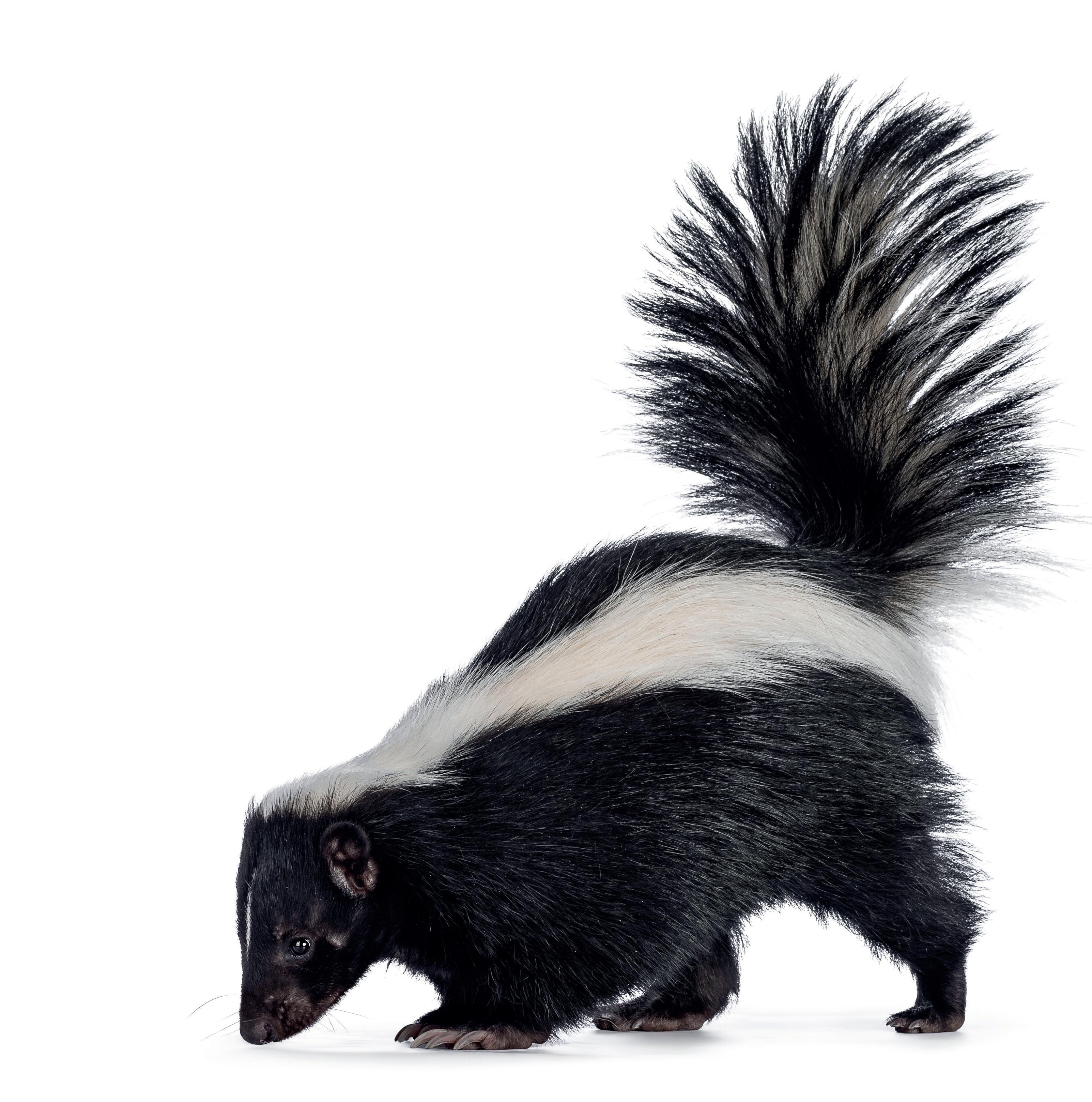
same for skunks. Finding a good skunk breeder, building a relationship, waiting for a kit, it all takes time. There are very few people who would wait 18+ months for a kitten. If someone is happy to wait 2 years for the perfect skunk, they’re more likely to give it a great home. There’re enough breeders out there to ensure skunks generally get a good home. They’re certainly not a species that is causing any problems from a re-homing perspective. In fact, a lot of breeders will happily take back skunks if someone’s circumstances change.”
“A hand-reared, well-socialised kit is also an expensive animal. What tends to happen is while someone is searching for a kit, they may come across a slightly older
Pepé le Pet
Pepé le Pet
De-scenting skunks became illegal in the UK under the Animal Welfare Act 2006, halting some demand for these previously increasingly popular animals. Just like ear clipping or tail docking, removing a skunk’s scent gland is seen as an unnecessary modification. Although in some instances this operation has protected some unmanageable individuals from euthanasia, causing some room for debate amongst hobbyists. New keepers should act responsibly and accept the possibility that the animal may spray the keeper at some point.
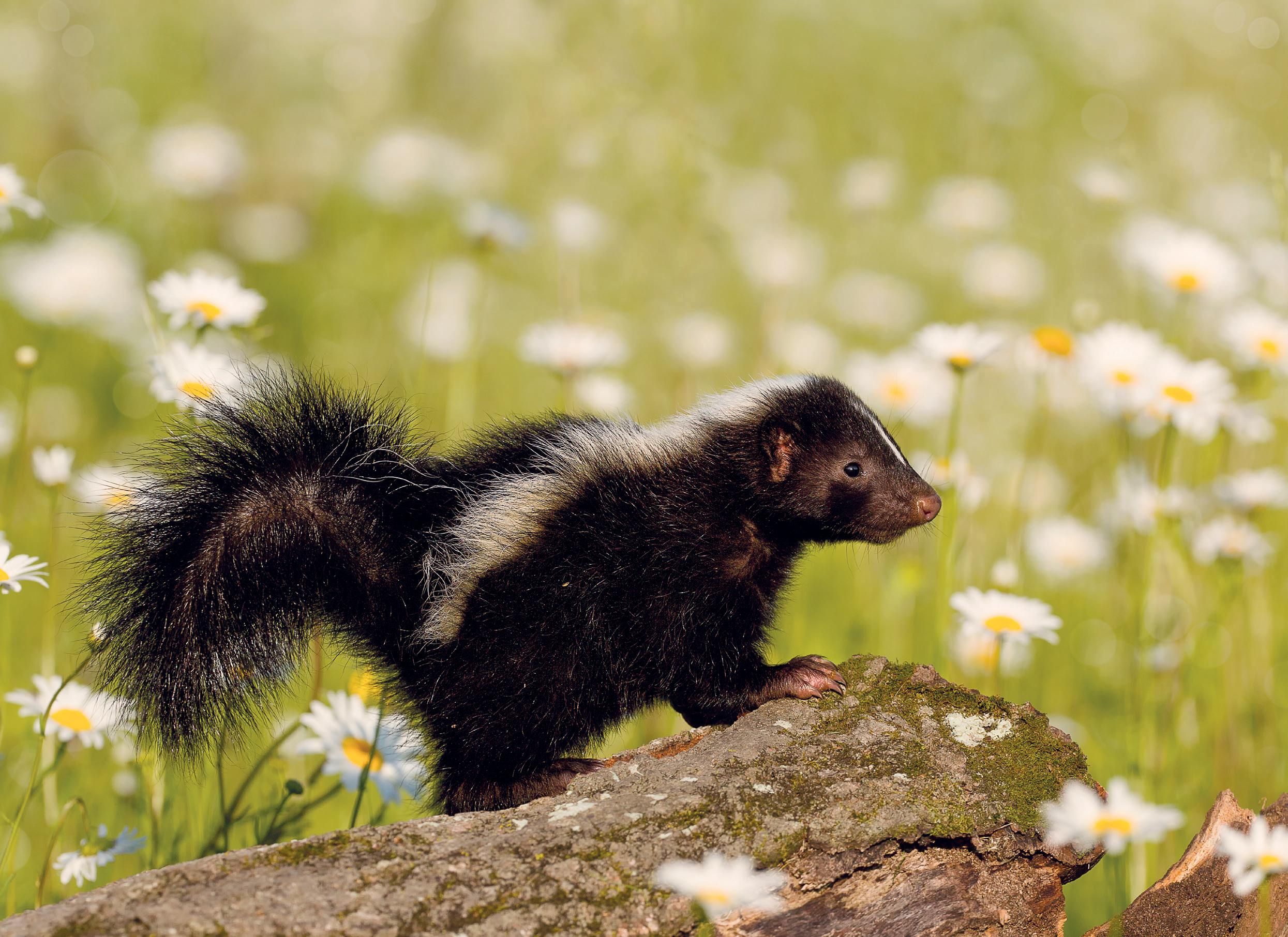
There are other veterinary responsibilities required when keeping skunks. Although they mirror the procedures we commonly impose on cats and dogs, dealing with exotics creates another challenge for the new keeper. “Finding a good exotics vet is very important” added Toni. “I was extremely lucky that my vet covers both domestic and exotics, but this can be a challenge for some people. All animals should have their injections as skunks can contract distemper just like dogs. Mine are wormed, de-flead and have weight checks every month also. I would also
recommend keepers get their animal spayed. Ultimately, it’s down to the keeper, but it does prevent some of the potential problems that new keepers can encounter.”
No spray no play
Undeniably, the skunk’s most famous trait is its defence technique of spraying a foul-smelling liquid from its anal glands. Eternalised in various cartoons and cemented in pop culture, skunks undeniably pack a rather smelly punch. However, skunks cannot spray continually. In fact, once a wild skunk uses its primary form of defence, it is left defenceless for up to a week as it refills its anal glands, meaning skunks are generally hesitant to use it.
Much like many New World tarantulas, having a primary defence mechanism means this species is less likely to use its secondary defence mechanism which is to bite. There are countless taxa that rely on a rather nasty primary defence which contributes to them being a more manageable and docile pet species.
Although skunks probably do not spray nearly as much as fiction tells us, responsible keepers should always consider that this is a significant risk. “If you take a pet skunk on, expect to get sprayed at some point” commented Julian “If you can’t handle that, don’t get a skunk.”
“If you’re lucky enough to have a skunk for 8 or 9 years and it never sprays, well done, you’ve had a great experience! But you should always think ‘if it sprays, am I going to be able to deal with that?’ I’ve been sprayed loads of times. Young kits will often spray if they get a bit excited, but a fullblown spray from an adult really is something to consider. Although, they will give you plenty of warning. They will posture, they will stamp, they will turn their bum towards you. It’s the sort of thing you could pick up on even if you’ve never had any experience with skunks. Most skunks in captivity in the UK are well-reared and well socialised, so spraying isn’t a major issue. However, keepers must understand that the potential is there.”
Do skunks make good pets?
The definition of a ‘good pet’ will change between keepers. Some of the most knowledgeable and wellequipped herpetologists still might not have enough time
to care for a ‘beginner’ reptile. Equally, someone with little experience of exotic mammals might have all the time, research and resources to provide a great home to a skunk. Understanding whether an exotic mammal and more specifically, a skunk, is suitable for you requires a good analysis of your own situation.
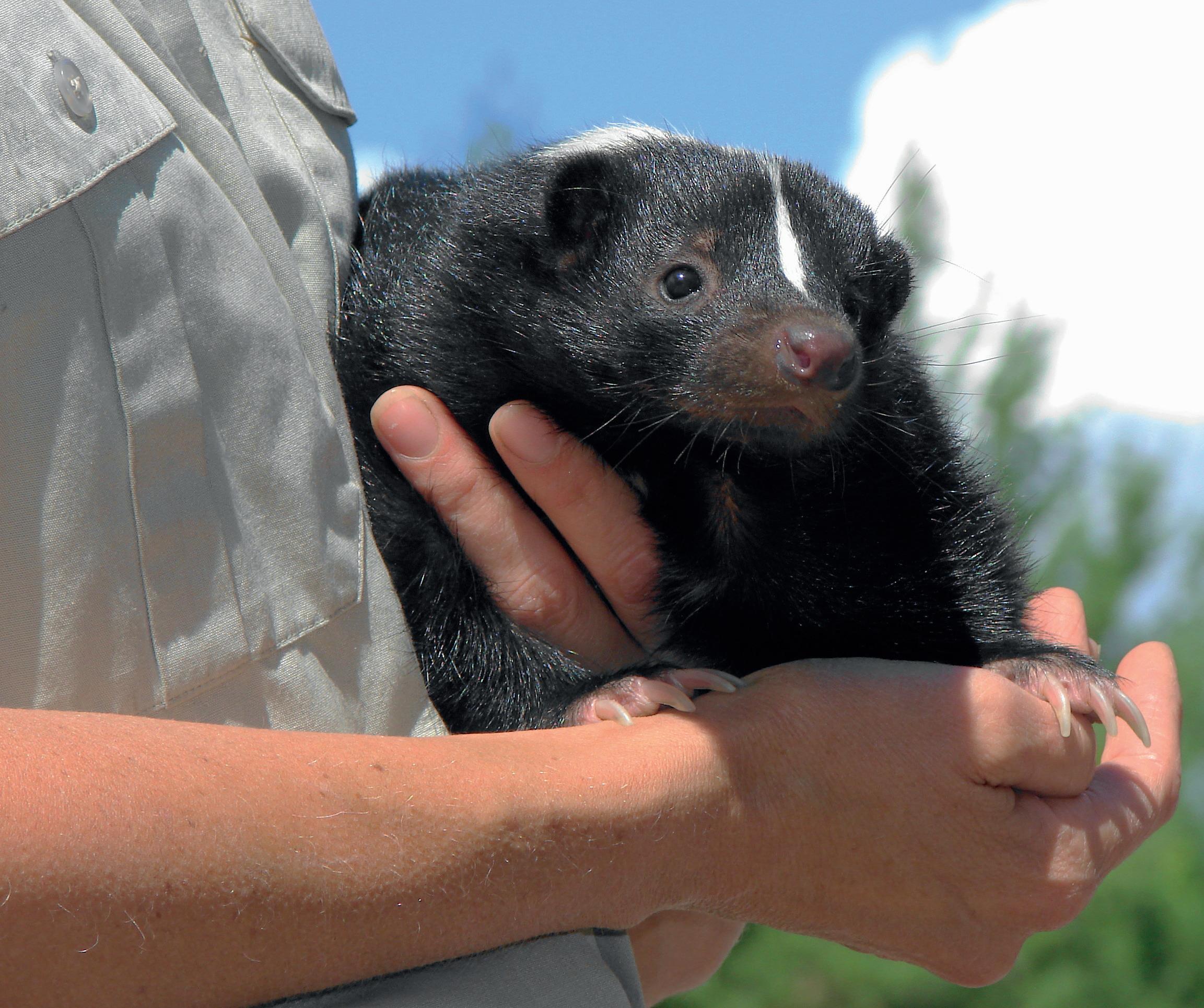
Julian concluded: “People seem to pair ‘exotic’ and ‘difficult’ and it really doesn’t have to be. You just need to stick to some golden rules with skunks. Understand fundamentally what the animal is and understand what that fit is with our lifestyle. Do your research, play the long game, get to know the breeder. When it comes to exotic pet keeping, it comes down to being a responsible keeper.”
For the right person, skunks can be preferable to cats and dogs. Their sleepy habits, manageable size and huge personalities makes them very appealing. Equally, those who are not accepting of their raw diets, inquisitive nature, and the potential of an occasional spray, should certainly keep well away. However, when we compare how many dogs and cats are rehomed each year and how abundant these animals are, maybe we should begin broadening our definition of a ‘good pet?’
27 JANUARY 2022
“If you could take a lot of the positives from dogs and a lot of the positives from cats and roll them into one animal, in a lot of respects, you’ve got a skunk. You’ve got the aloofness and the independence of a cat but in some instances, you also have the companionship and laziness of a dog.”
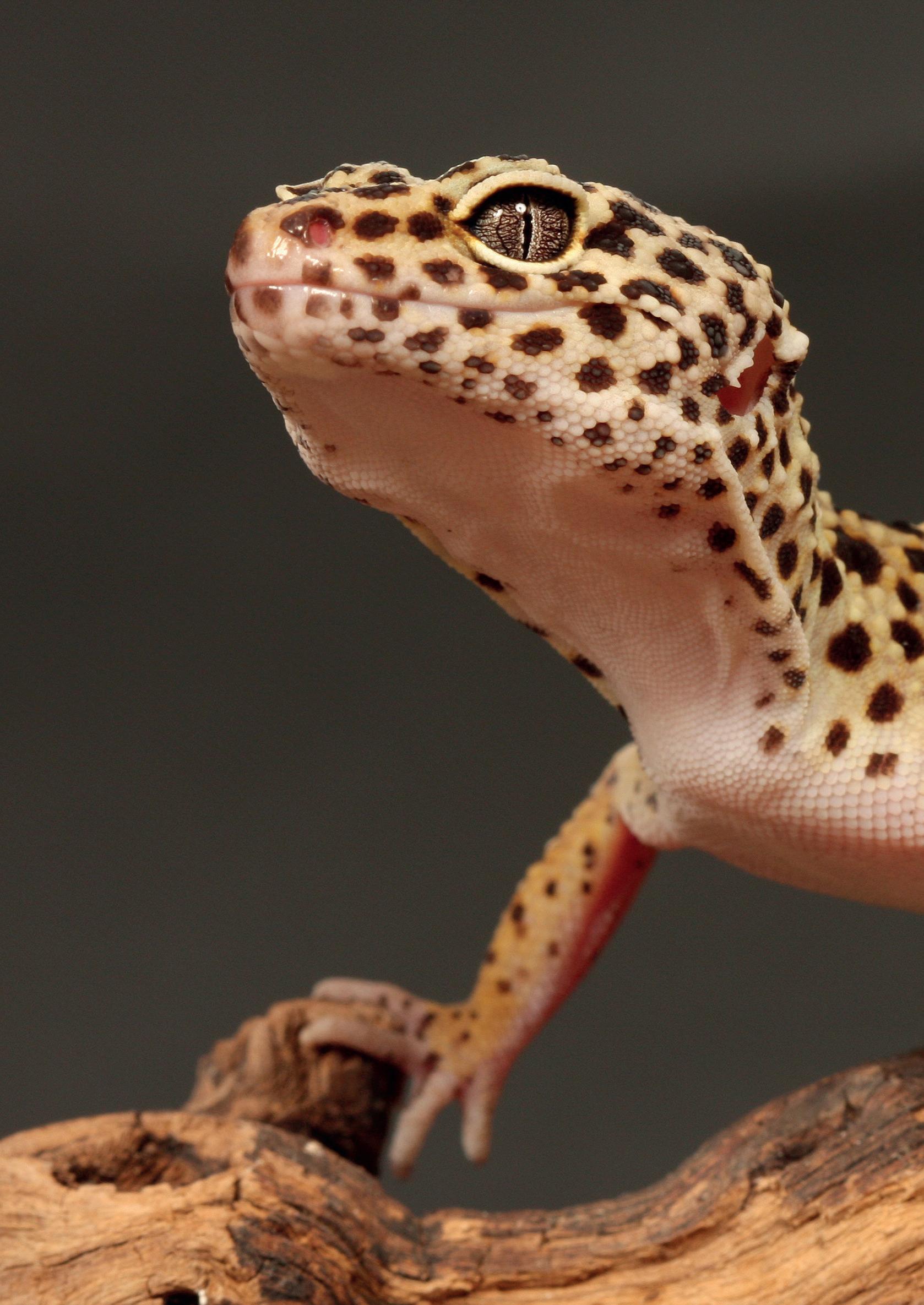 Leopard Gecko (Eublepharis macularius)
Leopard Gecko (Eublepharis macularius)
OUT OF THE DARK, INTO THE LIGHT
Providing UV for Zone 1 animals.
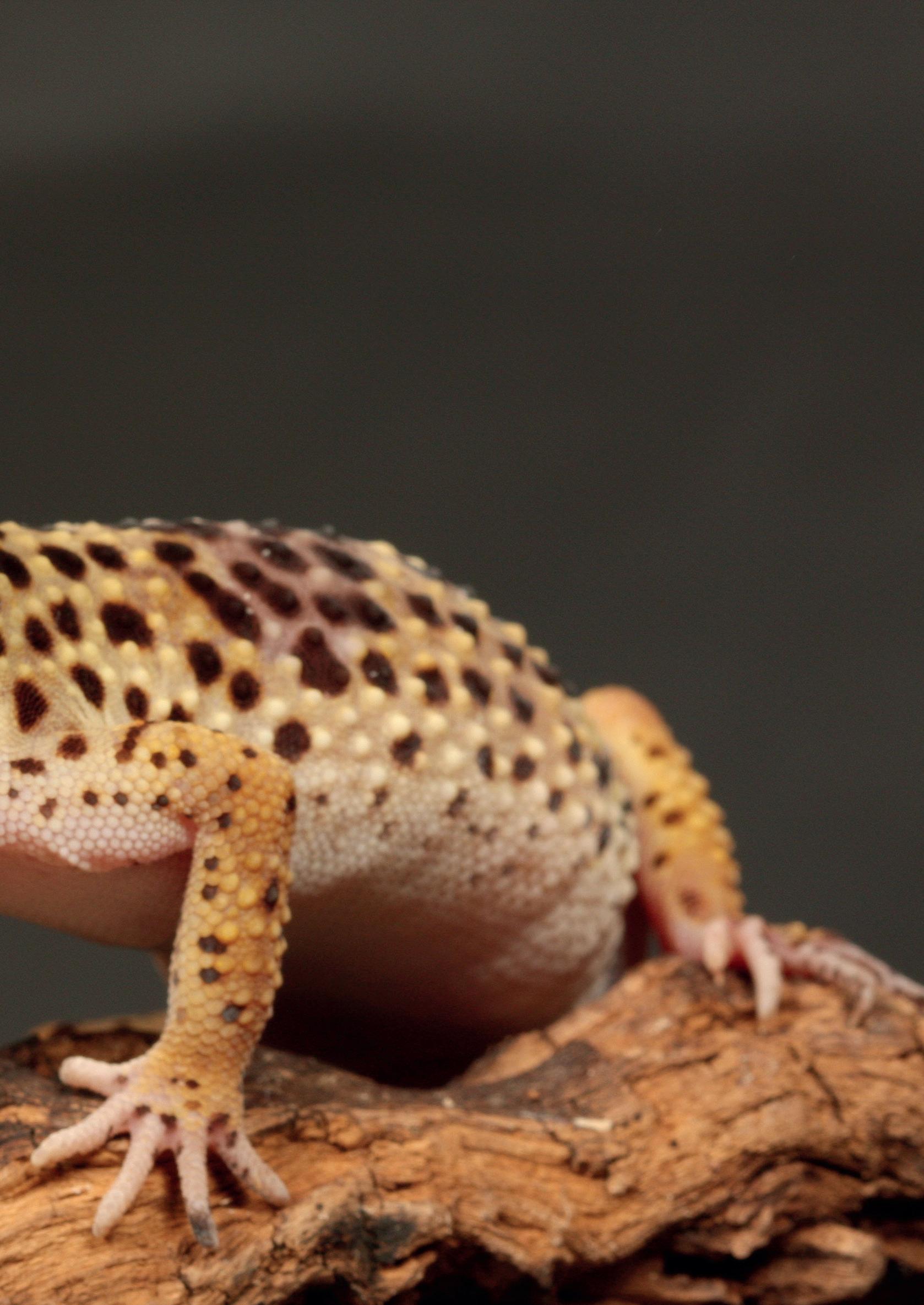
We know that providing a full spectrum of light that includes UVB and UVA is beneficial to the health of any animal that is naturally exposed to sunlight. Although progress cannot happen overnight, most keepers have adjusted to this change enthusiastically, seeing incredible results and natural behaviours from their animals. Vets are seeing much healthier bearded dragons (Pogona vitticeps), keepers are seeing more active day geckos (Phelsuma spp.), breeders are having much more success with panther chameleons (Furcifer pardalis) and the entire hobby has witnessed improvements in Chelonia welfare, the world over. However, there is one Ferguson Zone that still holds some apprehension from experts with a history of keeping various animals without UV.
Natural behaviours and the UV tool
Some species will naturally receive less exposure to UVI than others, despite inhabiting the same environments. Tiny terrestrial dart frogs that spend much of their lives amongst the leaflitter are unlikely to see as much sun as a basilisk (Basiliscus spp.), basking in a forest clearing or waters edge. However, that does not mean that these species do not receive any sunlight. Similarly, sand boas (Eryx spp.) will spend most of their life underground, away from any light at all. However, when they do surface, they are exposed to very high levels of UV. Behavioural categorisations are therefore necessary to uncover how much UV exposure our animals require and while these studies are far from complete, we are now developing a much better understanding.
Following from Gary Ferguson’s model of categorising reptiles and amphibians via their natural behaviours and exposure to UV, various researchers from institutions across the world created the ‘UV tool’. Based on field research from BIAZA RAWG committee (and ex-committee) members, it is the best tool we have to understand the correct level of UV for our captive animals. This paper takes into consideration the basking
behaviours, as well as physiological elements that may affect a species’ ability to effectively synthesise D3.
The paper, first published in 2016 in the Journal of Zoo and Aquarium Research by Baines, et al states: “Traditionally, it has been assumed that nocturnal and crepuscular species do not require UV lighting because their lifestyle precludes exposure to daylight, and/or they obtain all the vitamin D3 they require from their diet. Although carnivores may obtain sufficient vitamin D3 from the bodies of their prey, the natural diets of insectivores are unlikely to provide any significant amounts of the vitamin, making cutaneous synthesis the most likely primary source. More than 60 years ago, reports were collected of supposedly nocturnal reptiles experiencing at least some exposure to daylight, either by occasional daytime forays or by incidental exposure to light in their sleeping places. House geckos, Hemidactylus frenatus and H. turcicus, are often seen in daylight around dusk and dawn and Tarentola mauretanica can regularly be seen basking in the sun for periods throughout the day. Without evidence from 24-hour observational field studies, it cannot be assumed that any nocturnal species receives no sunlight at all.”
30 JANUARY 2022 Out of the Dark, Into the Light
Nocturnal and crepuscular species
Nocturnal and crepuscular species are generally the most contested by herpetoculturists when discussing the provision of UV. Unfortunately, some of the most widely kept species in the UK fall under this category. Leopard geckos (Eublepharis macularius), crested geckos (Rhacodactylus ciliatus), corn snakes (Pantherophis guttatus) and various tree frogs are all considered ‘Zone 1’ animals.
“It has been speculated that crepuscular species may synthesise vitamin D3 by emerging into sunlight at dusk and dawn. However, when the sun is close to the horizon, the atmosphere filters out almost all the UV-B wavelengths required for vitamin D3 synthesis; species which can benefit from such low levels of UV need skin
with very high UV transmission. Some nocturnal geckos, for example, fit into this category. Short wavelength UV-B has been shown to be transmitted through the full thickness of skin of the nocturnal [Western banded gecko] (Coleonyx variegatus) to a depth of 1.2 to 1.9 mm, in stark comparison with diurnal species such as [the sideblotched lizard] (Uta stansburiana), in which transmission was restricted to between 0.3 and 0.9 mm. In the same study, Porter found that the skin transmission of seven species of snake reflected their behaviour, such that the highest transmission was seen in the most completely nocturnal species, and the lowest in diurnal species, with crepuscular snakes in between. This suggests one way in which low levels of UV-B may enable adequate vitamin D3 synthesis in nocturnal species. Carman demonstrated that the skin of the nocturnal house gecko (Hemidactylus
turcicuscan) synthesises vitamin D3 eight times more efficiently than skin from the diurnal [Texas spiny lizard] (Sceloporus olivaceus) – suggesting that this is an adaptation either to lower levels of available ultraviolet light in its microhabitat, or to very short exposure to higher levels, during brief day-time emergences from shelter.”
Although many species have adapted to meet their UV requirements in the wild, there is still a lot of research to be done on individual species. Some of the most established pet reptiles have reached their popularity becomes of their seemingly hardy nature. Leopard geckos have been kept successfully in captivity for almost 50 years, before keepers even considered providing UV. That does not mean that these species do not benefit greatly from the provision of UV and ultimately lead to healthier animals.
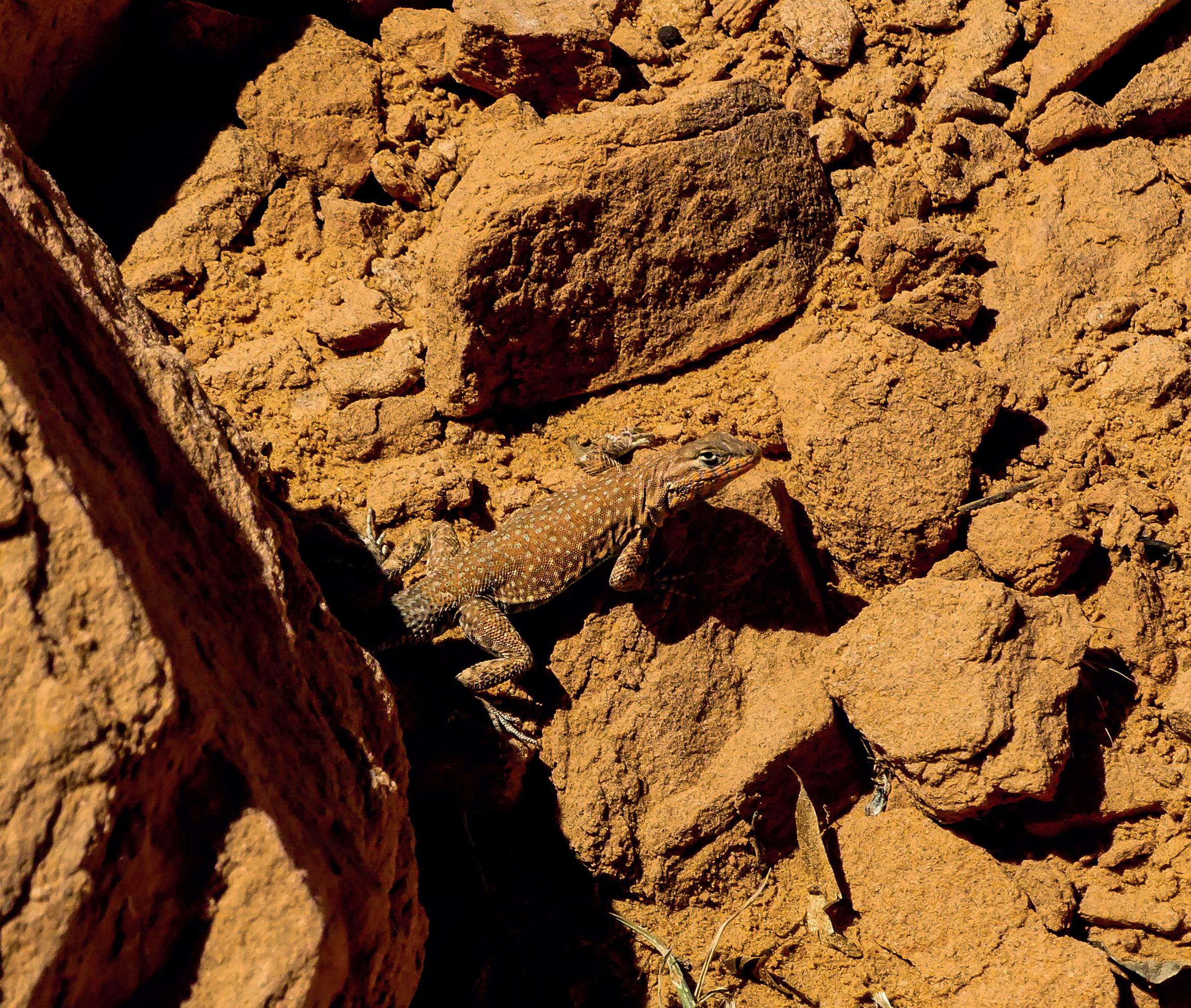
31 JANUARY 2022
Side-blotched lizard (Uta Stansburiana)
“Leopard geckos (Eublepharis macularius) synthesised vitamin D3 when exposed to low-level UV-B; 25-hydroxyvitamin D3 levels in exposed animals were 3.2 times higher than controls receiving only dietary supplementation. Crepuscular snakes such as the corn snake, Elaphe guttata, have also been shown to synthesise vitamin D3 in the skin when exposed to low levels of UV-B from fluorescent lamps.”
“The vitamin D3 requirement of some nocturnal species may be low; passive absorption of dietary calcium by vitamin D-deprived leopard geckos, for example, appears to be effective enough to prevent metabolic bone disease. However, the paracrine and autocrine functions of vitamin D3 are independent from calcium metabolism; more research is needed to assess the full effects of vitamin D deficiency. To summarise, some nocturnal animals clearly do have the ability to synthesise vitamin D3 in their skin, and this would occur naturally whenever they were exposed to daylight. So, there would seem to be no reason to withhold provision of full spectrum lighting, provided that they are able to spend the daylight hours in an appropriate retreat, with access to a UV-B component suitable for a shade-dwelling or crepuscular species (i.e. Ferguson zone 1).”
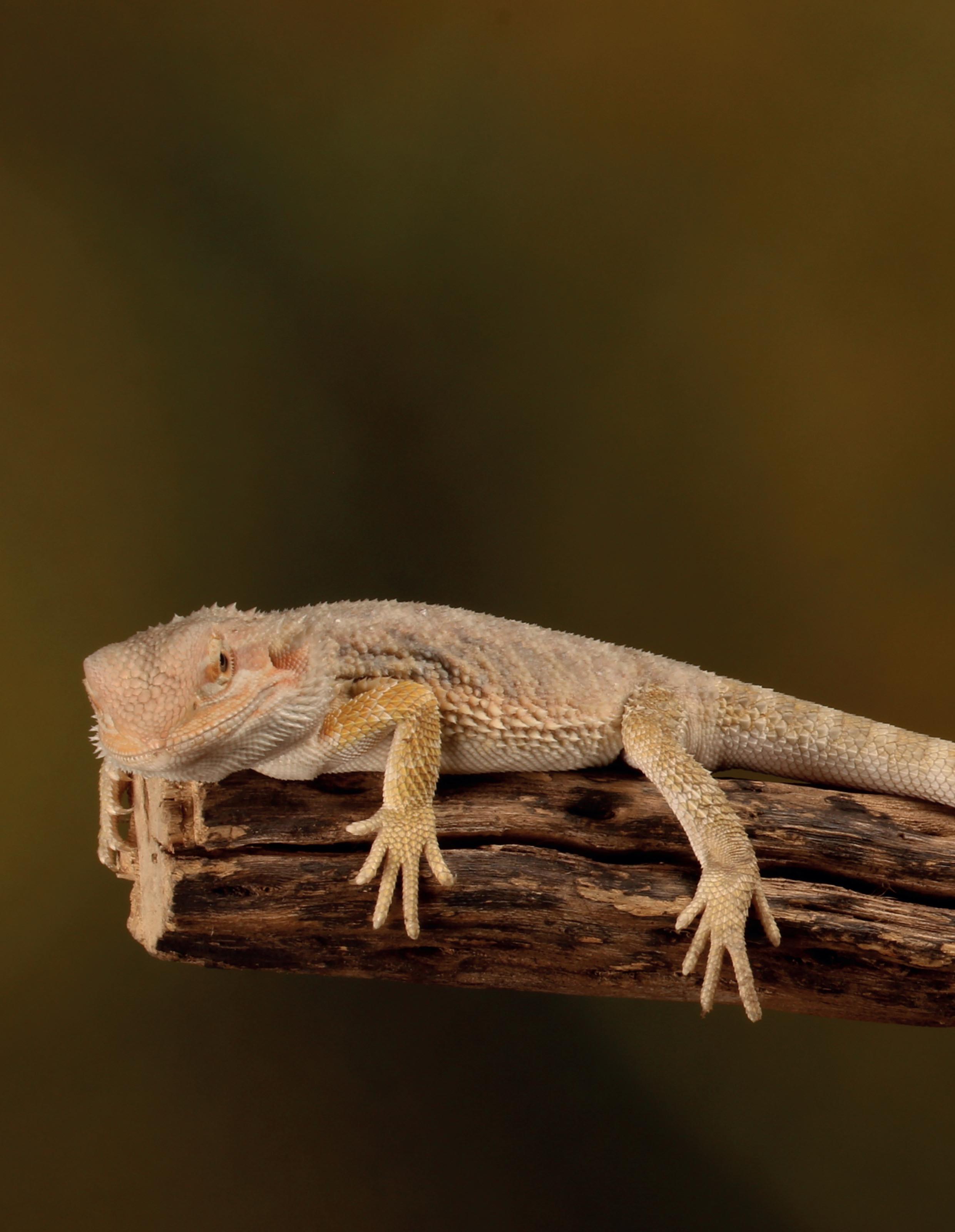
Implementing Zone 1 lighting
Of course, not all species that are categorised as ‘Zone 1’ are strictly crepuscular or nocturnal and the Ferguson Zone method is not a ‘one size fits all’ approach. Albino and hypomelanistic animals will typically be more susceptible to UV radiation than other members of their species. Some species such as green tree pythons (Morelia viridis) are categorised as Zone 1 animals and are nocturnal, but will naturally receive a varying amount of UV in the wild, depending on their resting perch. The key here is to provide gradients and choice. Strategically placed hides, with décor that allows the animal to move closer to and further from the light source is crucial to ensuring UV is implemented correctly.
“The concept is designed to enable creation of wide, safe UV gradients combined with heat and light gradients, enabling reptiles and amphibians to photoregulate and thermoregulate simultaneously, throughout the day. This requires the sources of UV, visible light and infrared radiation to be positioned close together, simulating sunlight, and creating a basking zone at least as large as the whole body of the animal. Multiple lamps may be required in some cases; the effects are additive for all wavelengths, so overlapping beams must be used with caution. It also requires provision of adequate space and shelter, away from the lamps, for suitable gradients to form. Provision of shade is vital for all species, regardless of their Ferguson zone.”
JANUARY 2022 32
Out of the Dark, Into the Light
Out of the Dark, Into the Light
For most Zone 1 animals, the ‘shade method’ is used, which provides a broad spread of UV, as opposed to a spot lamp. This will usually be in the form of a T5 or T8 unit attached to the ceiling of the enclosure or placed above the mesh of a glass enclosure. Compacts in canopy tops are also used and with UVB/LED technology now available, this will likely become increasingly popular. Of course, each unit will have a different spread of light, so décor placement is crucial in providing choice. Also, transmitting UV through a mesh top can reduce the UV readings by up to 30%. In some cases, it may be more appropriate to purchase a Zone 2 bulb if it is to be transmitted through a conventional mesh top.
Advice for installing UV lighting
There are a lot of different ways to provide UV lighting to our animals, which ultimately boils down to selecting the correct product for both the animal and the enclosure itself. This is not always as easy as installing a light fixture and many people can go wrong at this point in creating their reptile set up.
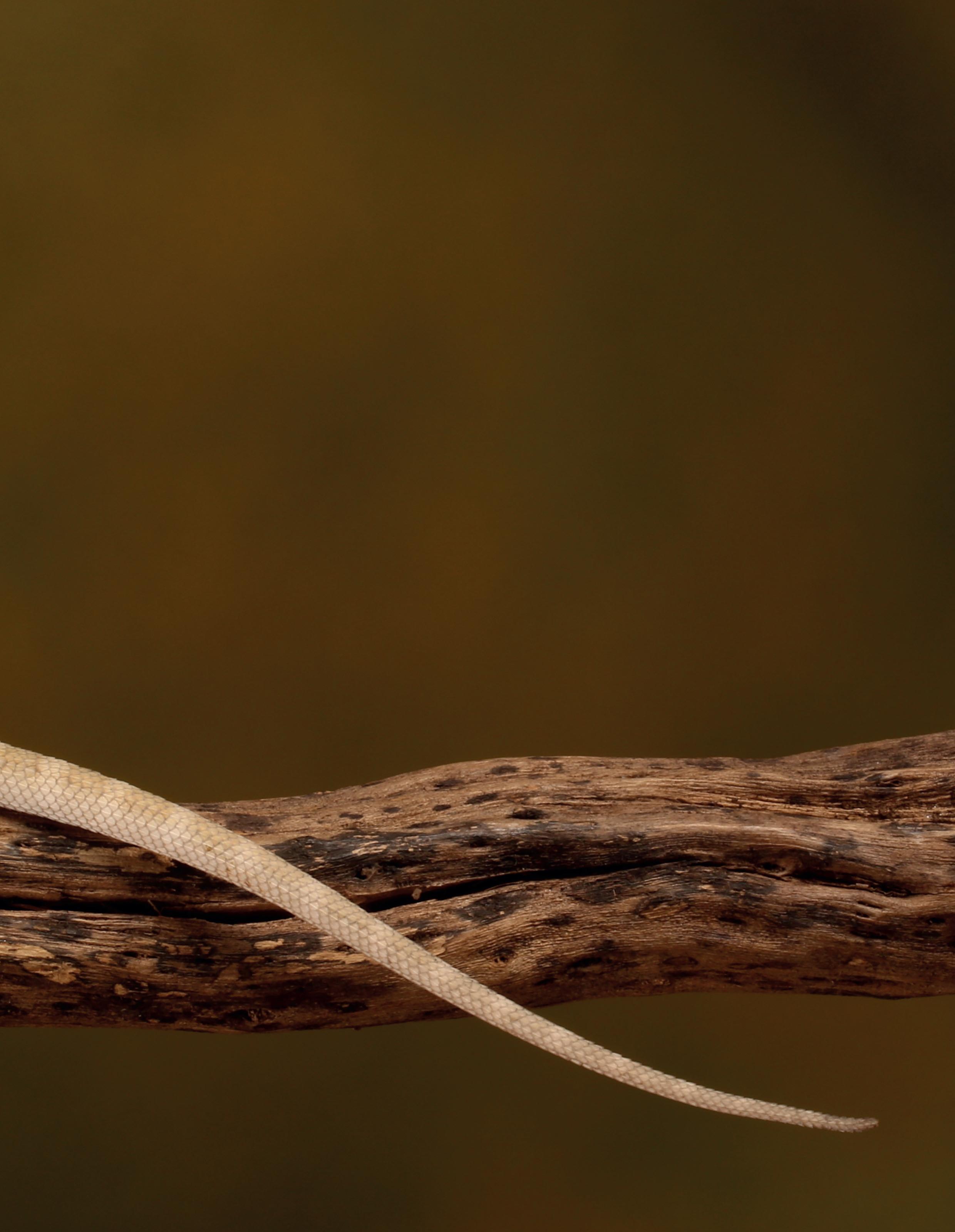
Peter Blake, Marketing Executive at Reptile Systems said:
“
Some of the main things that people get wrong when installing UV lighting are normally based on its location and orientation. This is split into several categories. The first is a misunderstanding in the relationship between distance from the lamp, expected UVI, and how light spread works. This effect will be greatly influenced by which ballast unit
you use to power your lamp. If you are using a conventional starter unit, the light from the tube will radiate evenly in a 360°pattern causing much of the energy to be wasted. By using a standard reflector with a polished surface, the light can be focused downwards, greatly improving its efficiency. The shape and properties of the reflector in the lamp unit can double and even in some kits, treble the amount of UV delivered to your chosen basking zone.”
“Secondly, common sense tells us that as we move further away from the UV source its intensity will diminish, what may not be so apparent depending on the shape of the reflector is that the further away we get, the footprint of light will cover a greater area at a lower value. This is where good retailers with UV meters and a wealth of amassed knowledge are such a boon. They can help you plan your enclosure, set the right distance for a basking platform, and ensure you have the correct gradient throughout your enclosure. Never lower your lighting to increase UV on your basking site, always raise the basking platform.
“Another overlooked factor is not considering any barriers that will cut the amount of UVI getting to the animal. This can include cage décor, plants, and their leaves but the most overlooked obstacle is the build-up of mulm, detritus and limescale stains caused by spraying. Cleaning your lamp and reflector will keep their performance at optimal levels. If you site your equipment above a mesh screen or in a suitable guard these need to be regularly cleaned as part of your maintenance regime. Thick dust on a mesh screen can dramatically reduce the gauge of the mesh.”
33 JANUARY 2022
Crested gecko (Correlophus ciliatus)
TOP TIPS
London’s Calling
The future of UV

Basking temperatures and ambient temperatures must be suitable, to ensure basking behaviours – and therefore UV exposure times – are natural, neither abnormally short nor prolonged.

Lamps should always be positioned above the animal, so the shape of the head, and upper eyelids and eyebrow ridges when present, shade the eyes from the direct light.
All lamps present an electrical risk, and many also present the risk of thermal burns and UV burns if the animal can approach too closely. All bulbs should be inaccessible to the animals; wire guards may be necessary.
Wide wire mesh should be chosen where possible, to maximise light and UV transmission.
Ordinary glass or plastics must not be placed anywhere between the lamp and the animal, as these normally block transmission of all UVB. Some high-transmission glass and specialised UVtransmitting acrylics will, however, allow a certain proportion through, although even these materials selectively block shorter UV wavelengths.
As the provision of UVB lighting becomes commonplace in the hobby, it is important to remember that research is still developing. Luckily, our beloved reptiles and amphibians with their ectothermic nature and prominent relationship with the sun, has allowed for many species to be studied. Although there is scope to develop research around existing species, almost every reptile or amphibian we are likely to encounter in a pet shop has now been categorised. Although, there are a wealth of taxa across the world from the private keeping of birds and mammals to the important conservation work of zoos and ex-situ breeding projects.
Peter concluded: “I think it is important to continue with field research in all species, not just reptiles and amphibians, but also birds and exotic mammals that are kept in captivity. We know how important D3 is for humans and how the lack of exposure during winter months is linked to Seasonal Affective Disorder so it would follow that any mammal could also be impacted within a captive situation. The way birds interact with the sun is on a three-dimensional basis, so it makes it much more difficult to record or implement. They also have prolonged exposure as opposed to ectotherms. As for the herpetoculture hobby, I think some of the studies already done on how captive bred insect`s can benefit from UV are very interesting. The impact of UV lighting and increased nutritional value of feeder insects could be the next step in improving live food.”
Herpetoculture is moving forward at a brilliant pace. Although there is plenty more research to be done, our understanding of the relationship between herptiles and UV exposure has grown significantly, allowing every keeper to provide higher welfare standards. It has also opened discussions from keepers of all experience levels who are making incredible observations of natural behaviour. Now the tools are available, we can continue to build.
JANUARY 2022 34
34
Other considerations by Baines, et al
Out of the Dark, Into the Light

35 JANUARY 2022
Out of the Dark, Into the Light
Texas spiny lizard (Sceloporus olivaceus)
UNITS ECO T5

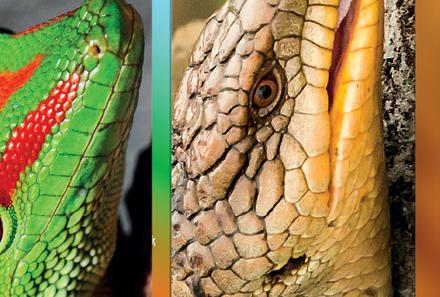
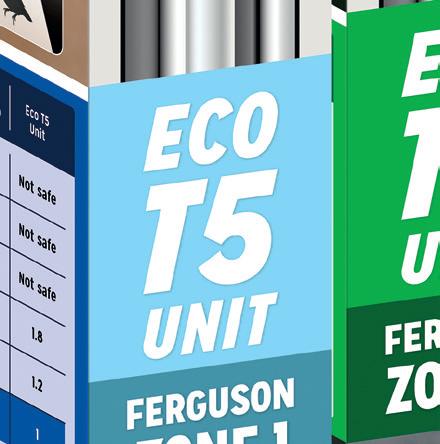






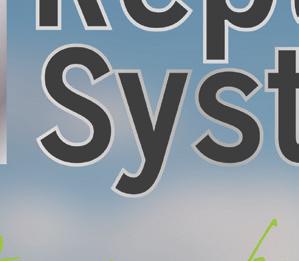


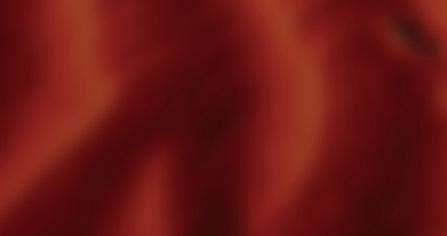

The new Eco T5 units come supplied with next generation UVB tubes, designed to replicate the profile of sunlight.

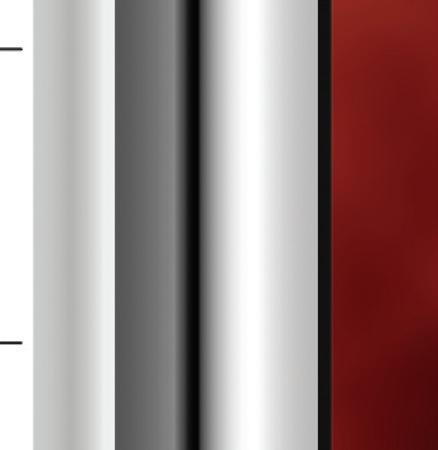
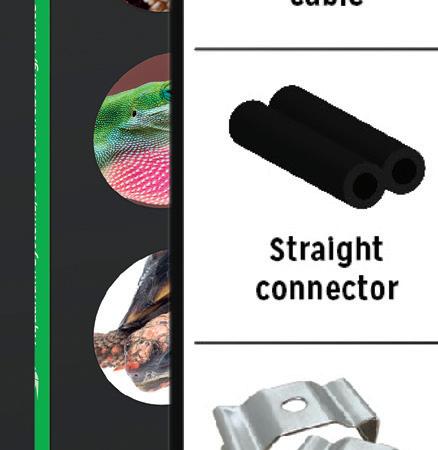
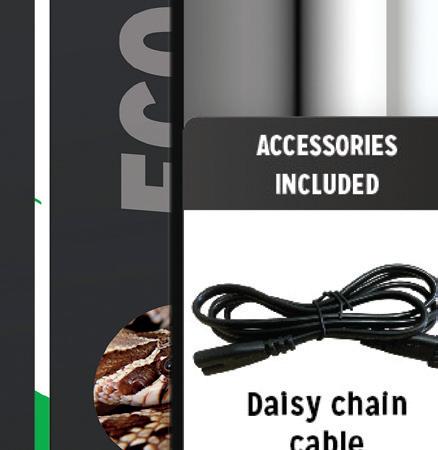



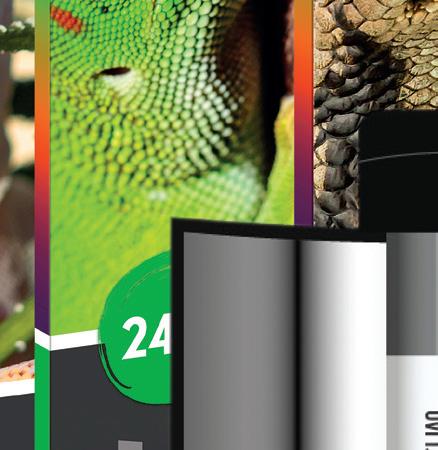
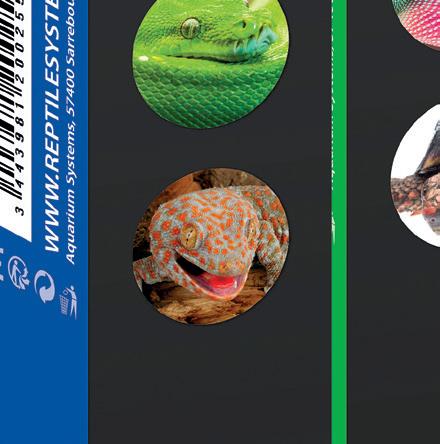
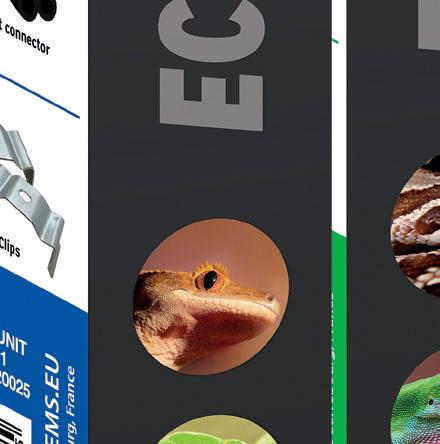

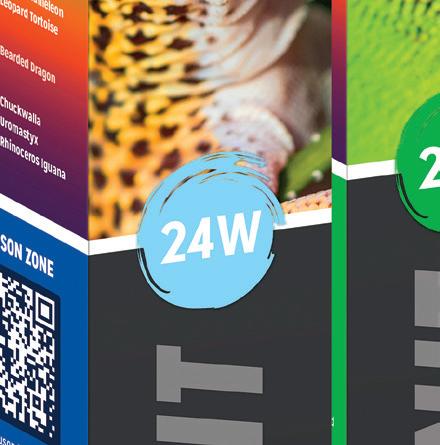
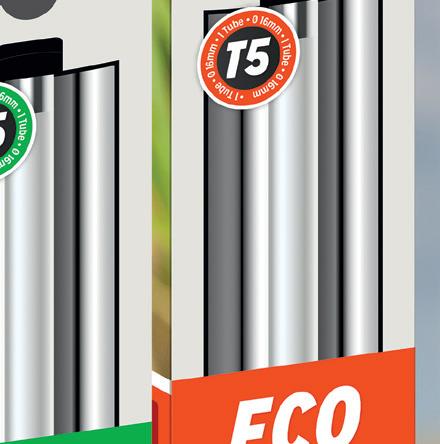


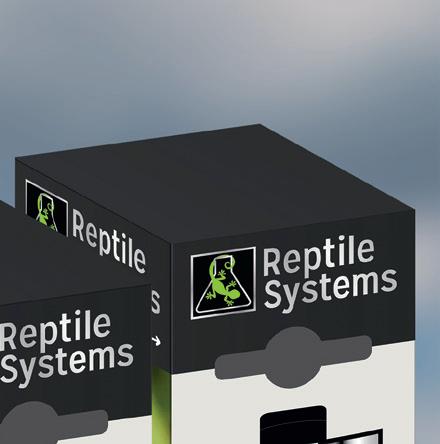
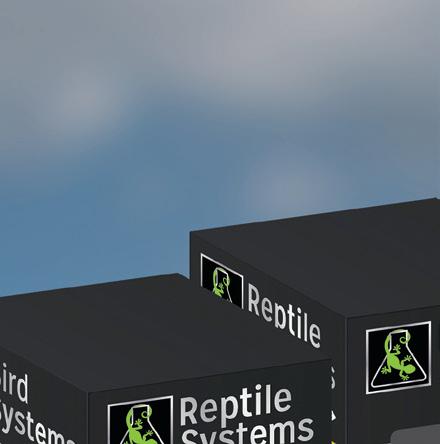






Available in three Ferguson Zones and three sizes, each unit comes with a removable 103° reflector to provide a powerful wide spread of light.
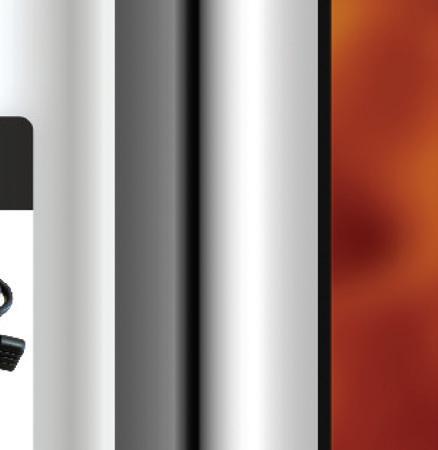
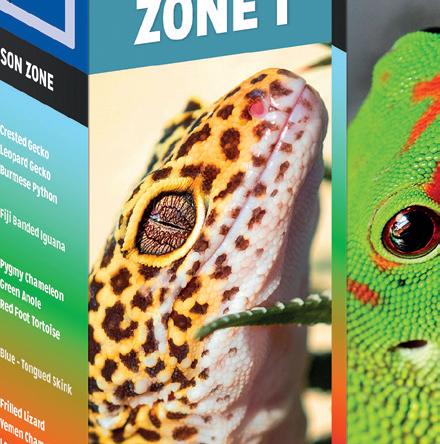
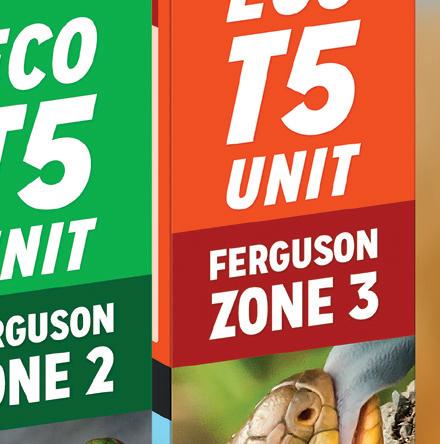
KEEPER BASICS: SUPPLEMENTATION

37
Marginated tortoises (Testudo marginata)
One thing that is crucial to keeping reptiles and amphibians (and most taxa) in captivity is the provision of supplements. Whilst we can effectively simulate the light and heat from the sun, grow geographically sound plants in our enclosures and provide realistic photoperiods, rain cycles and humidity gradients, we cannot perfectly replicate an ecosystem’s total biological tapestry. It would be impossible to provide the wild diet of most reptiles and amphibians, let alone provide the correct foods to build that diet’s nutritional profile. Short of harvesting wild bugs and risking the health of our captive animals, herpetoculturists must provide a calcium, vitamin and mineral supplement/s to give their animal the healthiest food intake.
The heart of husbandry
Poor nutrition is the leading cause of illnesses in captive reptiles and amphibians. However, this is not as straightforward as providing the wrong supplement. Lighting, heating, humidity and other environmental factors influence how well our animal’s function biologically, including how well they respond to supplements.
UVB radiation from the Sun allows for Vitamin D synthesis which then helps to absorb calcium for the development of healthy bones. Previously, metabolic bone disease caused by lack of UVB was extremely common the hobby. In the wild most reptiles would take in calcium within their natural diet or feeding habits and sunlight would provide adequate UVB radiation. Of course, this differs across species. Species who are typically exposed to less UV are generally more capable of synthesising vitamin D3 supplements through their diet, with MBD being a bigger issue for sun-worshipping reptiles such as bearded dragons and green iguanas. We know now that all reptiles benefit from UVB lighting, and this helps them synthesise vitamin D naturally as opposed to excessive supplementation.
Calcium & D3 overdosing
Calcium is a mineral that is necessary for life. As well as a plethora of blood and muscular benefits, calcium is most famous for helping bones grow strong. In addition to calcium, reptiles will also ingest many other essential minerals and vitamins. One often overlooked mineral is Magnesium, which is essential for bone development, regulating muscle and nerve function, blood sugar levels, blood pressure and making protein. Most calcium supplements on the market today have a combination of both elements, to ensure optimal bone development.
Mediterranean tortoise species such as hermanns (T. hermanni) or marginated tortoises (Testudo marginata) would naturally source their calcium from a variety of methods. In the wild, they would typically be found grazing on shrubs and grasses which grow in calcium rich soils, thus containing a high level of calcium. Cacti such as ‘prickly pears’ offer up a high concentration of calcium, making them a preferred snack for these species. As well as ingesting small amounts of limestone, tortoises are known to chomp on snail shells and skeletons of dead animals to ensure their calcium needs are met.
38 JANUARY 2022 Keeper Basics: Supplementation
Other species such as veiled chameleons (Chamaeleo calyptratus) would generally require less calcium in their diet but be exposed to high levels of UV and prey that are covered with calcium rich dust prevalent to the natural environment in which they are found. This is where supplementation gets a little trickier. Providing a vitamin D3 supplement, alongside strong UV radiation can cause certain species to synthesise vitamin D too much and lead to hypervitaminosis D. This then opens the flood gates for excessive calcium absorption and can cause problems within the intestines and kidneys as they are calcified, leading to further health complications.
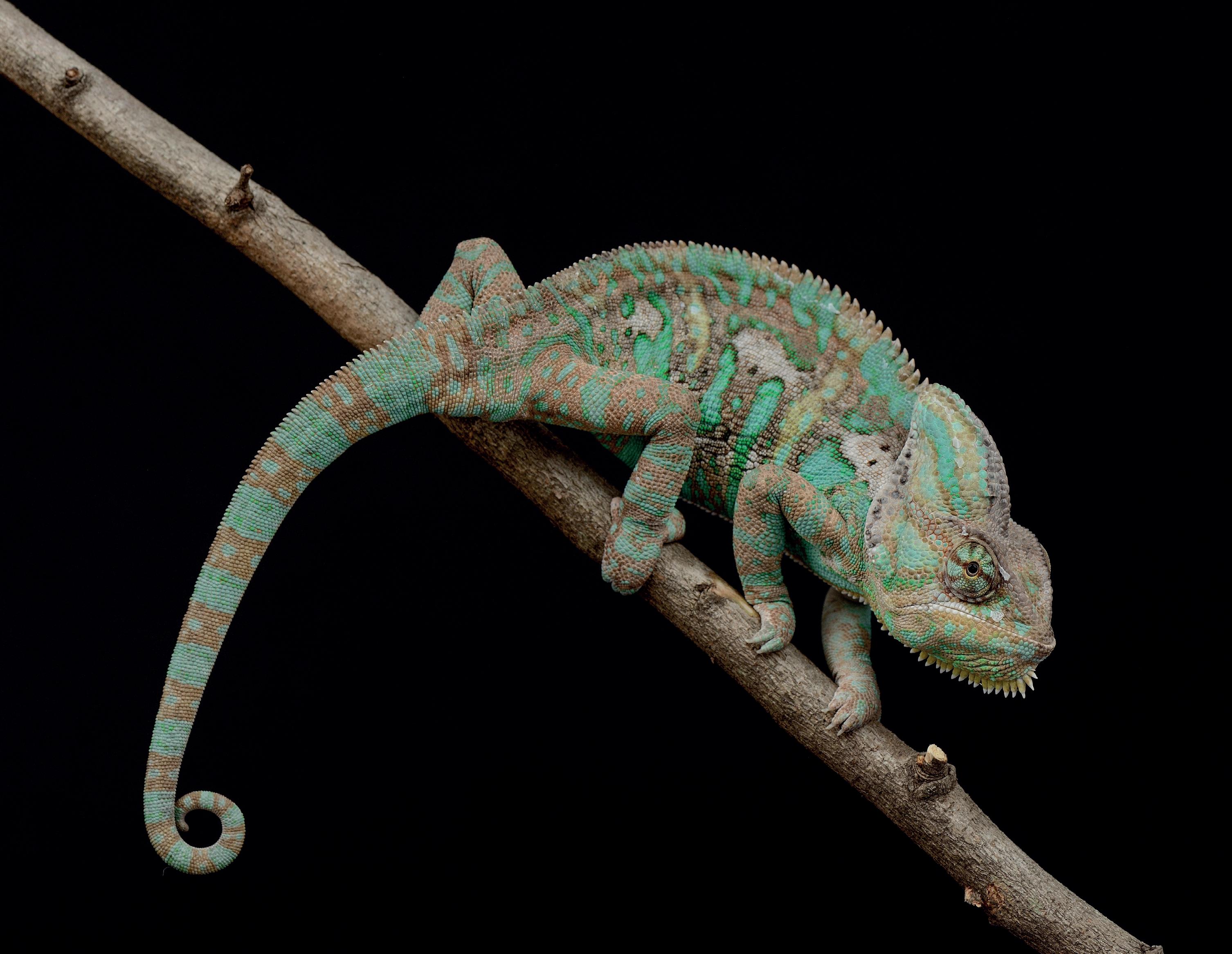
Luckily, many brands have already developed products to cater for this. Zoo Med, Reptile Systems and Exo-Terra have already launched calcium and vitamin supplements without D3. This means that a combination of ‘with D3’ and ‘without D3’ can be used to ensure the perfect balance. In fact, many keepers using good quality UVB lighting will almost always
opt for a vitamin/calcium supplement without D3 and use other supplements only if an animal requires it (such as being in a quarantine, or health assessment situation). Ultimately, science-backed species-specific research should be undertaken before any supplements are provided, but keepers should be aware that this research is only just catching up with the huge product development advances that have happened in recent years.
It should also be noted that vitamin D is technically a hormone. Animals will know how much vitamin D they require and thus adapt their UV exposure accordingly. If an animal has the choice to move away from a UVB light source, it can stop the amount of vitamin D it is synthesising and thus avoid an overdose. If a UVB and the heat source are combined and the spot is not warm enough, it forces the animal to spend too long underneath and absorb excessive UV, which then converts calcium into a harmful level of vitamin D.
JANUARY 2022 39
Veiled chameleons (Chamaeleo calyptratus)
Keeper Basics: Supplementation
Carotenoids and vitamin A
Some supplementations can come from the foods we naturally provide to our animals or their prey. Betacarotene is a type of carotenoid found in orange and yellow plant matter and leafy greens (carrots are a great example). When ingested naturally, these can be formed into vitamin A which is a key component in ensuring healthy epithelial tissue (surface layer skin) and is vital for growth, vision and reproduction in many species. However, vitamin A is extremely easy to overdose and can cause a lot of health complications if not provided correctly.
Carotenoids and Beta-carotene in particular, can be successfully converted to vitamin A naturally with absolutely no risk of overdosing in herbivorous reptiles. The body of many species such as bearded dragons will convert Beta-carotene into the required amount of vitamin A and excrete any excess in their waste. Feeding carotenoid-rich vegetables as well as feeder insects that have previously fed on carotenoid-rich vegetables is fine.
Other species do not convert beta-carotene into vitamin A very well. It is widely believed that most dart frog species struggle greatly with this conversion and must instead be supplied with a preformed vitamin A supplement (usually Retinol) to receive adequate nutrition. However, this should only be used very occasionally. Most suppliers of this type of product would label the correct portions and feeding schedules to ensure that animals do not overdose.
Other carotenoids are found in everyday multivitamins. Paprika and turmeric are chocked full of these pigments and are brilliant antioxidants which help develop the immune system of our pet reptiles and amphibians. Species specific research is required for keepers to ensure they are providing the very best spectrum of vitamins in minerals.
Gut loading
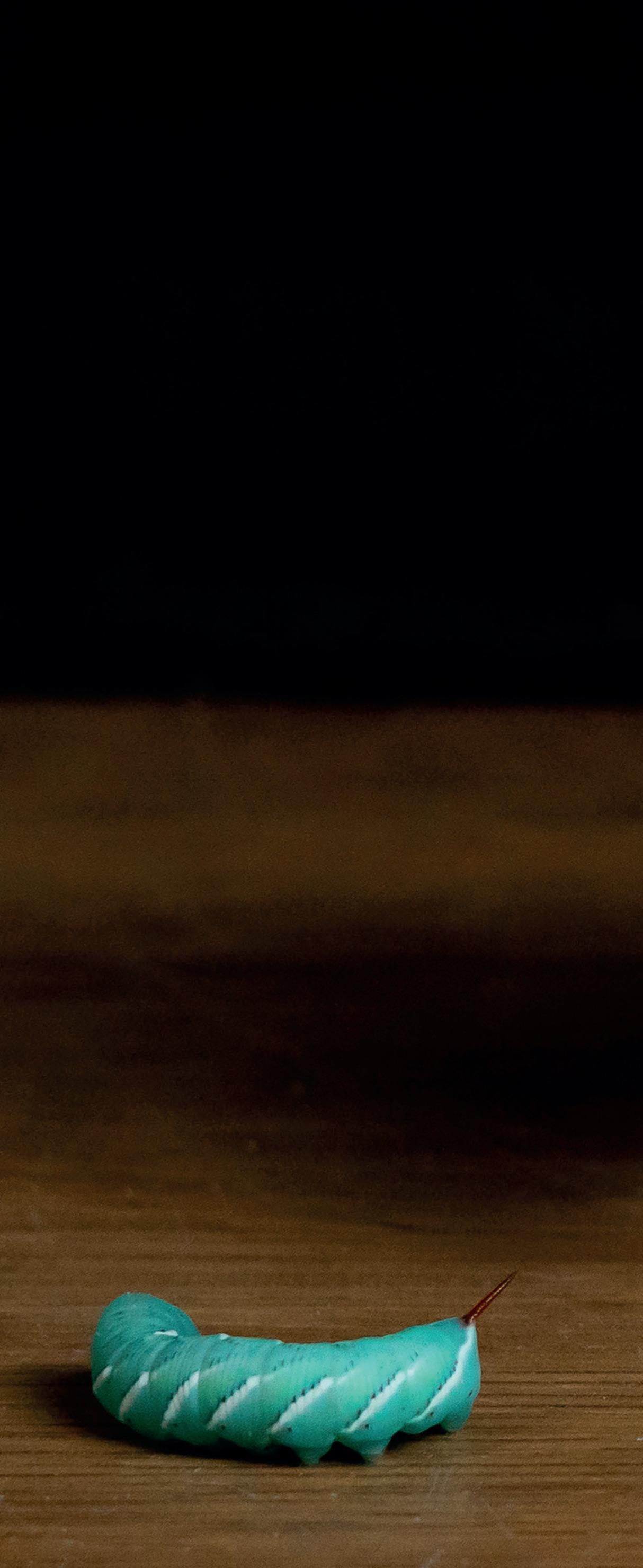
The nutrient profile of insects varies across species, but also across individuals. It is possible to understand the average amount of protein, fat, calcium, phosphorous, ash and trace elements of a certain species but this research is usually based on an insect having eaten a good diet within 48 hours of being analysed. Therefore, the feeder insects we buy from the shelves of pet shops, whilst often provided with some food source, will have most likely lost a lot of nutrients before they make it home to your animal. This is where gut-loading comes in.
Gut-loading formulas are available from various brands, ProRep do a range of bug grubs, hydration balls, gels, jelly pots and various other booster products to keep feeder insects as nutritious as possible. Fresh foods, especially carrots should be fed as a supplement to ensure that feeder insects are packed with nutrients, but ensure they are peeled and washed to reduce the risk of pesticides. Pet owners who only keep one animal and generally get through just a single tub of live food each week are more likely to see this process as a bit of a faff but keeping a schedule and maintaining feeder insect health underpins the nutrients a beloved pet receives in the long term.
40 JANUARY 2022
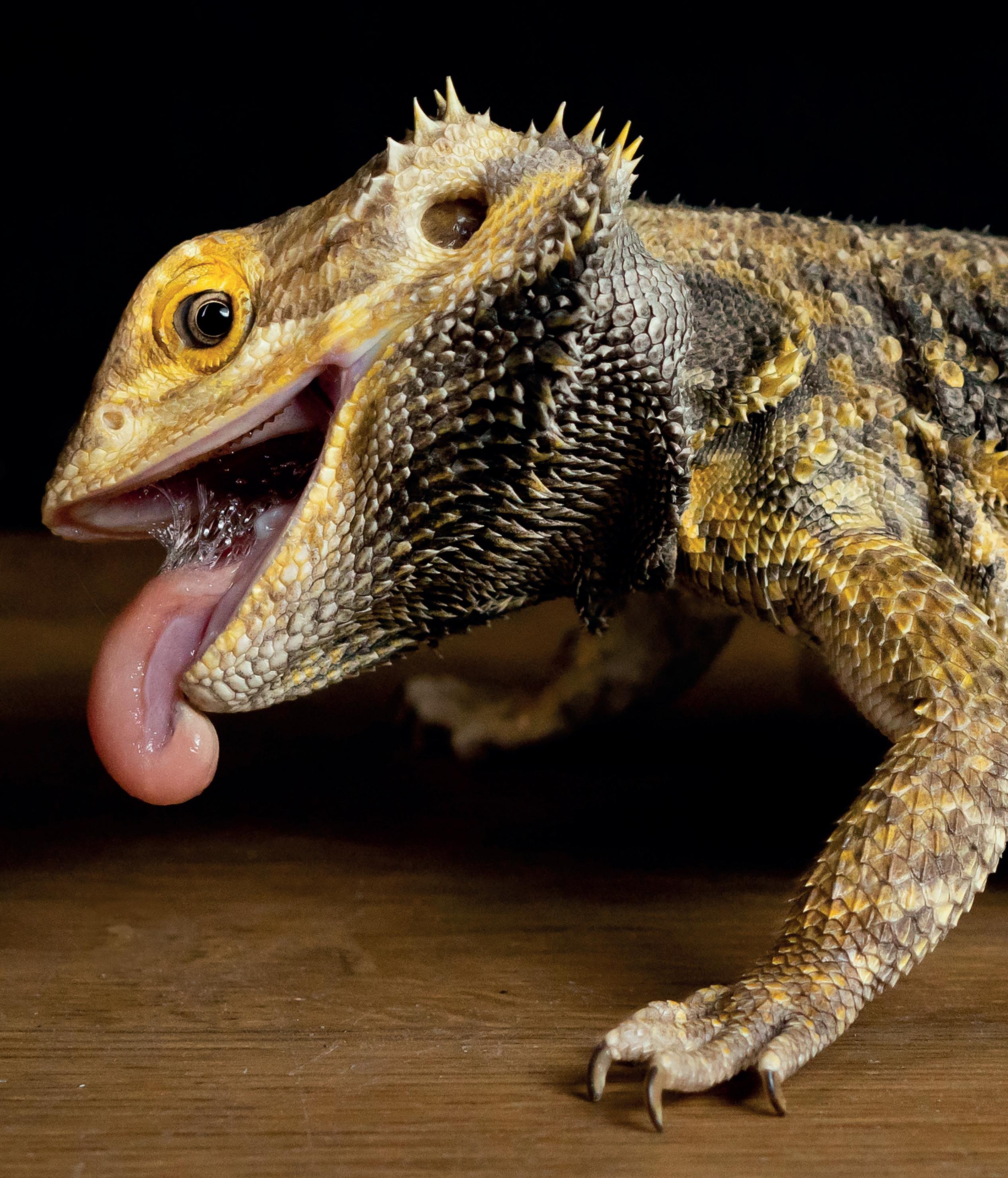
41 JANUARY 2022
Keeper Basics: Supplementation
Keeper Basics: Supplementation
Supplement storage
Every supplement that is comprised of various vitamins and minerals will eventually expire. Although this is unlikely to harm your reptile or amphibian, the concentration and effectiveness of the vitamins and minerals will slowly diminish. Although each product will have a slightly different shelf life, most will find their potency degrade after a year or two. For keepers working with lots of animals, this is rarely a problem but bulk-buyers looking to care for a single pet might find themselves with supplements passed there best before date. If this is the case, it needs replacing.
Tips to preserve supplements include: keeping the supplement refrigerated, avoiding any moisture or humidity getting into the container and avoiding direct sunlight. Supplements should also never be fed to feeder
insects, as certain species will metabolise certain vitamins differently, leading to potentially harmful imbalances. Instead, use a branded gut-loading formula as insect food. Finally, try to replace opened supplements every 6 months. Usually, the expiry dates on these products will be years away, but this is generally on the basis that the product is unopened and refrigerated. The average user should replace their supplement much more frequently.
This should also be noted for the foods of other taxa. For example, Psittacus’ complete diets are formulated to such specific quantities of the correct amounts of every vitamin, mineral and trace element, that they can be sun sensitive. Leaving any formulated animal food or supplement in incorrect conditions can alter the product very slightly, which undermines the extensive research behind the recipe. If in doubt, throw it out.

42 JANUARY 2022


DRY FOODS, FORMULAS & SUPPLEMENTS

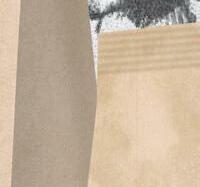









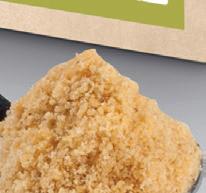


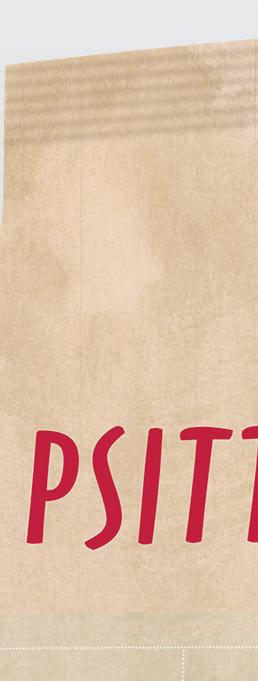








Not all parrot food is created equal. The Psi�acus range of complete parrot foods features over 50 dis�nct products which are widely regarded as the best on the market.
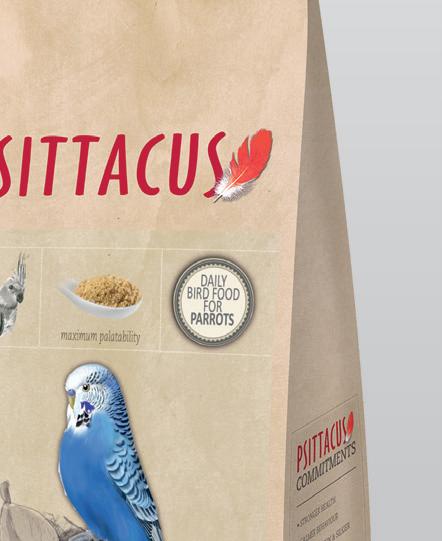







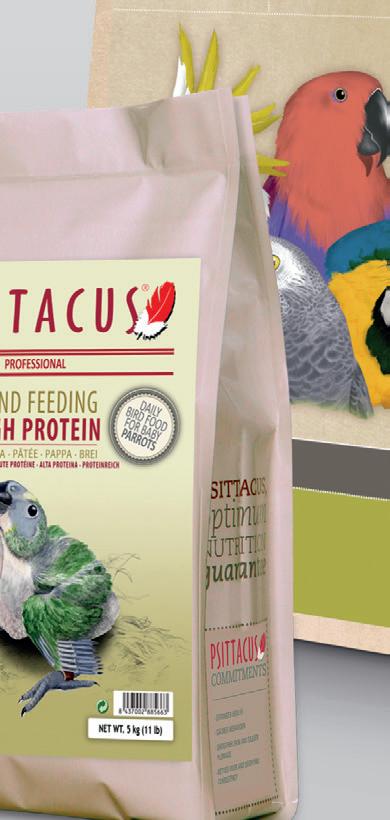
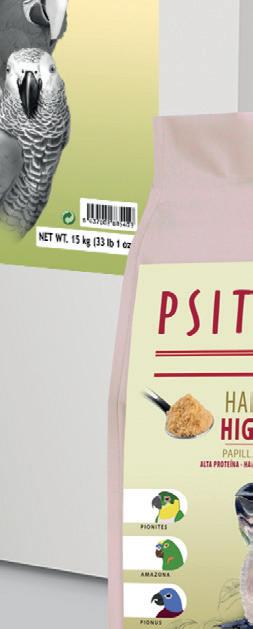



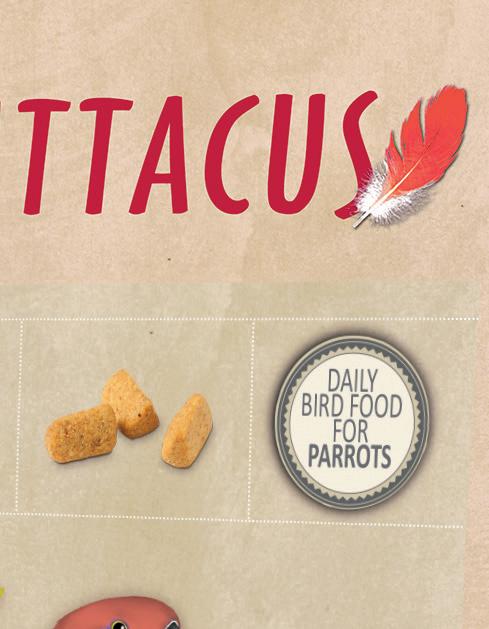


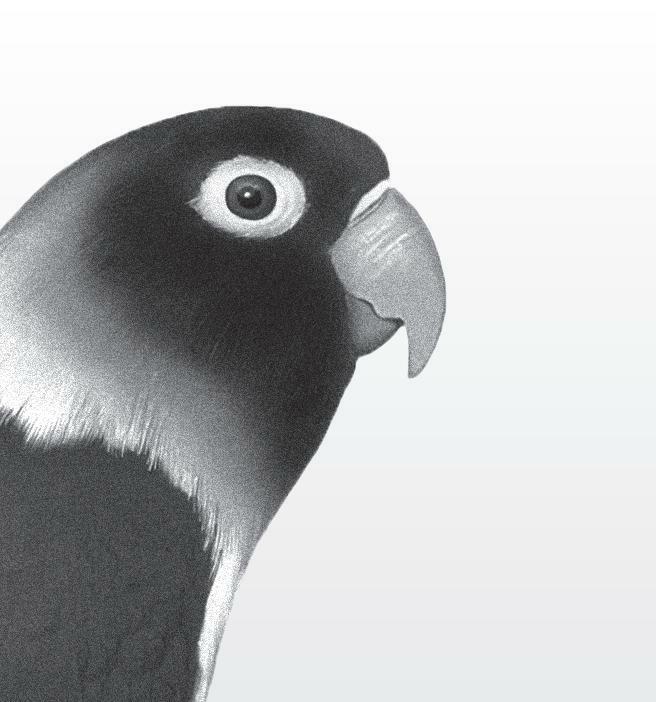
For over 20 years Psi�acus have developed and refined the range at their dedicated research laboratory and extensive breeding facility, along with collabora�on with other respected breeding centres.










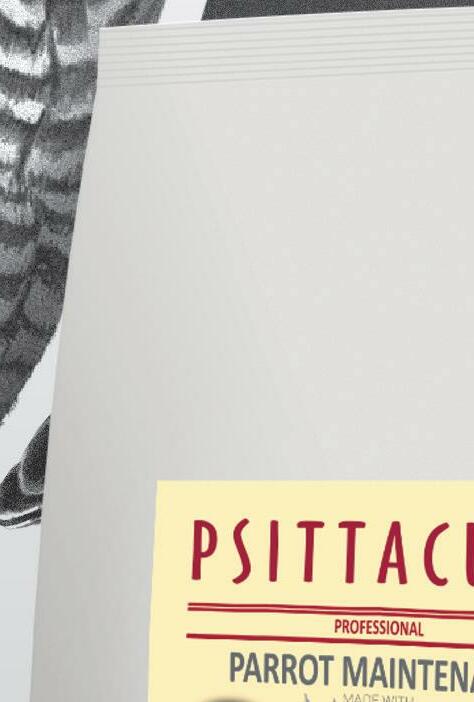

The result is a range of pelleted complete diets with proven benefits including: Speed of growth of the young, its weight and overall development | Improved appetite and increased daily consumption Improved digestive processes | Prevention of the bacterial and fungal proliferations in the craw Improved plumage quality, general appearance and behaviour | Improved reproductive success


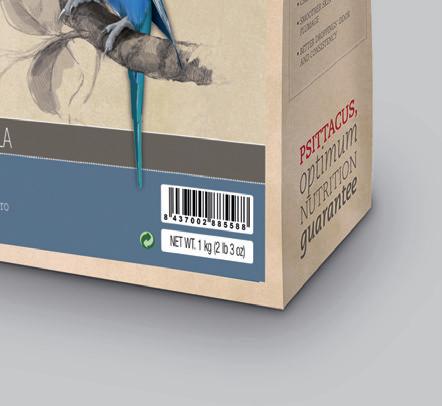

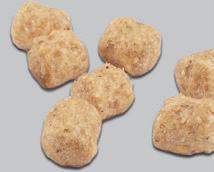






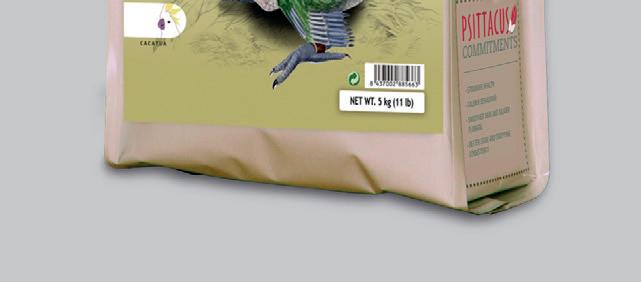


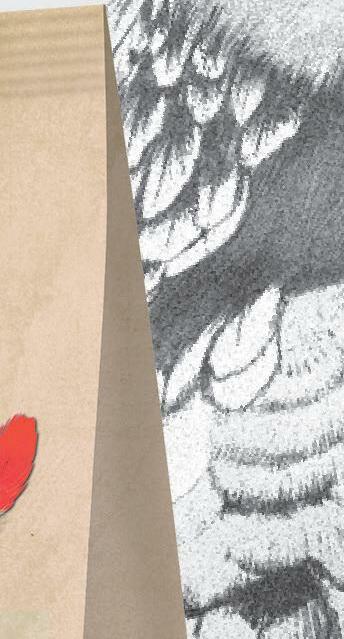

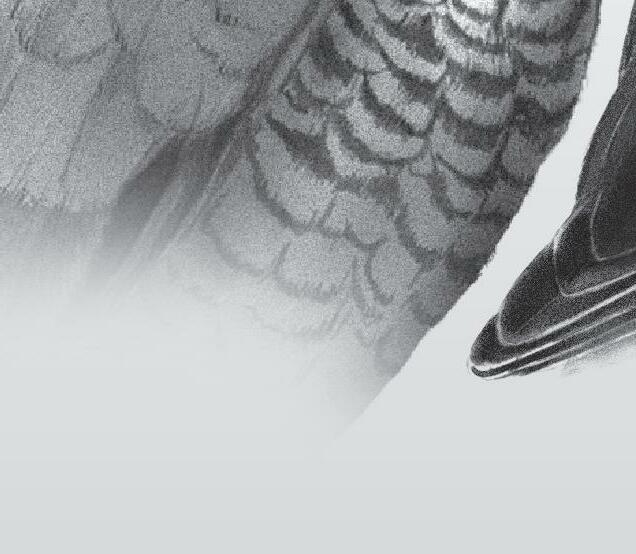
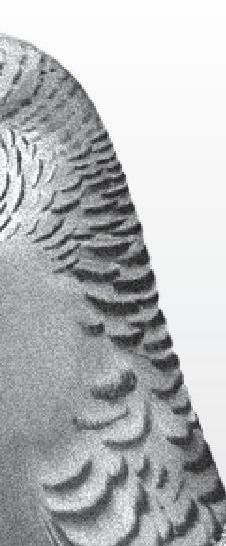
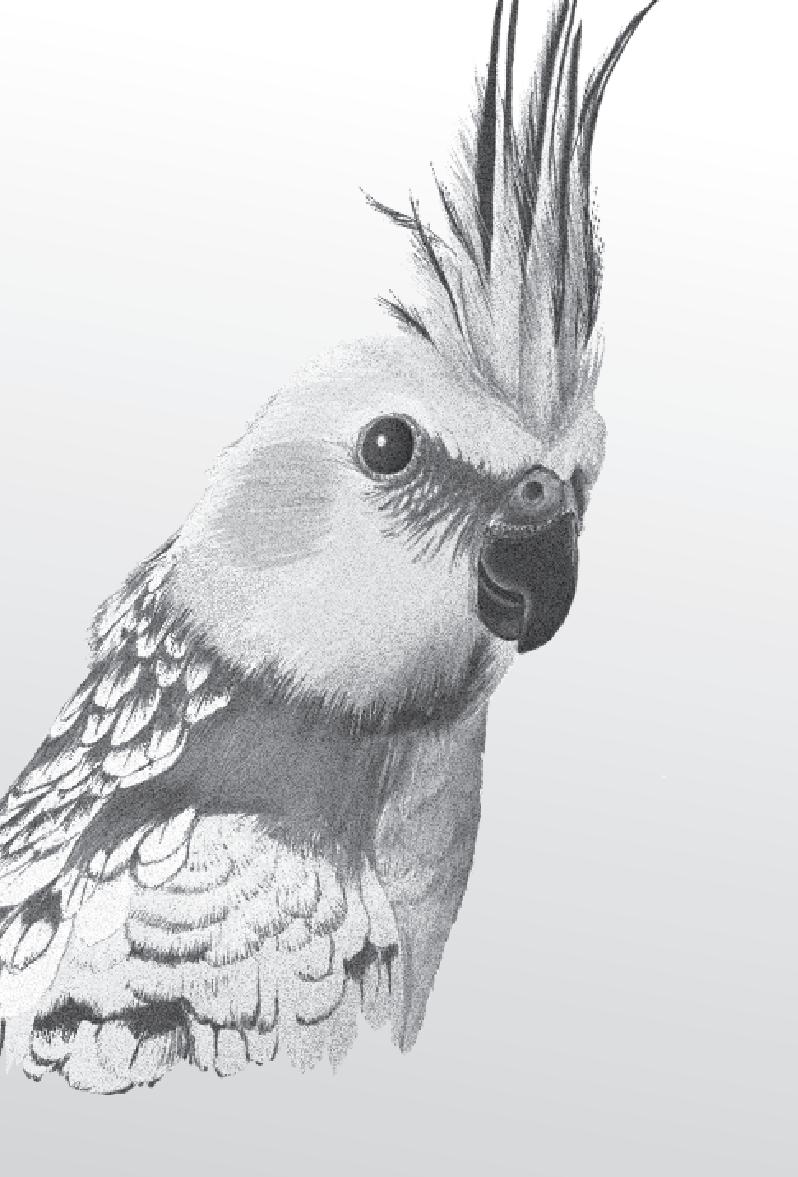




44 JANUARY 2022
FASCINATING FACT
Calci-worms for dinner?
Black soldier fly larvae, whilst well-established as a popular feeder insect for our animals, could soon be making it to our own plates.
The larvae of the black soldier fly (Hermetia illucens), sometimes referred to as ‘calci-worms’ contains more iron and zinc than lean meat and more calcium than meat. The much eco-friendlier way of farming yields many times the protein of cattle-grazing or even growing soybeans.
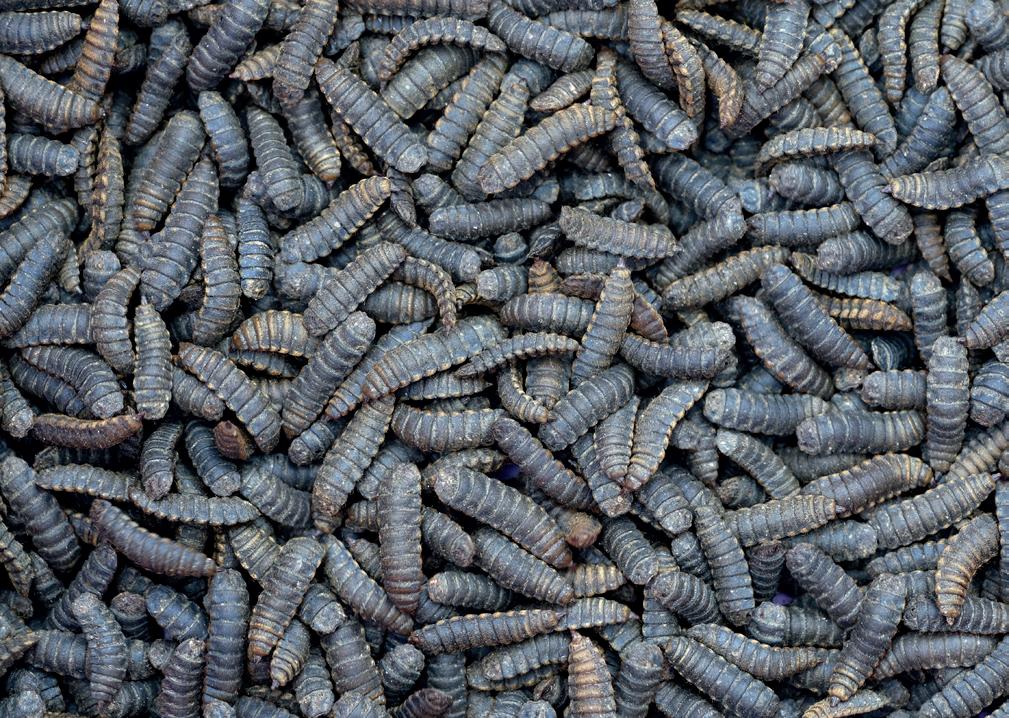
New research by Leah W. Bessa et al at the University of Queensland has analysed the potential for utilising these insects in human diets in the aftermath of the COVID-19 pandemic. With over 2 billion people already consuming insects as part of their diet, the cultural barriers preventing this new diet option in the West, whilst deep-rooted, may begin to crumble as we are exposed to the benefits of consuming insects.
Their research confirmed:
• 0.5 hectares of black soldier fly larvae farming can produce more protein than cattle grazing on around 1200 hectares of farmland or 52 hectares of soybeans.
• The macro and micronutrient composition is excellent for human consumption.
• The chitin content, while difficult to digest for some species, acts as a valuable fibre in the human body.
• The nutritional composition of the larvae changes drastically over time, allowing them to be harvested at the ideal times to be utilised for specific purposes including food, processed protein, butter and fat alternatives.
• Up to 50%-70% of lipid contents can be effectively utilised to create butter substitutes.
• Insects can be used to make beef patties and sausages and were rated well by consumers against vegetarian patties.
• Black soldier fly larvae can play an important role in breaking down organic matter. This matter/substrate can be altered to change the nutritional composition of the larvae.
However, there are also certain barriers preventing the bug boom.
• Larvae would have to be reared on clean ‘waste’ to prevent harmful levels of heavy metal uptake and these would have to be monitored rigorously.
• Larvae are innately decomposers, meaning there is a risk of microbial colonies in the substrate which could potentially be harmful.
• Although insect chitin is a promising alternative to crustaceans, it can still cause allergic reactions in some individuals.
The promising research may be the start of new things to come. However, a new surge in consuming bugs in the West is highly unlikely. An analysis of cultural exposure helped identify patterns in insect consumption. For example, Thai consumers were repulsed at the thought of consuming mealworms. Equally, Kenyan consumers found termites to be familiar, but mealworms to be disgusting. However, Dutch consumers found mealworms to be the most culturally acceptable insect to eat. Chinese consumers preferred to eat their insects whole, but Westerners preferred them to be processed and disguised in other foods.
Bessa concludes: “Although consuming BSFL, among other insect species, may be a controversial topic in the Western culture met with disgust and apprehension, cultural attitudes and preferences can change. In order to normalize BSFL, farmers and producers need to create and maintain a constant, inexpensive supply of BSFL-based products making them readily available for consumers to try at will. BSFL has the potential to become an accessible and inexpensive insect species; however, there needs to be a strong drive to shift their role from only an animal feed option to that of a viable human food source.”
“Understanding the functional properties of BSFL will allow for optimization of processing parameters to ensure that products of good quality and sensory properties can be produced, which is the most important aspect determining consumer acceptance. Last, the farming of BSFL specifically for human consumption needs to be developed and optimized to create a low-priced, safe, and standardized supply of BSFL that will make the development and use of BSFL desirable in the food industry.”
Source: Bessa LW, Pieterse E, Marais J, Hoffman LC. Why for feed and not for human consumption? The black soldier fly larvae. Compr Rev Food Sci Food Saf. 2020;19 2747-2763
45 JANUARY 2022 Fascinating Fact
ENRICHMENT IDEAS
Tactile Enrichment
Enrichment is the pinnacle of good animal welfare. It converts husbandry goals from “keeping an animal alive”, to “allowing the animal to thrive”. Enrichment is a broad term and a multi-faceted approach is key. Enrichment doesn’t just benefit the animal but gives us keepers new and exciting ways to interact or observe our animals. In this new monthly feature, EK discusses some of the best enrichment ideas that are being used today. Please submit your own ideas to thomas@exoticskeeper.com
1. Snake climbing boards
Most snakes enjoy at least a bit of climbing. Dedicated keepers have long been creating ‘climbing boards’ with a sheet of wood and protruding dowels to allow snakes to navigate their way vertically up the structure. These sheets can be placed horizontally too, which prompts the snake to navigate through the dowels towards the other side. Those that are DIY minded can attach ProRep texturing compound, as well as sealants with coir, sand and various other substrates to make the board as interesting as possible. Tunnels, boxes and scent trails can be utilised to make an entire playground for the snake. This can provide hours of entertainment for both the snake and the keeper and also build DIY skills without the pressure of it needing to be perfect. The more inconsistent, the better!
2. Brush stations
Brush stations offer a valuable resource far beyond the outright adorable behaviour they bring out in our tortoises. Brush stations can be created by utilising thick-bristled brushes attached to either the side of an enclosure/pen or by adding several brushes to a frame for the tortoise to walk through (almost like a drive-thru car wash). They work in a similar way to a car wash, providing tactile enrichment
whilst also giving the shell a good scrub at the animal’s discretion. Brush stations can also provide great enrichment opportunities for other species, giving them an unusual surface to explore or scratch against.
3. Mixed substrate
We tend to assign certain substrates to certain species. When setting up an enclosure, this is usually for good reason and a staple choice is always recommended. However, species such as tortoises can benefit from a range of additional tactile elements to their substrate including slate, stones, mosses, sandy areas, edible bedding, and more. Other species might find some great enrichment in the form of leaflitter, seed pods or loose sphagnum moss.
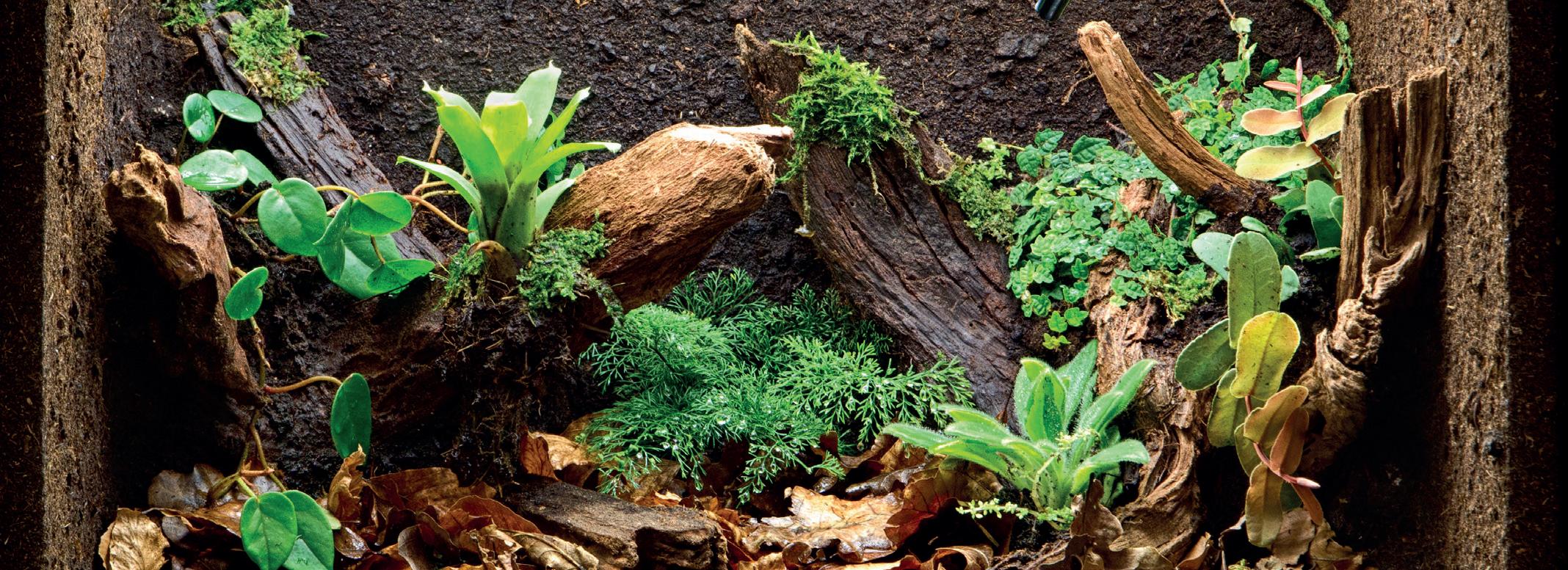
4. Rough perch
By placing a rough perch close to the feeding area in a parrot cage, it allows the animal to not only keep a tight grip while they feed but also clean and sharpen their beak as they go. Rough surfaces offer self-maintenance opportunities for a variety of taxa, including shedding, claw-filing and beak sharpening. Depending on the species, consider installing at least one rough surface to an enclosure.
5. Enrichment box/enclosure
As well as taking our animals outside during warm days, keepers with a spare terrarium, fish tank or even cardboard box can create a completely different enclosure for their animal. Tall, planted (or artificial) grass, deep layers of loose substrate or lignocel, or even boxes full of ‘packing peanuts’ can provide great entertainment for many snakes, whilst keepers can easily keep an eye on them.
46 JANUARY 2022
Enrichment Ideas




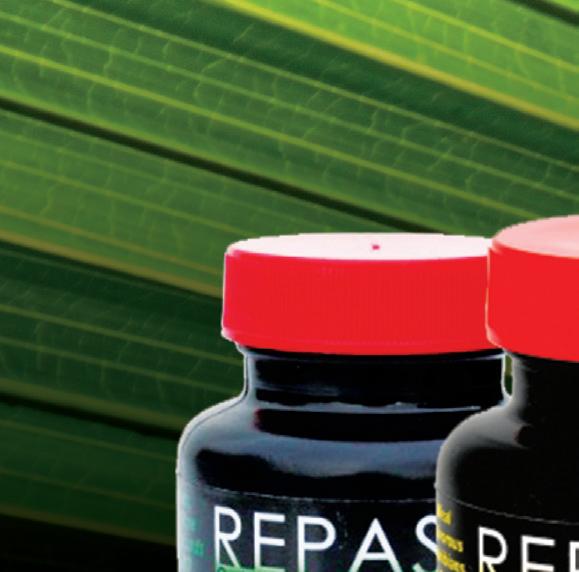
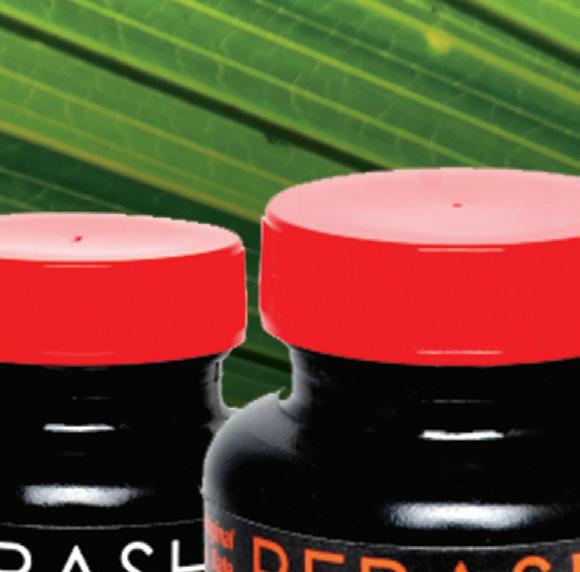

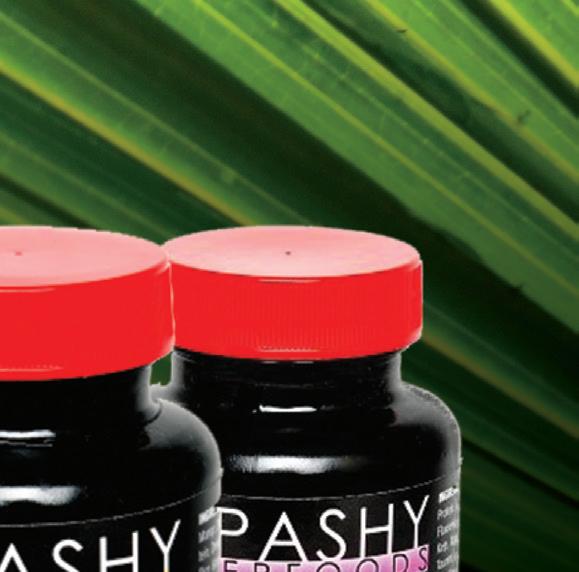



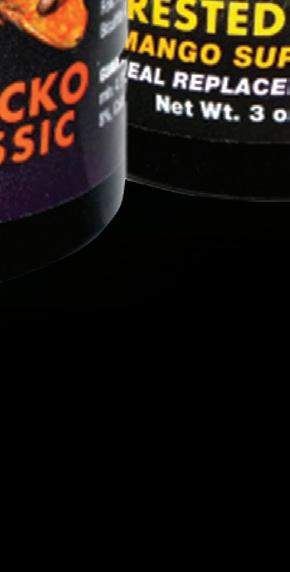










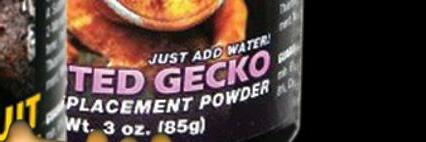
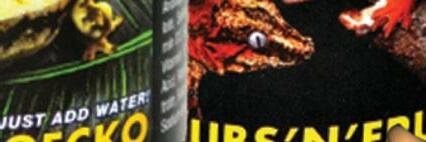
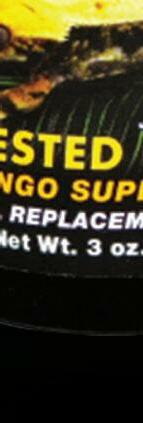
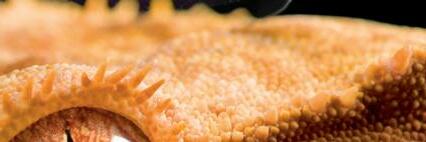


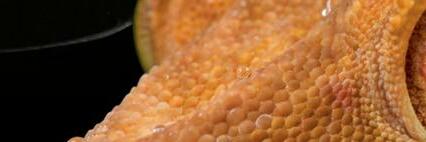
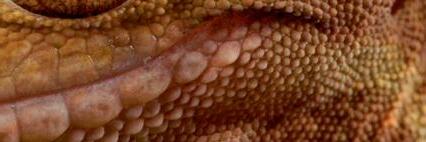
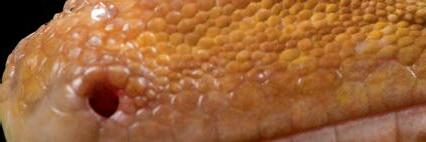

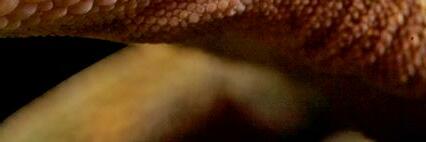










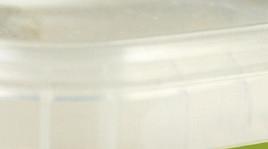



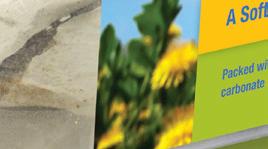








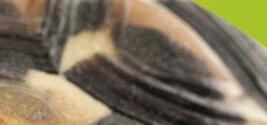



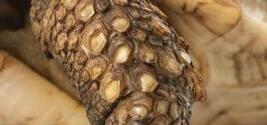
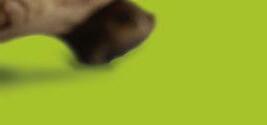
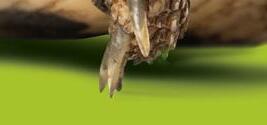











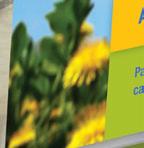
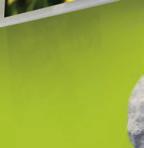


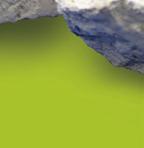
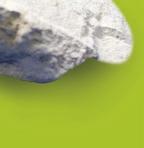




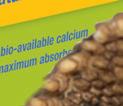
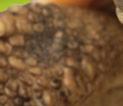
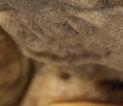
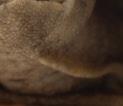
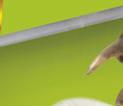
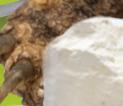

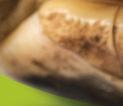
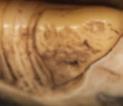





Title SPECIALITY PET PRODUCTS With 20 years of research and development Repashy Superfoods have refined the ultimate range of premix reptile diets, inset gutload formulas and supplements. Fortified with vitamins, trace elements and minerals. Tortoise Calcium Blocks A Soft and Natural Source of Calcium Packed with a highly bio-available calcium carbonate to ensure maximum absorbency in the gut. www.pro-rep.co.uk 1Kg LIFE S ERIES PROREP
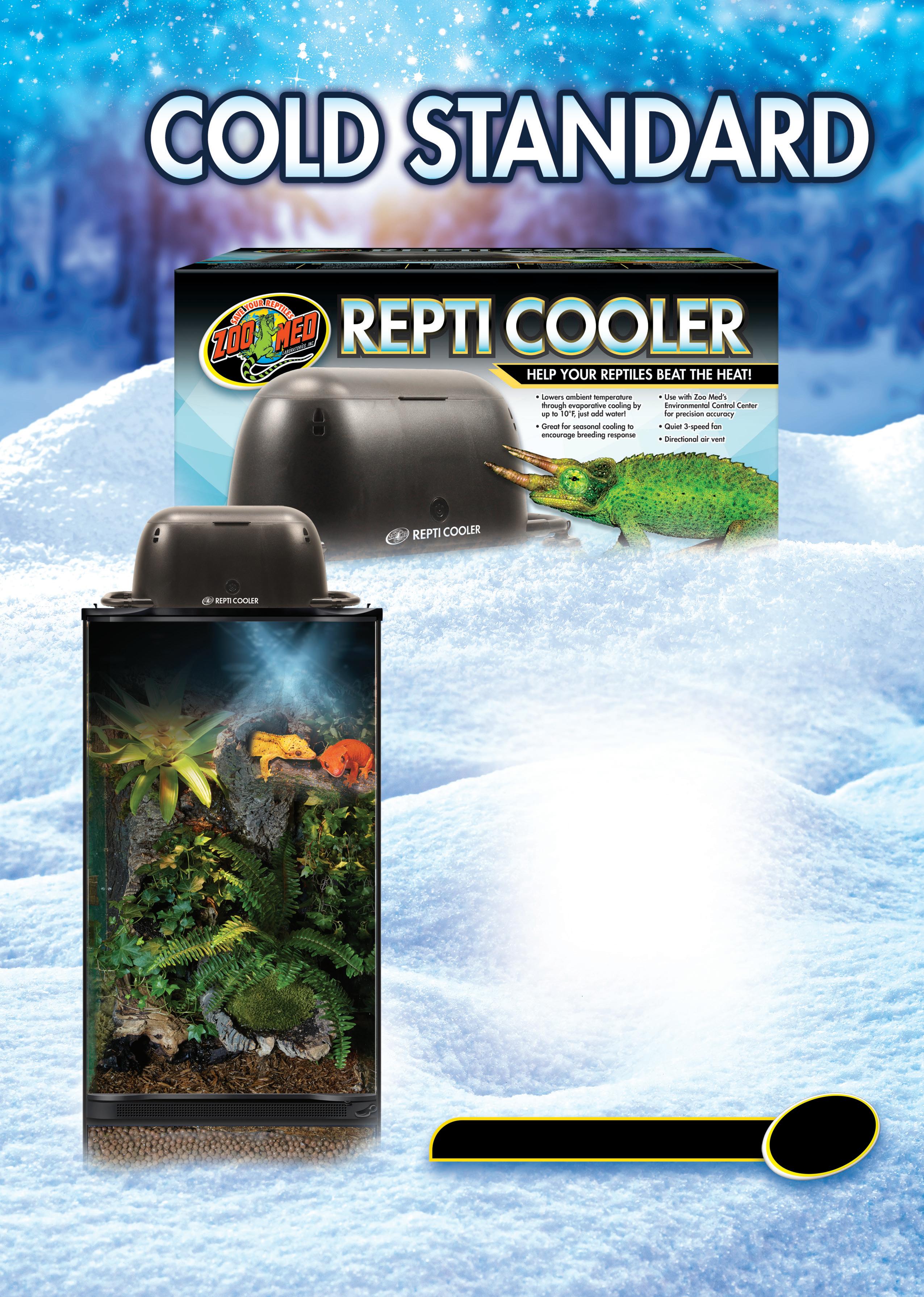



























 Peacock jumping spider (Maratus tasmanicus)
Peacock jumping spider (Maratus tasmanicus)


























































 Central bearded dragon (Pogona vitticeps)
Central bearded dragon (Pogona vitticeps)















 Leopard Gecko (Eublepharis macularius)
Leopard Gecko (Eublepharis macularius)
























































































































































































































